










HAYBURNER PLUS INDEPENDENT CLASSIC VW & PORSCHE MAGAZINE ISSUE 47 - 2023 £5.99
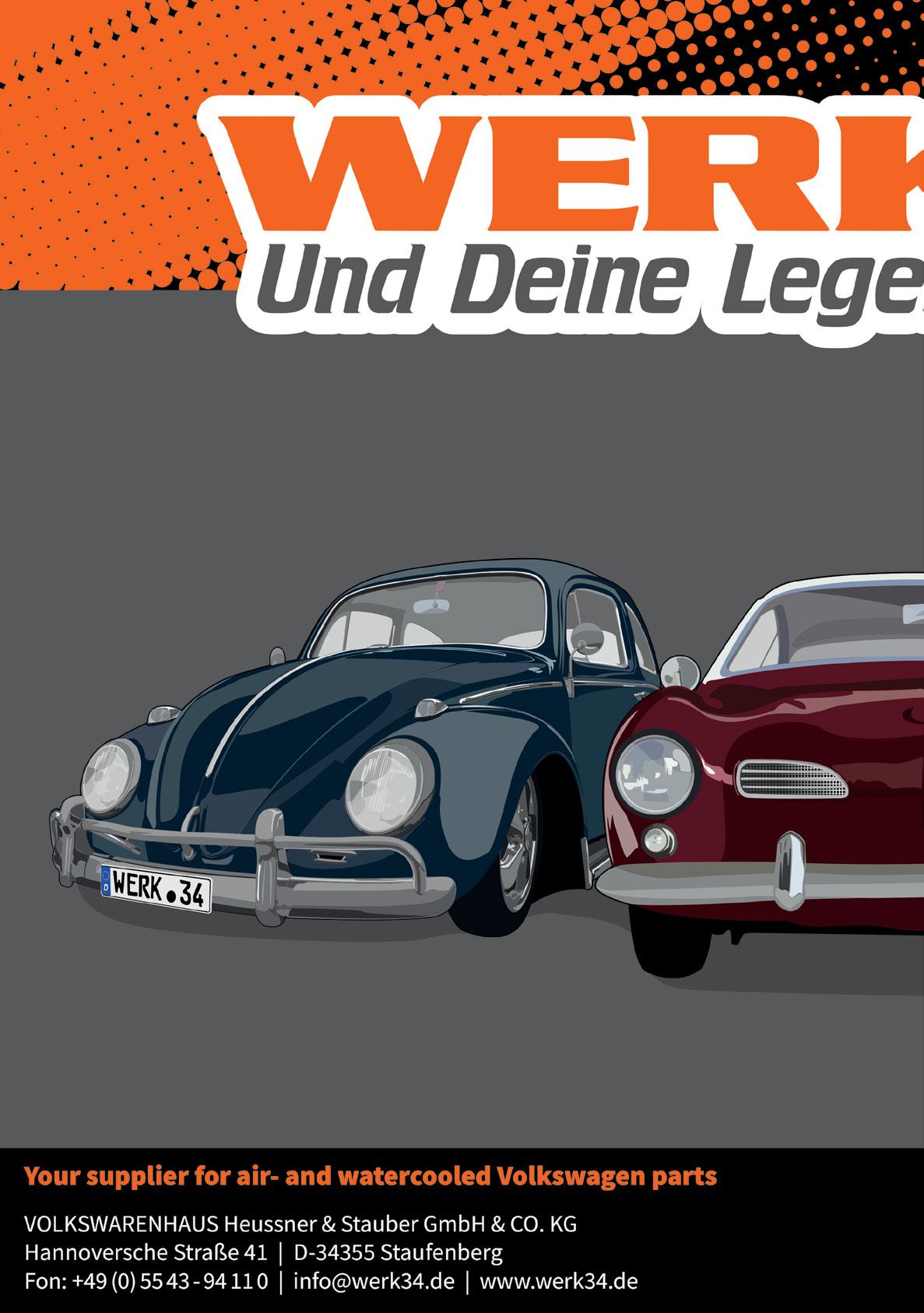




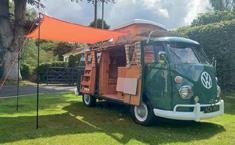

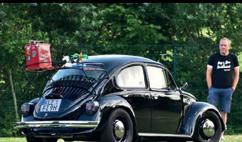





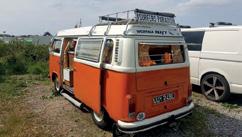


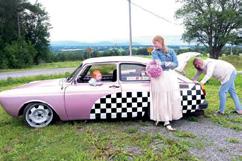







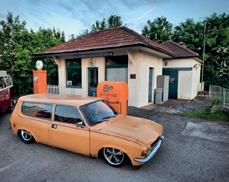


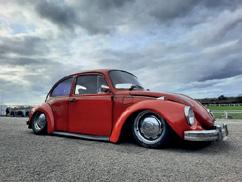



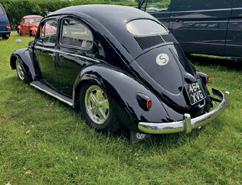
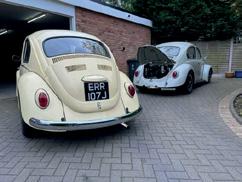



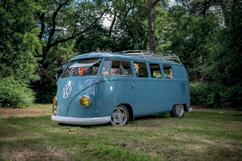









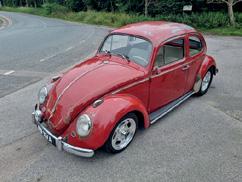







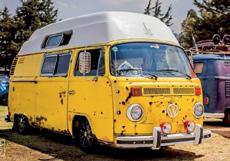


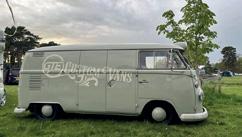
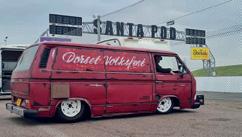









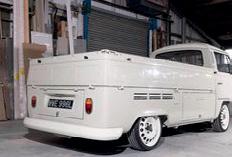






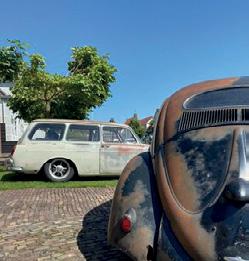





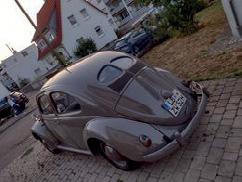


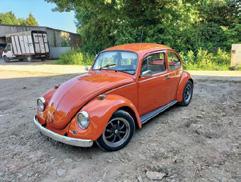

















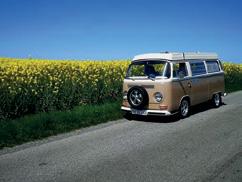





Butty’s Bits
SJ Bowles Coach Trim
Sticker Blimp



Mad Matz

Paruzzi
FiftySixDelux

Muddy Fields
MCJ
Es Autos
Aircooled Auto Elec
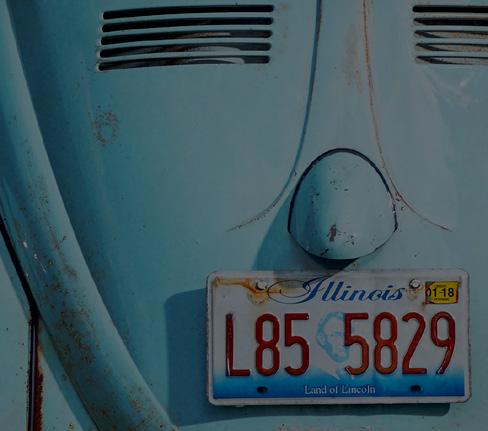

Oil Can Stickers
Deluxe Resto
Retro Classic Clothing

Wonky Donkey
Emporium
VW Aircooled Works
Concept Poptops

Evil Bens


German Junkies
Aircooled Accessories


Growl & Grandeur

Rarebreed

Photography
Beetlelink
Border Restorations

Camper
Revamper
Geek Shack
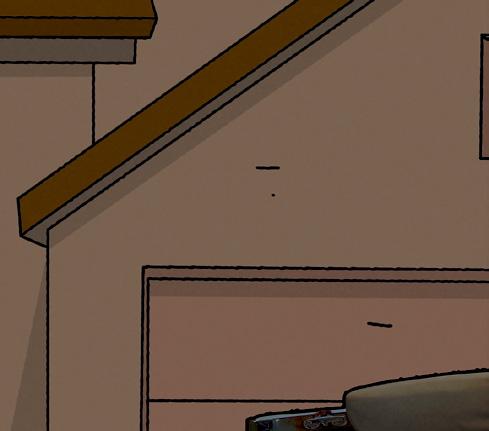

Peak Van Conversions
Rack Shack
OB1 Clothing

Johnson Autoworks











Rusty Lee
The VW Engine Company
Absolute VW Joe Blow
Front Cover by Dan Du Cros
With special thanks to all the guys at HR Autoworks, Hubert Tilley, James Peene, Ben & Jen Robertson, ThreeFiftySix, Jo & Paul Archer, Kenneth Anno, Matt Balls, Neil @ Toad Transport, Raphael Meyer, Devo Chiedere Al, Pete Marshall, Jonny Abbott, Nick Chivers, Indra Hernandi, Kustomfest & Rais Maulana, Robert “Rorky” O’Rourke, Chris Wilburn, Jole Coupland, Micheal Gross, Andrea Camilleri all in RSVP, Collin Miles, Craig Pearson, Joshua Smith, Marrion Taggart, Ryan Cox, Terrence Merde, Jonny Marriage, Nook_2m, Eric Deen, Tania & Russ, Chris Pruden, Travis Illicit, Lynne Kendall-Torey, Vic & Ed Skellett, Cazz Foster, Rikki James, Teresa & Georgina Iwasiuk, Trint Eastwood, Mark Hutchison, Rob Amos, Alex & Lou Leiserach, Mark Thurston & Wendy Clegg, Nell Baker, Sam Lindsay, Dan Morrissey, Stevo, Brian Galpin, Bryan Moody, Lew Savage, Amy Gordon, Nick Gatt, Craig Petty, Eric Arnold, Frederic Peeters, Pete, Cobbe, Toby Lee, Heiko & Liv, Lloyd Jackson,
Central England Automotive Autowares

Delilah’s Garage 87
SGS Aircooled
CohPro


Europl8

N2 Engineering


Kinky Mick BusOK


94 Bruce Rusty’s Garage

Tish & Jack, Ashley Gratton, Joni Makepeace, Rob Mullner, Brett Elesmore, Graham Wells, Dave Mlynski, PJ Gibbons, Ian and Sophie at Es Autos, Joss Ashley, Elfin and Indie, Jess & Si Medlicott, Ali Du Cros, Giles Marchant, Steve Walker, Orb and Izzie, Kenneth Anno, Lee Skelton, Steve Gosling, Mark Reynolds, Josh Reynolds, Joe Halliday, Barbara Faux, Trevor Sharp, The Lovely Cheryl Dilley, Sally & Toby Walker, Helen & James Waller, Johnathan Kennedy, Jasper Tattersall, Gilbert, Drummer Matt, Danny Lord, Seaside Neil & Lyn, Jo Pro, Reg Baxter, Honor Auld, Bill Pollard, Chez Williams, Markus Hoffman, Ben and Mo Laughton, Alan Scott, Ben O’Brien, Gary Kennedy, The Carter Bros, Scott Mitchell, Ian Wheeler, Techno Hippy, Ben Foot, Mark & Odette Watts, Mark & Amanda, Rich Whitlock, Moe Moore, Maurice Klok, Jeffrey Van Duin, Angie Simmons, Stephan Spruyt, Lee Turner, Mike Coe, Grum & Leanne, Colleen McCullum, Steve Parsons, Claude Schaub, Brian Burrows, 10 Foot Doug, Will Faux, Randy & Vanessa Carlson, Barry Morrissey & Ewan McGregor.
And to everyone who has submitted, contributed and supported us, none of this could have been done without you. Thank you.
Empi US
Adrian Flux
Dub Fab

VW Trends

JP Group
JF Bodyworks
VDub Radio



ReCoventry Ltd.





Funky VW NL
Kompressorhaus
R3 Garage
Robertson Restos


Autocraft
Doncaster
VW Show
RetroDub Suffolk
Wilton Bradley
Run To The Sun
Old Skool Dubz
CJ Motors

Suffolk Bugrs AutoJumble



SUDFUNK WEDGE
We didn’t know if everything was going to fall apart. Then I saw a post on social media saying that Gene was selling some of his collection at very reasonable prices. SUDFUNK was once again available.
DAILY TO DRAGSTER
He didn’t need to restrain himself anymore; the gloves could come off. High power and low weight = more speed.






The story of this Wedge’s journey doesn’t begin with Harold. It begins with Just Kampers’ Pete Dempsey, who originally found and then body-dropped this stunning example.
SURVIVOR
Everyone reading this dreams of a barn find. Pulling back a creaky old door to find a slice of aircooled treasure thickly coated in dust is the dream score.




PROJECT ‘49



Instead of the regular editors letter (which I really don’t want to write anyway) Athis is a chatch up on my own personal project.

GO ANYWHERE
A decade of tensing up for every bump in the road has become a bit of a chore for some, and we seem to be seeing more and more stock height or even raised vehicles.
TREKKER CABRIO
I also bought it unseen. It, to me at least, was a time before scams were endemic. I knew that the semaphores alone were worth a third of what I was paying, so I decided to go for it. I was literally in the VW museum when I called up and did the deal. Excited? I nearly burst!
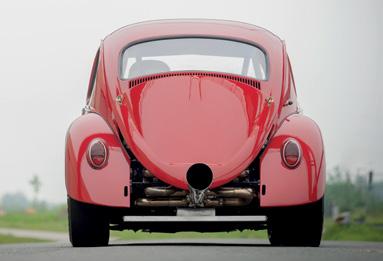

I’ve always wanted a Trekker. I have young childhood memories of a gloss black one riding around RTTS with the windscreen down and doors off. It looked rad.

Copyright © 2023 by Hayburner Limited. All rights reserved. This magazine or any portion thereof may not be reproduced or used in any manner whatsoever without the express written permission of the editor, except for the use of brief quotations. Operations Manager - Vic Faux Editor-In-Chief -& Founding Editor - Ned Faux
109
128 68 32
HAYBURNERPLUS HARDCOPYONLY Subscribehere
170
88
160 186
I wanted the car to be slammed. It really can’t get any lower. It’s on an airride set up with flat pans and rear tubs. It uses Boudin air shocks front and rear.
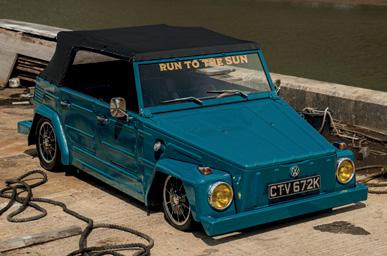
Condition-wise, Gary summed it up in a way we can all relate to: “Proper fucked!, even for us”.




If you open a car door, please shut it again so the next visitor can get the same experience as you did!! For info: after about 30 burglaries this year I’m fed up with it! I’ve made traps in the buildings so if you get hurt or die, I DON’T CARE!

Everyone believes their VW bus is special – but from the moment we set eyes on our 1976 Australian Dormobile, we knew it had a secret story to tell.




The seller was in Canada, had no more photos, and that the bus was stuck on top of a pile of logs in a forest.

The car was initially conceived to compete in the Berlin-Rome car race, a high-profile event initiated by the Nazi regime




Newsstand distribution – www.magazineheavendirect.com The editor or Hayburne LTD gives no warrantees, assurances or guarantees and makes no representations concerning any services or goods advertised or featured in this magazine. Hayburner Plus is Printed in the UK. We hope you enjoy Issue 47 of Hayburner Magazine. SIC, SIK, OR SICK 1954 THE QUEBEC DELUXE OUTBACK FORGOTTEN TYPE64 2X - DOUBLE PHOTOPAGES 78 - SIXTYSEVEN 64 - 99 PROBLEMS 27 - SHOW CALENDAR 96 - AIR-COOLED COLORING 140 - NOT A REAL PORSCHE?
150 52 18 120 100 42 HAYBURNERPLUS HARDCOPYONLY Subscribehere HAYBURNERPLUS HARDCOPYONLY Subscribehere HAYBURNERPLUS HARDCOPYONLY Subscribehere
03101
SEAT
This knob is used as a handle for the adjustment of the backrest for the Beetle from 8.1972 to 7.1975 and up to and including 7.1972 as a handle for the longitudinal adjustment of the seat.


04271
CLUTCH PEDAL SHAFT

If the rubber does not fit properly to the body it will leak, with preformed corners the rubber fits perfectly to the body making leakage impossible.
05682
LONG SWITCH LAMP SOCKET
We had the short version in our assortment for quite some time under part number 12682 and now also the long version. Supplied per pair without bulbs.


VOLKSWAGEN VANAGON STOCK COIL SPRINGS






We had for the VW Vanagon only the rear springs in our assortment under number 71386 and only for the non Syncro models. Besides the front springs for the non Syncro models we now also have the front and rear springs specifically for the Syncro. With this addition we can provide every VW Vanagon with a set of new standard springs. Are supplied individually, although it is advisable to replace both left and right simultaneously.
07113
VENT WINDOW PIVOT PINS



WESTFALIA CURTAIN TIE BACK



WESTFALIA CURTAIN PROTECTION

In order not to soil the curtains above the sliding door and to ensure that the sliding door does not take the curtain with it, Westfalia models are equipped with a plastic strip above the sliding door.

DIFFERENTIAL BEARING LOCKS
The plastic differential bearing ring protection caps will tear irrevocably if the original locking plates are not used. You could reuse the old plates, but it’s not wise.
New
from Paruzzi Est 1989 PARUZZI.COM ClassiC Car Parts Hayburner Magazine edition #47 © www.Paruzzi.com www.Paruzzi.com - www.Paruzzi.nl - www.Paruzzi.fr - www.Paruzzi.be www.Paruzzi.se - www.Paruzzi.no - www.Paruzzi.fi - www.Paruzzi.pt
parts
RAILS OR BACK REST KNOBS
29161 21430
71392 / 71393 / 71394
We already had them in white and beige and now also in black. Are supplied in pairs including parker screws for mounting. 29147
The vent windows on the Beetle 1303 convertible pivot at the top on hinge pins that screw into the metal part (which is clamped to the glass).



Ben Laughton never intended to buy this bus. I’m pretty sure that’s a statement that will resonate with many readers as they ponder the money pit currently residing on their driveway or in their garage. And yet, here it is in all its glory –fully resurrected from the rusty pile that ended up in his garage back in 2019, and now transformed into a pretty damn amazing-looking ride! So, just how did all this come about?

Ben first spotted this rare, February 1955 Barndoor Deluxe, advertised on thesamba.com in November 2017. The advert itself was pretty ambiguous, its title “look like a 23 window … make an offer”, barely expanded upon in the one-photo advert to explain that the seller was in Canada, had no more photos, and that the bus was stuck on top of a pile of logs in a forest. Eagle-eyed Ben immediately spotted that the bus in the photo was a rare Barndoor Deluxe, but it was a mess, it was 3100 miles away in Canada and, with nearly 30 Barndoor
buses, seven of them Barndoor Deluxes, under his belt, he had no inclination to take on another. A Civil Engineer by trade, Ben enjoys saving old VWs and has a special interest in early buses. That’s not to say that he buys up everything he sees; instead he likes to try and “home” these projects, much like old dogs at a rescue centre. Drue’s super-slammed grey ’51 Standard, Mark’s Kohlruss Deluxe, and the old Hayburner ’51 are all buses that Ben managed to successfully pass on to new owners who’d been searching for a particular project. This time he
 WORDS BY ZILCO LIGHTENING
PHOTOS BY JAMES RUDLANDR
WORDS BY ZILCO LIGHTENING
PHOTOS BY JAMES RUDLANDR
immediately contacted a guy in the UK who he knew had been looking for a Barndoor Deluxe for some time. “You need to jump on this ASAP”, wrote Ben as he forwarded the ad to Mark. He got a solitary laughing emoji back. “I really believe that he had no idea what he was looking at”, states Ben, “so maybe he wasn’t the right home for it after all”. After a couple more attempts, and as inevitably as it probably always had been, Ben finally decided to have a stab at buying the wreck himself.


No stranger to importing vehicles from abroad, bringing this one in should have been an easy task, except that the seller spoke only French and wasn’t being particularly helpful. As time passed, other people began to realise exactly what was being advertised, and soon thesamba forum lit up with a big discussion about this newly found Barndoor Deluxe. In the meantime, the seller had explained to Ben that a friend had discovered the bus while logging out in the forests, and had picked it up with a log grab to move it out of the way,
crushing the roof and damaging pretty much every panel. Such a shame as it was a very complete and straight bus before this five-minute act of bus vandalism halved its value. The logger friend had passed the landowner’s details over to the seller, who managed to sort a deal to buy the Barndoor and then set out on a brave 3600km round trip to collect it from deep in the forest in the middle of winter; cue snowmobiles and trailers and quite an outstanding rescue mission. Meanwhile, courtesy of the big reveal on thesamba, the
advert wording had now changed to reflect the rare beast being offered up, and the price was flying upwards at a rate of knots. At this point, frustrated by the poor communication and escalating price, Ben decided to bail on the buy completely and contacted Dai Watkins, regular partner in Barndoor hijinks, to give his also-very-keen-to-buy buddy the nod that he was bailing and that Dai should get involved if he wanted to secure a deal. Securing a deal was exactly what Dai eventually managed to do, and in October 2018, after lots of hassle with everything
you could possibly imagine – right down to the crate built to transport the van being of the wrong timber to allow export from Canada – it finally arrived on his farm in Swansea. Most vehicle purchases don’t take a year, and by the time the bus actually arrived in Wales, Dai was in the middle of other money-sapping shenanigans and had decided that he needed the cash more than the project. “First dibs” and all that jazz; a call was put in to Ben and suddenly he was the owner of this massive project and on his way to Wales to collect it.

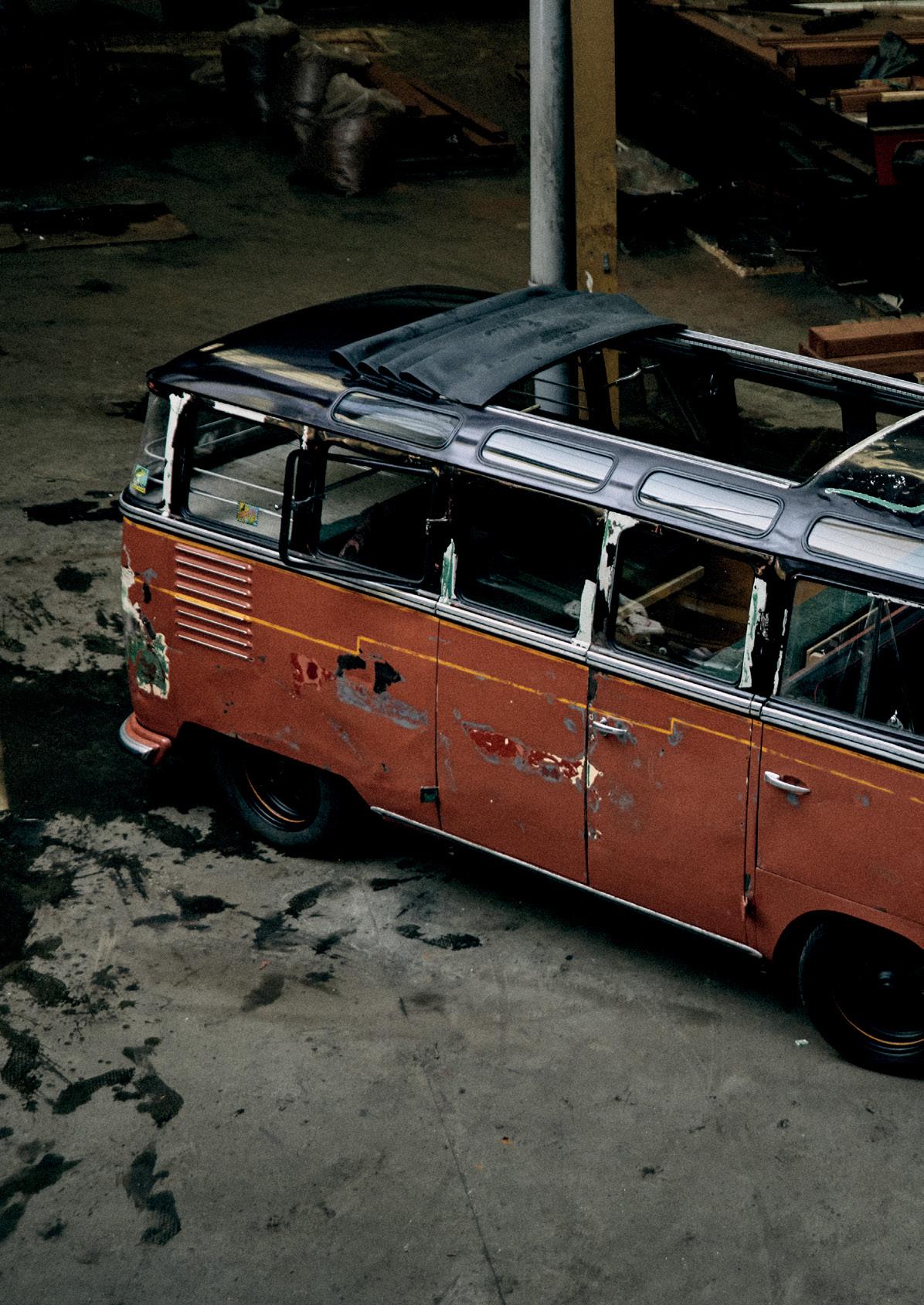
Fast forward to 2020, and Ben was finally ready to get this thing put back together. Ben’s skills lie in sourcing these old buses from all over the world, together with the right parts required to fix them and the right people to do the work that he can’t, and so it ended up booked in with Irv’s Restorations in Barrow-in-Furness for the metal work to be carried out. “I can weld up a car as well as the next DIY welder”, says Ben, “but a Barndoor Deluxe deserves way more skills than my ugly welds”. A plan was made with Irv to get the Deluxe on to a jig and bus

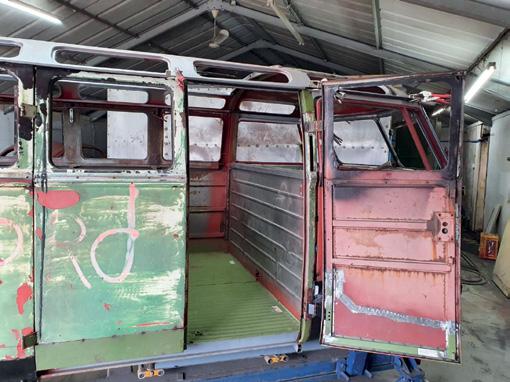



shaped again over the next few months, while saving every bit of original metal that could be fettled back into shape by the Barndoor maestro and his skilled band of workers. On 16 March, Ben and Mo arrived at Irv’s and dropped off the bus, meeting Ned and Vic Hayburner afterwards at a hotel in the lakes for a couple of days of sightseeing. We all know how March 2020 panned out, though,
and by that first evening Boris was on the TV telling us not to make non-essential trips. By Day 2 the hotel had started to implement social distancing measures. In fact, a week after dropping off the Barndoor for its planned three-month stay, the country was in lockdown and Irv had had to send his guys home and lock the workshop doors.


“All the best laid plans, eh”, sighs Ben as he recounts the story. “Covid absolutely blew both the timescale and budget out of the water, and I finally ended up collecting the Deluxe 13 months later. Irv’s team did a pretty amazing job of saving even the most twisted panels and minimising replacement metal as I’d been so keen to do, and I’m certainly not moaning about

the pandemic because I know many, many people were far worse affected than me and my bus project, but I have to admit to feeling pretty dejected as I trailered my welded shell back down the M5 in April 2021.” Certainly, the lack of shows, car meets, and cruises with our mates meant that many of us temporarily lost interest in our projects as Covid continued to affect the
world moving into 2021, and it’s understandable that Ben was ready to stick the Barndoor in the back of his unit and forget about it. His good friend Ollie wasn’t about to let that happen, though, and suggested that Ben drop by on the way back so that they could cast an eye over the bus.


Ollie and his son Ben are no doubt familiar names to you all by now.
Between them, they run Beetle Magic near Dorchester in Dorset, have helped keep the South West’s old air-cooled vehicles on the road for several decades now, and have played instrumental parts in most of Ben’s restorations over the last 15 years. Ben describes them as extended family, and it soon becomes clear that the Beetle Magic workshop is his second home and where he
often goes to work on his cars and “generally get in the way”, as he puts it. Between them all, and over many coffees, they started to make a bit of a plan for the bus, and the project started to gain some momentum again. “I’d always planned a stock resto”, says Ben, “but Ollie’s always saying not to plan too much and that a big project will lead you where it wants to. I think he’s a pretty wise guy.” These words proved to be
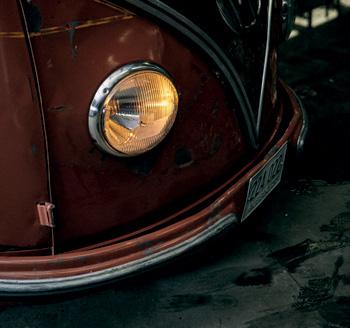


true as, after eight solid, painful days of stripping the horrifically bad green and white paint from the bus with razor blades, Ben managed to uncover a lot of thick original paint including some very cool old stripes. “The bus began to look a little bit badass, and we followed its lead by installing safari windows, a late Beetle gearbox with adjustable spring plates, a narrowed and adjustable late front
beam, and some blacked out original ’70s Sprints .” It does indeed look “badass” and, once “Beetle Magic” Ben had finished with the welder and spanners and Ollie was done with his awesome paint blending, “Barndoor” Ben spent another couple of weeks of late evenings colour sanding and polishing it all to a superb finish. Ben also built a period-looking camping interior for it, finished nicely with some comfy cushions from Fabrik




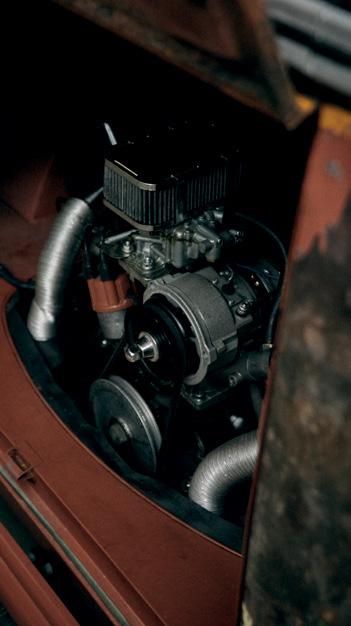
Interiors. When you look back to how it looked in November 2017, it’s nothing short of astonishing to see it looking so straight and original as it’s being pushed briskly up the road by its tasty “Beetle-Magicbuilt” 1776 motor. Definitely a job well done to all concerned, and an especially impressive save for the guy who never intended to buy the bus in the first place and just
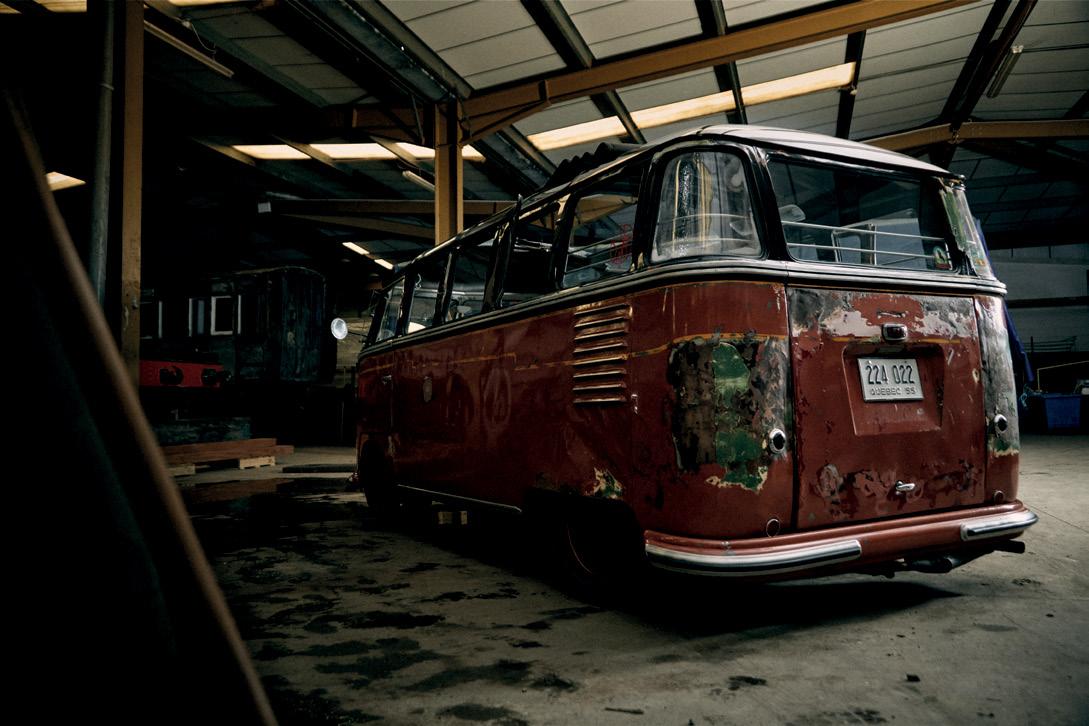

wanted to find it a good home! At the end of our chat, Ben wanted to reiterate his thanks to everyone involved in this mega build, and also to thank his nephew Sam, and particularly Sam’s boss James over at VanHaven in Sturminster Newton, Dorset, for helping organise the location for the photoshoot. VanHaven, “The South’s number 1 new and used VW Transporter
specialist” can help you kit out your own T5 or T6, or offer you a bespoke customised Transporter straight off the shelf. If you’re looking for a sorted van, then go check them out at vanhaven.co.uk. The use of their warehouse was much appreciated, and they’re a very cool bunch of guys.



Enjoy 15% off our pick up range at www.nlavw.com Offer valid until 31.10.2023. Includes hoop frames, canvas and canvas parts, PVC covers, wooden slats and other related items. N OLONGERAVAILABLEVWPART S Specialist manufacturers of obsolete Volkswagen parts NLA VW Parts www.nlavw.com | enquiries@nlavw.com | 0044 (0)1789 774567 Pick up a great deal this Autumn
FIND UPCOMING VOLKSWAGEN SHOWS EUROPE-WIDE.
If you would like us to promote your Volkswagen event, please enter for free on www.bUGbUs.nEt’s events page. Also on bUGbUs.nEt you will find the latest show entries from around Europe.
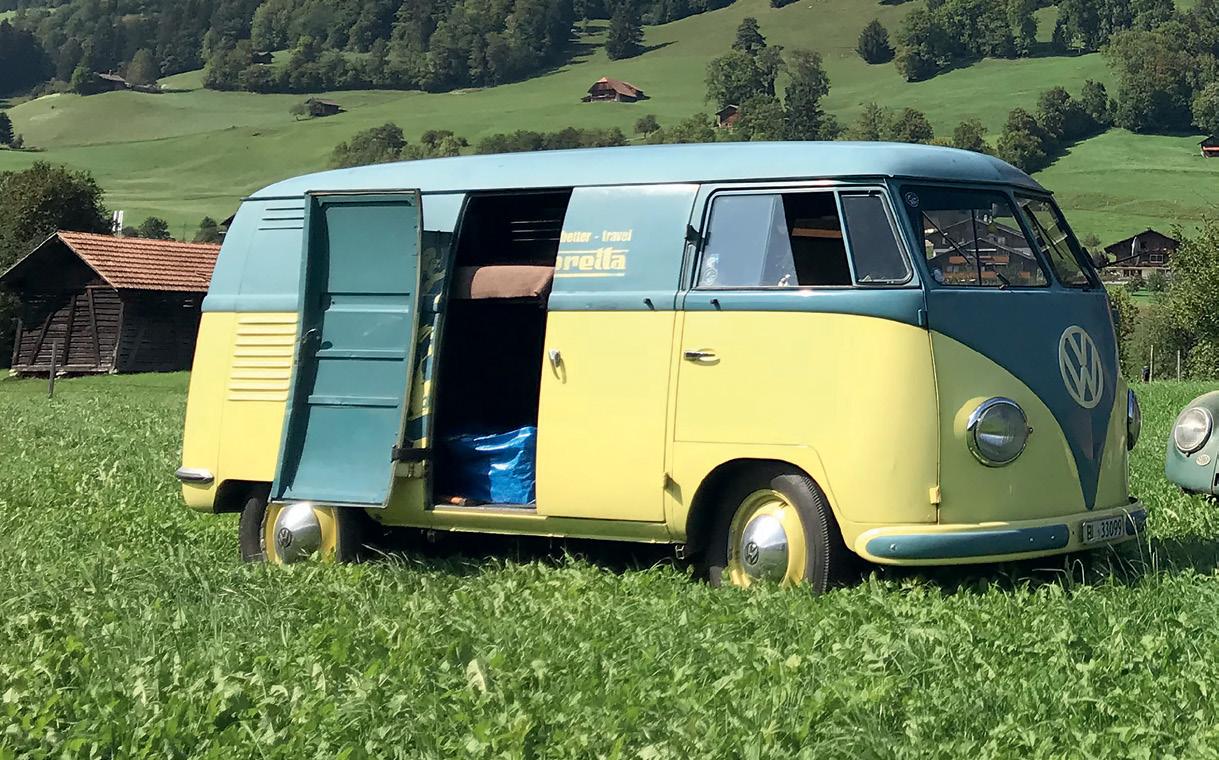





AUGUST
31st – 03rd | Bulli Summer Festival
Auesee | www.bullisummerfestival.de
SEPTEMBER
01st – 03rd VW Action
Santapod, Wellingborough| www.vwaction.co.uk
01st – 03rd | Int. Ionian VolksFest


Sami Kefalonia | See bUGbUs.nEt
01st – 03rd | Field of Dreams VW Festival

YO19 6EA | www.classicvolks.com/vwfieldofdreams.html
02nd | Passion Cox Show
Auby | www.fb.me/e/S5GqmqQD
02nd | Old Vag Day
Grolley | www.facebook.com/old.vag.day
02nd – 03rd | Les Coxman’s du 77 Guerard | See bUGbUs.nEt
02nd – 03rd | Meeting COX83 France




VAR 83630 | www.cox83.blogspot.com
08th – 10th | RiVWiera

Savona | www.rivwiera.blogspot.com
08th – 10th | Bus Treffen beim Gasthof



Bürglen | www.dergasthof.ch
09th – 10th | Beetle Show
Lure |See bUGbUs.nEt
15th | Dubs @ The Castle Campout
SA3 1HB | www.facebook.com/Dubsatthecastle
15th – 17th | Grill n Chill
Osney Lodge Farm RH9 8JH | www.grill-n-chill.co.uk
15th – 17th | VW submarines
Stvoridla campground | See bUGbUs.nEt
15th – 17th | FNL VW Show
Treen Farm Campsite | www.Fnlvw.co.uk
WE WANT YOUR SHOW
If you would like us to feature your Volkswagen event, please register it at www.bUGbus.nEt now.
SEPTEMBER
15th – 17th | Doncaster VW Festival
Doncaster DN2 4LT | facebook.com/doncastervwfest
16th | Glarner Old und Youngtimertreff
Ennenda | www.old-und-youngtimertreffen.ch
16th – 17th | AirMighty Show 2023
Hangar 11, Enschede | www.airmightyshow.com
22nd – 24th | Meeting VW Tossa de Mar
Tossa De Mar | www.avwc.org
22nd – 24th | Retro Dub Suffolk
Ipswich, IP3 8uH| www.retrodub-suffolk.co.uk
23rd – 01st | Goldie Days Week
Hintertux | www.goldiedays.at
24th | Run The Ring
M25 | www.runthering.co.uk
30th – 01st Ardennen Rennen





Aywaille | www.ardennenrennen.be
OCTOBER
06th – 08th | Saisonende Busfest
Lac de Joux | www.vwbusclubbern.ch
07th – 08th | Suffolk Bugrs VW Autojumble








Ipswich IP3 8UH | www.suffolkbugrs.co.uk
15th | US Alteisen trifft Luftgekühlt
Affoltern am Albis | See bUGbUs.nEt
NOVEMBER
26th | Slough Swapmeet
RG14 7PN | www.sloughswapmeet.co.uk
FEBRUARY 2024
04th | Midlands Air-Cooled Swap Meet
British motor museum | www.midlandsaircooledswapmeet.com
MAY
24th – 27th | Run To The Sun
Newquay, Cornwall | rtts.co.uk
26th | petrolbrothers air-watercooled
Wielsbeke | See Bugbus.net
JUNE
01st – 03rd Vintage VW In Flanders Fields
Kemmel | www.vintagevwmeeting.be
21st – 23rd | Lechtaler Bullitreffen
Autohaus Schweiger | www.bullishow.com
AUGUST
09th – 10th | Internationales VW Bus Treffen

Lenk | www.vwbusclub.ch





More shows on www.bUGbUs.nEt


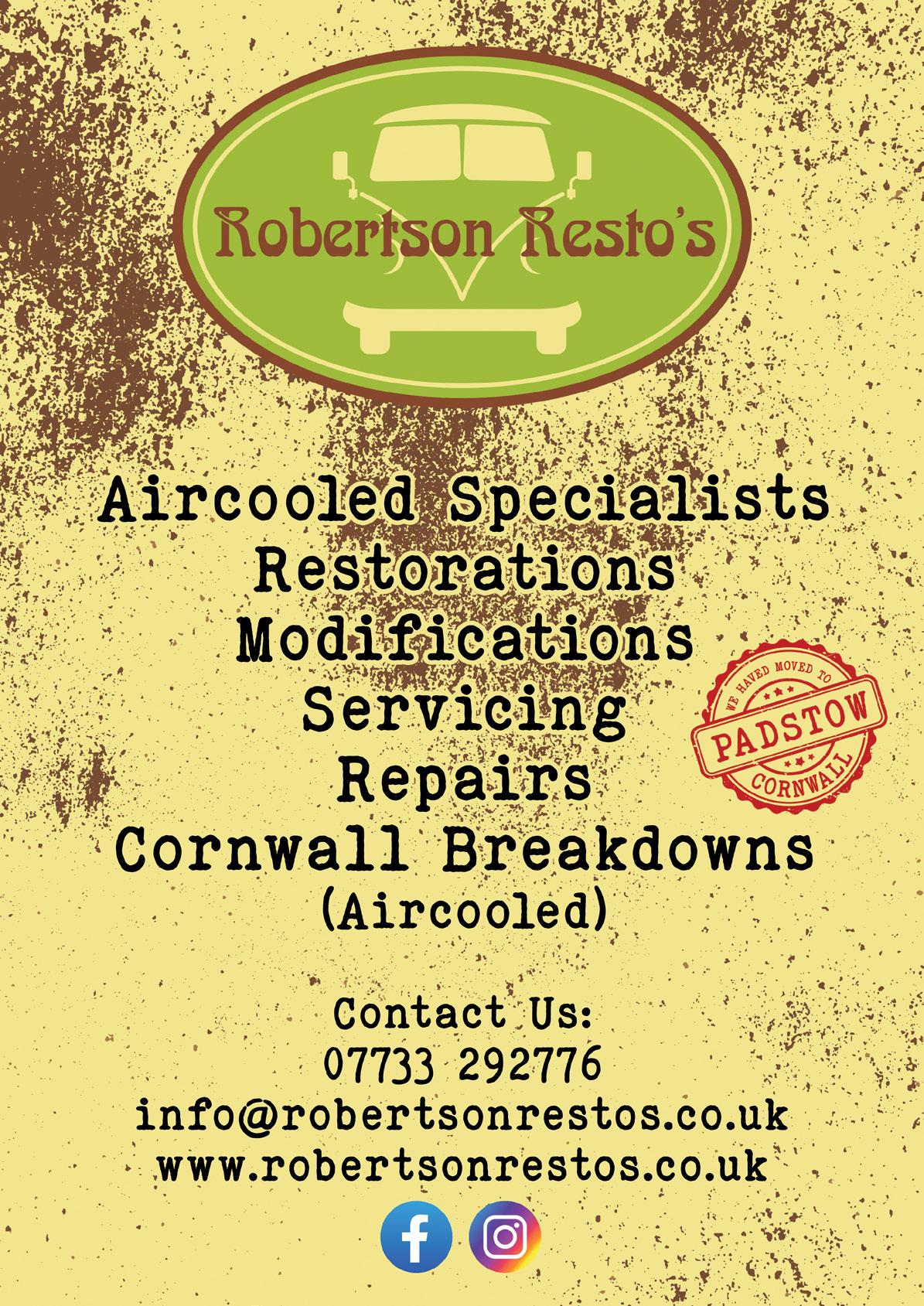




I blame Lee Wakeling. It was the summer of 2015 and my wife, Cathryn, had suggested we pause the house renovations and enjoy the summer. It was a fantastic idea and left me feeling I had room for another project – not quite the intended effect, but we did have a great summer…
It was on my 40th birthday trip, which was two weeks in the camper around Germany including Wolfsburg, Osnabruck, around Lake Constance, Hamburg, ending with meeting friends at EBI, that the previously incriminated Mr Wakeling sent me a link to a project he knew would tease me.
This wasn’t the first time, either. Said project was basically a pile of parts, two halves of a shell on the wrong floor pan, but anyone with vision could see a diamond in the rough (with semaphores). I’d always hankered after a Karmann Cab, having dreamt as a 15-year-old boy that my Gold 1303 had actually been a Cab all along, something to do with both models being in the owner’s manual, I think.
Back to 2015 and, with the help of Mc Wi-Fi, I’d been looking at the pictures on the Volkszone ad and had started a conversation with the owner

in Ireland. Cathryn was very understanding when I said my storage plan was outside on the drive. She knew I believed it, even if it was actually never going to happen.

I also bought it unseen. It, to me at least, was a time before scams were endemic. I knew that the semaphores alone were worth a third of what I was paying, so I decided to go for it. I was literally in the VW museum when I called up and did the deal. Excited? I nearly burst!

I’ll never forget unpacking all the treasures hidden amongst old carpet and packaging. It was exactly what I expected; I was fired up to get stuck in. One of the first parts to turn up was the correct year floor pan, which my dad kindly fetched from Lancashire for me. I soon found the correct engine from Rich Legg, up in North Devon, too. I was determined from the start that this was a project to take my time over, to do as much as possible myself and, above all, to enjoy the process of. That process included new floor heater, channels, front and rear

bumper hangers and valances, one rear quarter, sill strengtheners, rear cross-member, door pillar, bottoms, inner quarters, a repair to the Napoleon’s Hat, and converting the pan to left-hand drive.

Next, it was off to the blasters in the back of my mate Stav’s Bedford Rascal, where it also got hot zinc coated – the entire chassis, inner wings, door bottoms and sills. This showed a few more repairs we needed, but thankfully not where it had been zinc coated. I used Rustbuster epoxy primer to seal everything up,
then thinned, Tintable Raptor on all the inner wings and sills, and black Raptor on the floor pan.
I prepared the entire shell for paint and made a start on painting the internals. Once I was 100% ready for a topcoat, Jarred at Oak Tree Motor Bodies very kindly let me use his booth and, better still, coached me in painting the outside of the car – a very exciting stage.
Next came the build-up – a couple more years,
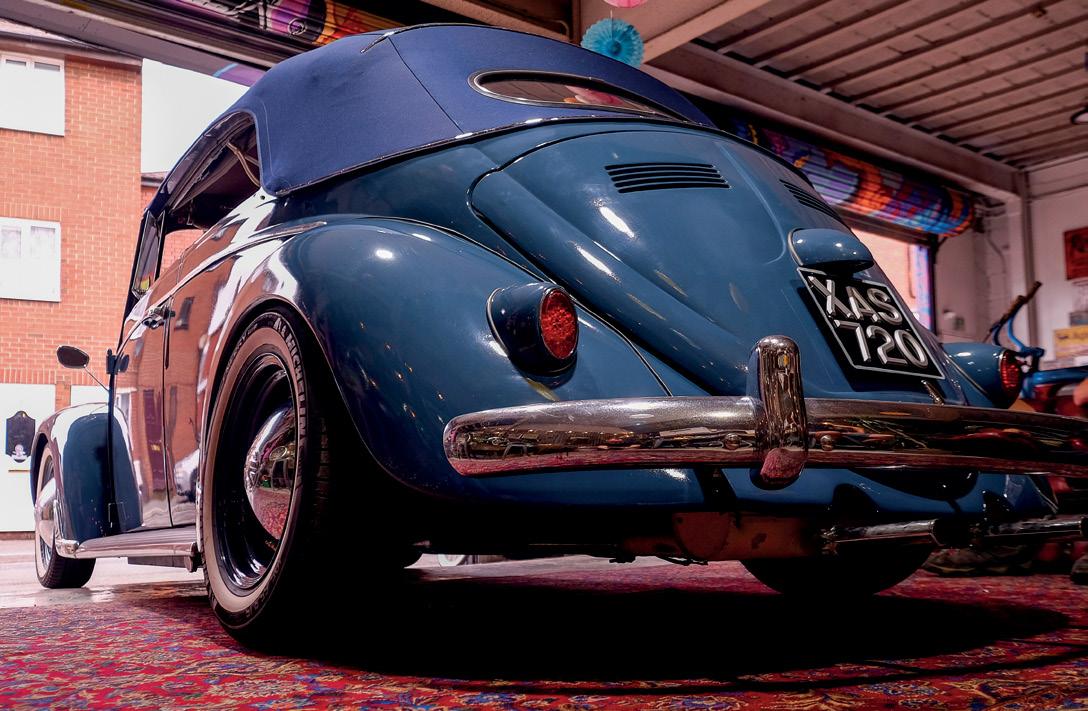
including a trailer ride to Spikes for their trimmers to replace the roof to a standard that Karmann would be proud of. The 30hp engine had a full rebuild to stock specs and with standard bearings. Adam at AJ V’Dubs Paignton gave me a lot of help at this stage and we were both pleased to see the original bearings had little elephants on them. Neither of us had worked on a 30 horse engine previously, and we relied on an old Hot VWs article. Adam was also instrumental in getting the car over the finish line and I’ll be forever grateful for that and for his friendship.
It was great to be fitting stuff I’d had ready for years,

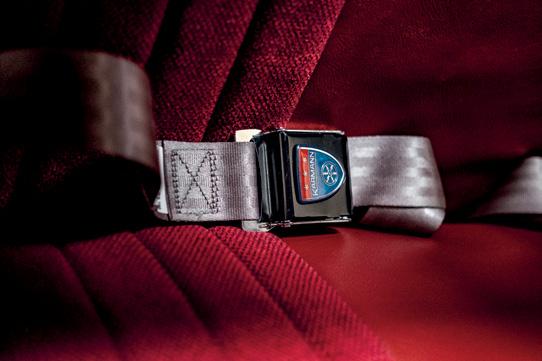
including a dash clock I bought off Pete Morley right at the beginning of the project. I also enjoyed working out exactly how the Cabrio-only stuff worked – finding out, for example, that the interior light switch is the same as a BD Deluxe semaphore switch and that there’s an Oval-era door contact switch in the roof mechanism.
The car’s shakedown was aligned perfectly with a couple of hot, dry months, a trip to Run to the Sun and North Shore Aircooled. It was an epic adventure in a car I never dreamt I’d be returning to RTTS in decades later. We did have to adjust the clutch cable
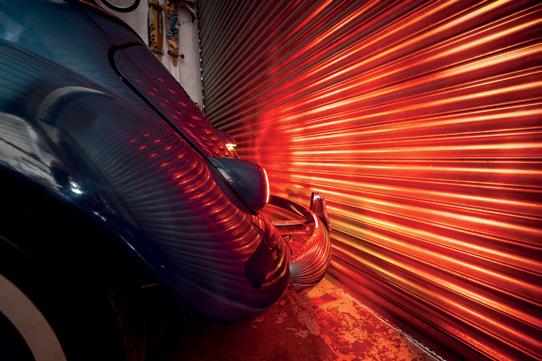



at Hidden Valley campground and the drum splines were knackered by the time we got home. I’ve been trying vaguely to keep the car off socials until this article was out, but got papped by the Google car in Perranporth, so have a look outside the Co-op and see if you can find me…

I’d like to thank Cathryn, Wakes, Dad, Ads, Jarred, Len, Stav and everyone else who sold me parts or gave me advice, from Matt Keene down in Aggie sonic cleaning my carb and sharing his metalwork advice to Rory Booth in Texas for selling me the only interior light bracket I could find anywhere.


I have had a handful of them reproduced by a local engineer if anyone needs one. They’re spot on.
Lastly, I’d like to thank Leon at Custom Coffee Co for letting us use the coolest place in town for the photoshoot. Adjoining Kevil’s Speed Shop, it’s a mustvisit anytime you’re in Torbay. They love cool stuff turning up and have amazing coffee and some great events.
I’ll finish on my dad’s words: “I now enjoy summer days under the blue in my Cabriolet.”

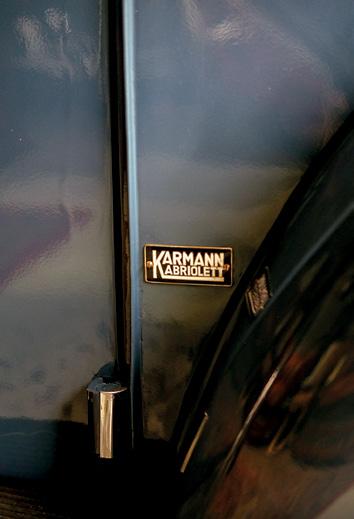
WANT
Restoring aircooled VWs since 2001

Servicing, inspections and MOT’s
Lowering and mechanical upgrades
Modification and fabrication
Auto electrics, split charge systems and 240 volt hook-ups

For all air-cooled VW’s and transporter generations
Vehicle valuations
Call for FREE friendly advice

TO ADVERTISE HERE? PLEASE GET IN TOUCH AT advertising@hayburner.co.uk THANK YOU FOR YOUR SUPPORT.

WANT TO ADVERTISE HERE? PLEASE GET IN TOUCH AT advertising@hayburner.co.uk THANK YOU FOR YOUR SUPPORT.


MAD evilbens.co.uk 07929726351 RAD


This is a car I’ve wanted to write about for a long time, not just because it always seems to spur a debate, but because it holds such a remarkable position in automotive history. Described as beautiful by some and hideous by others, it certainly was a pioneering vehicle with the engineering prowess and innovative spirit of Porsche during an extremely dark period of Germany’s history. Designed
WORDS BY NED FAUX
in the late 1930s, this was a truly unique car. I’m going to delve into the historical background, design features, participation in the race, and the enduring legacy and fascination surrounding this vehicle.
The car was initially conceived to compete in the Berlin-Rome car race, a high-profile event initiated by the Nazi regime. With hopes of success in the race,


the vehicle would be the perfect publicity car for the KdF-Wagen. This event was more than just a race: the objective was to push the boundaries of what was perceived as possible, both for the drivers and for their cars. It was a chance to prove that technology and human determination could achieve the extraordinary in the golden age of motor racing. To have a chance at conquering the Berlin-Rome route, participants

had to meet certain requirements. Only the crème de la crème of the automotive world could join the race. Every car had to undergo rigorous inspections to ensure it was up to the challenge. Most of the race route was made up of Germany’s new autobahns, over 1500km at high speed.
The Porsche design had turned out some 63 designs of all kinds between 1935 and 1940, with nearly half of them (29) VWoriented, and it is rumoured that


this car’s design had already existed as a side project since early 1937 but the project had been shut down due to lack of funding. Volkswagenwerk commissioned Porsche to design a new competition car based on and using parts from the Volkswagen KdF Type 60. Three racing coupes were to be developed and built by Porsche’s engineers in the spring of 1939 for the “non-stop speed test” which was due to take place in September of that same year. The three cars were internally
known as the Porsche 64, Type 64 or Type 60K10. But in its day, the slope-shouldered streamliner was more often than not referred to as just the “Berlin-Rome Car”.

KDF Type60
The body design for the Type 64 was decided by Porsche after wind-tunnel tests for a planned V10 sports car that never came to fruition, the Type 114. The Type 114 was imagined with three different displacements, highlighted by a mid/rear engine placement just ahead of the rear axle. This was a far cry from the state’s vision of a car for the common man, so Porsche’s sports car was rejected by the Deutsche Arbeitsfront board, and shelved. Regarding the Type 64, either time or inclination were lacking for the full mid-engined route Porsche preferred. He settled instead on near-middle seating for the driver, still based on the standard VW wheelbase. Under the supervision of Erwin Komenda, Karl Froelich then drafted formal plans that were developed into a wooden scale model, which was wind-tunnel tested at Stuttgart University by Josef Mickl. These are the same three Austrians who had contributed to Porsche’s Auto Union grand prix cars and the KdF-Wagen.
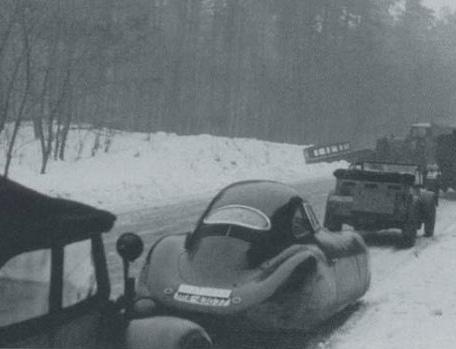
The body was hand shaped in thin (0.5mm) aluminium by the bodywork company Reutter (the same company who went on to build Porsche 356 bodies) to the Erwin Komenda design. The outer skin in a series of more than 2000 rivets made this the most brittle car Porsche ever made. During tests, just slamming the engine lid was enough to cause fractures in the bodywork.
A split windshield and slidingdoor windows completed the lightweight body, a large fuel tank and two spare wheels were placed up front, the battery was placed behind the driver and in the narrow two-seat cockpit, wheel spats front and rear, and a dual spare-wheel compartment under the front bonnet lid. A stock VW engine with enlarged valves raised compression to 7.5:1 (from 5.8) and used not one but two of the Solex 26 carbs. The power (40 bhp) came at 3800–4000 rpm, compared to a rev peak of 3000 for the KdF Type 60. The car used a VW gearbox with 0.80 top gear and also-normal 4.43:1 final drive. The entire car only weighed 545kg. Speeds of 140 to over 160kph have been claimed at various times. The cars underwent extensive preparation

Type114 Concept
and testing. The engineers and designers at Porsche left no stone unturned, ensuring that every nut and bolt was perfectly in place. Countless hours were spent on the race track, pushing the limits of the Type 64. The team behind the car continuously sought improvements to enhance its performance and reliability.

Unfortunately, the outbreak of WWII prevented the Berlin-Rome race from being held. Ferdinand often used one car as a sort of early executive jet. For much of the remainder of the war, the Type 64 was used on his travels around Germany as one of the regime’s most important engineers. He was regularly chauffeured by his driver,
Josef Goldinger, from his home in Zell am See, and he once made a trip from Berlin to the Volkswagen headquarters in Wolfsburg. By 1944 Germany was relocating most of its war production infrastructure to escape the wrath of the Allied bombing campaign, and Dr Porsche’s workshop was famously moved to Gmünd, Austria, and his own Type 64 along with it.
The second of the cars went to Dr Lafferentz, a Ley deputy, and was sadly written off in a crash, not bombed by the Allies as is often claimed.
The third was used by Welin, a Munich car dealer and advisor
to Adolf Hitler. This car was eventually cut down to a cabriolet, and run to the point where it was scrapped after blowing the engine.
This left only one Type 64 to survive the war, which was by then owned by Ferdinand Porsche’s son, Ferry. Ferdinand had been imprisoned by the French authorities who sought to exploit war criminal charges in the name of underlying political agendas. The professor’s son, Ferry Porsche, assumed control of the company and used the Type 64 as his own personal car. In 1949 the Type 64 was sold to Otto Mathé, who had been smitten by the Type 64 during his first encounter with it.
To accommodate shifting with his left hand, Mathé converted the Porsche to right-hand drive because he had lost all use of his right arm in a speedway bike crash in 1934. He also fitted it with a hydraulic system sourced from a Fiat, replacing the cable brakes, and initially modified the engine’s displacement so that he could race in the 1100cc class. The car had had to wait 11 years before it was properly raced, after retiring early at the Austrian Alpenfahrt (a two-day rally of 800 miles through Tyrolean Alpine roads) in 1949. In 1950, Mathé entered the car in the Austrian Alpine Rally, scored a class win, and collected best overall performance by a sports

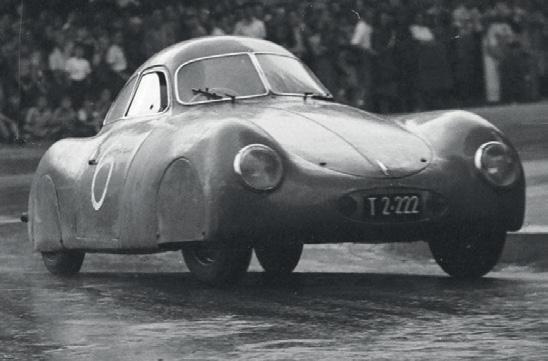


car of the time.
In 1951 Mathé tucked away the car in a spacious barn, where it waited until a classic car meet late in 1977. The last time he drove it in a race was at the Monterey Historic Races in Monterey, California, in 1982. In 1995, after 46 years of ownership, the legendary competitor passed away, and after two years of estate settlement, the last surviving Type 64 was finally sold to its second private owner. The Type 64 passed into well-deserving hands, as the new owner, Dr Thomas Gruber of Vienna, is a very respected marque enthusiast, having written a dedicated volume

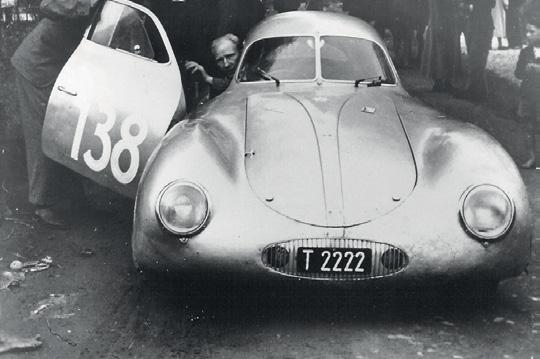
about the original 911 Carrera RS model. Dr Gruber commissioned a sympathetic restoration that stressed originality, and the aged finish was gently preserved with all its shades of original silver accented with hues of blue and green patina. After the mechanicals were refreshed, the car participated in the Austrian Ennstal Classic in 1999 and 2001, the Kaiserstrasse and Kottingbrunn rallies in 1999, and the Goodwood Festival of Speed in 1998 and 2003.
In 2008 the Type 64 was sold to a dedicated enthusiast with one of the largest private car collections in Germany. The car continued to

benefit from careful preservation and attention as needed under his custody. This included the incredibly well-preserved interior that even retains the very seat fabric on which Ferdinand and Ferry Porsche previously sat, and the original engine kept by Otto Mathé until his death and which was saved by a friend of his family.

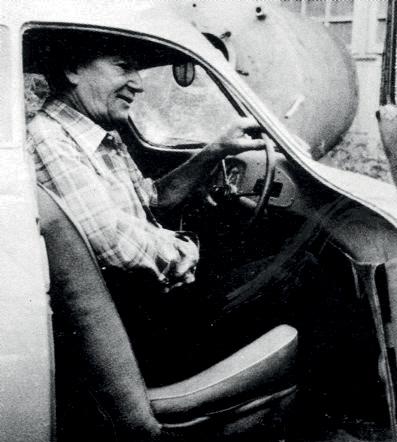

In 2019 the last remaining Porsche Type 64 went to auction and created quite a stir throughout the motoring world. There were discussions regarding price, and debate as to whether it was not a real Porsche at all but just a Volkswagen in Porsche

clothing. The car was projected to sell in the neighbourhood of $20 million. At the RM Sotheby’s Monterey sale, the Porsche failed to sell after an embarrassing auction where the bid price was overstated by $53million (£43.3m), and the $20m (£16.4m) bidding stalled as the pricing error was displayed on the screen.
The auctioneer’s accent was blamed for the apparent misunderstanding, which showed the bidding at $70m (£57.4m), rather than the actual price of $17million (£13.9m). Realising the error, the auctioneer clarified that he had been misheard and the screen was corrected, to a chorus

of boos. There were no further bids and it is understood that the price failed to meet the reserve.
My personal opinion, if it’s worth anything at all, is that not only is the Type 64 a real Porsche, but I would also argue that it was the first real Porsche. The attractive aerodynamic bodyline I think makes it the closest ancestor of all air-cooled Porsche sports cars since 1948, and its close relationship with the Volkswagens we’re still driving today just makes it that bit more special.




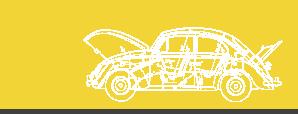




WANT TO ADVERTISE HERE? PLEASE GET IN TOUCH AT advertising@hayburner.co.uk THANK YOU FOR YOUR SUPPORT.





TO ADVERTISE HERE? PLEASE GET IN TOUCH AT advertising@hayburner.co.uk THANK YOU FOR YOUR SUPPORT.
WANT
®
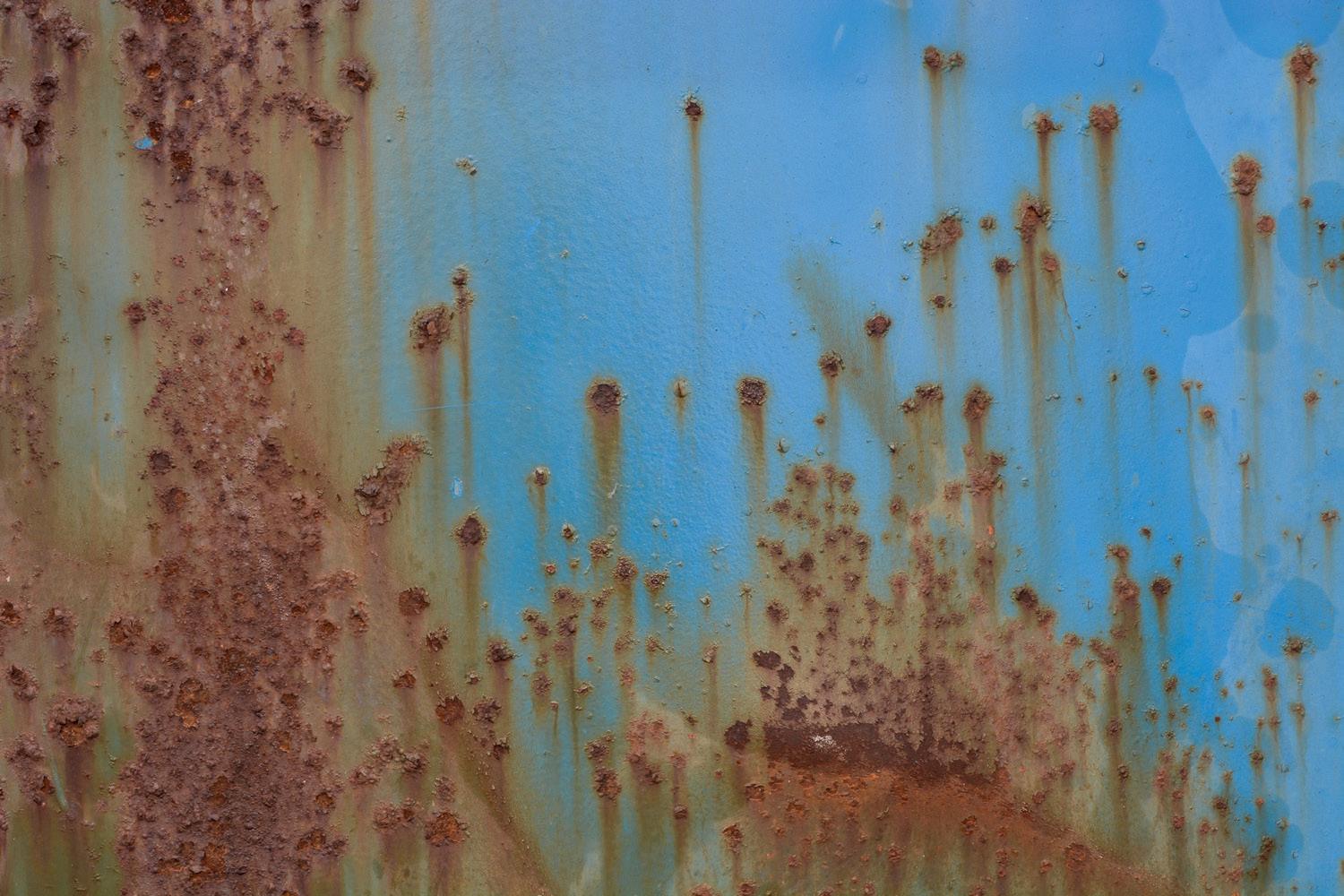
Accessories for Splitscreen, Baywindow, Beetle,Type 3, Ghia








wolfsburg wheel commercial mirror arms
twin gauge holder 356 spot lights 356 grilles late bug / bay vader wheel
aussie flash trim
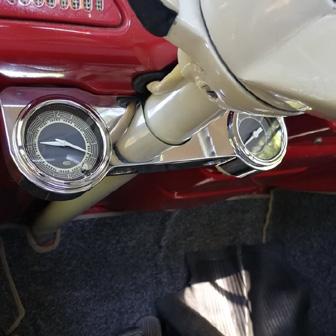
AIRCOOLEDACCESSORIES.COM
52mm tachometer bay cup & phone holder New !


WANT TO ADVERTISE HERE? PLEASE GET IN TOUCH AT advertising@hayburner.co.uk THANK YOU FOR YOUR SUPPORT.






01482 374116 www.kingstownshipping.co.uk 5% VAT Clearance & NOVA DVLA Registration Import / Export Service Marine Insurance Inland Transport


 WORDS BY BENJAMIN MICHEL PHOTOS BY HOWYGRAPHX
WORDS BY BENJAMIN MICHEL PHOTOS BY HOWYGRAPHX
A. I’ve been involved for around

Q. What sparked your interest?
A. Since I was very young, I’ve loved this old kind of car. The older I got, the more my passion for old VWs grew.
Q. What air-cooled cars have

you owned previously?
A. My last car was a slammed 1971 VW Beetle.
Q. Tell us about the car we’re looking at?
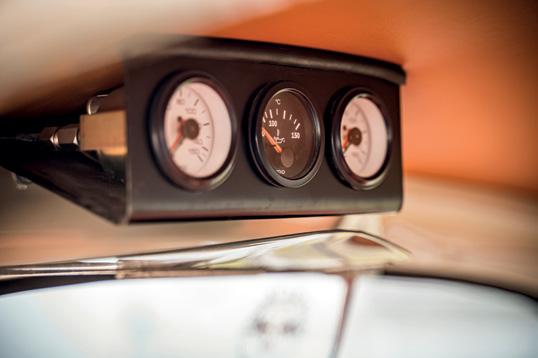
A. It’s a 1954 Type1 Beetle (Oval).
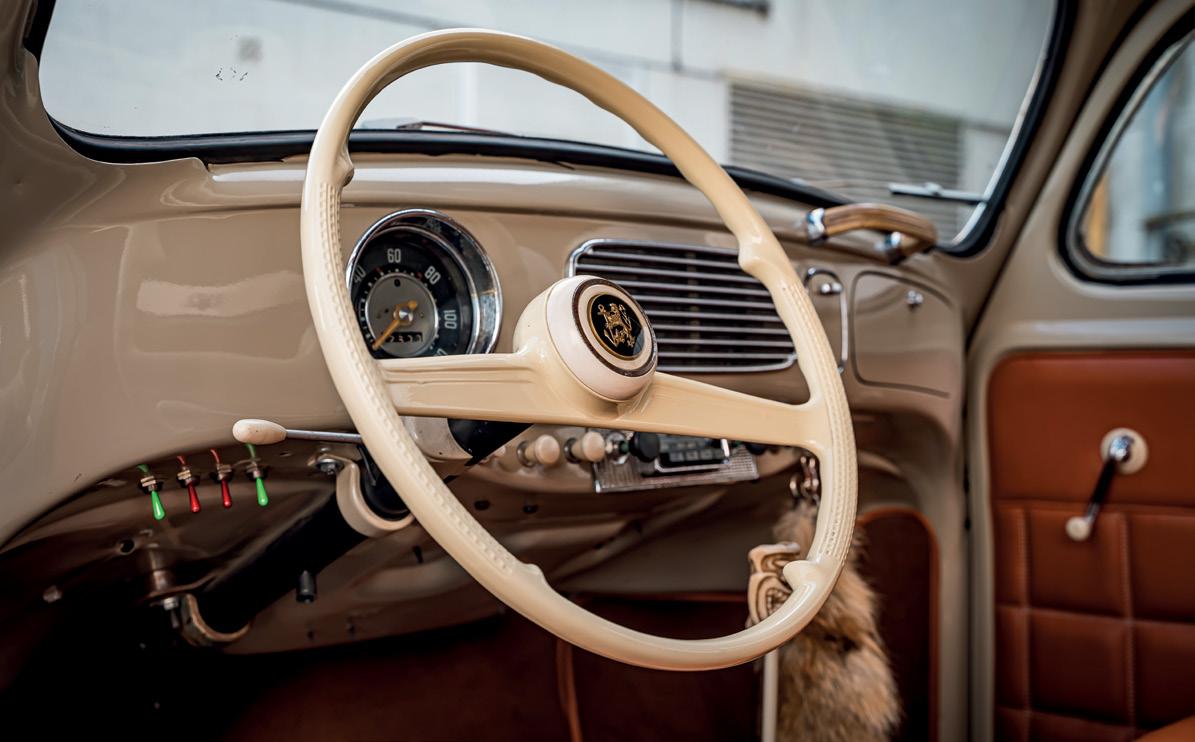

Q. After purchasing, did the car require any work to the body?



A. Nothing. It’s a very solid shell.
Q. We can see the car is lowered. How has this been achieved?
A. I wanted the car to be slammed. It really can’t get any lower. It’s on an airride set up with flat pans and rear tubs. It uses Boudin air shocks front and rear.

Q. Who completed the work?
A. My friends, the crew of Radikalbugz.
Q. What wheels are you running?


A. 17” SMA wheels.
Q. What are your front and rear brakes?

A. I used the original front and rear drum set up.
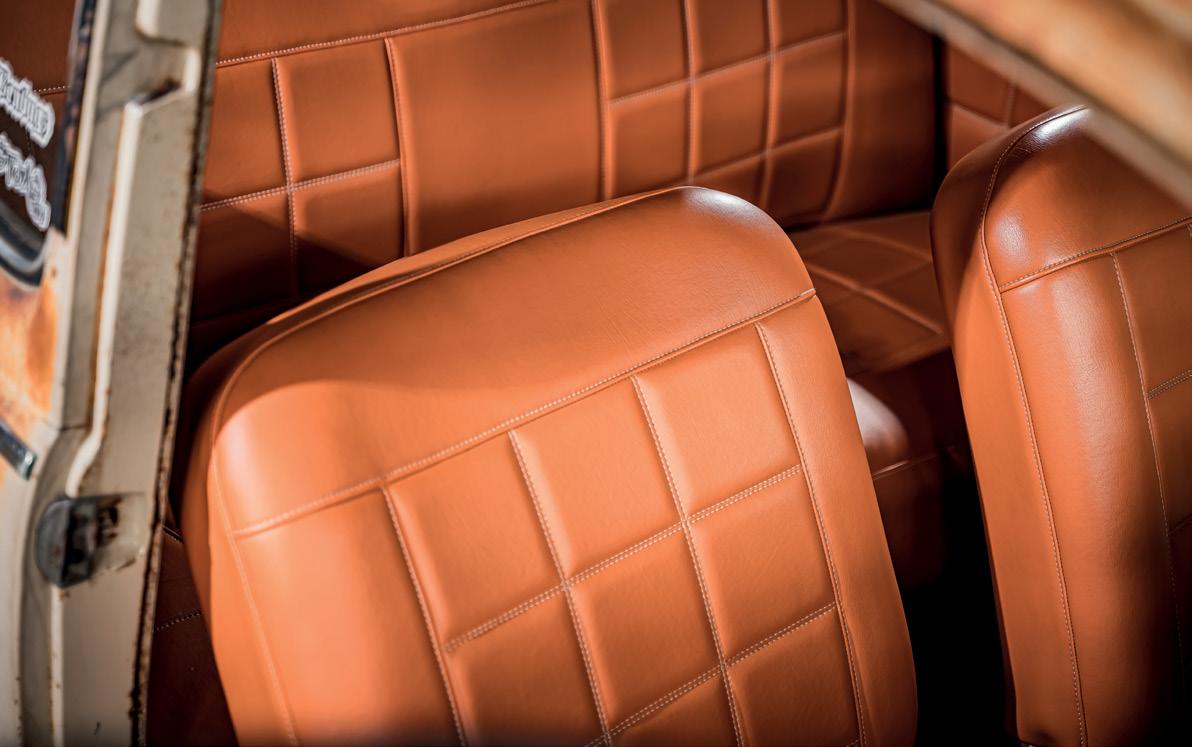
Q. What engine have you got?
A. It’s a 1600 with dual carbs. It’s a very reliable motor.

Q. Exhaust?
A. I made my own for ground clearance.

Q. What seats have you got?
A. The carpet and complete upholstery are custom made by Rodolphe from RG Upholstery.
Q. What steering wheel have you got?
A. It’s a vintage Rometsch Lawrence style steering wheel with a Petri lion and anchor horn button.
Q. What gear stick/shifter have you installed?
A. It’s a custom-made Tiki shifter.
Q. Have you installed any additional gauges?
A. Gauges for the airride system.
Q. How long was the build?

A. The work has taken several years to get it to this point.
Q. Did you encounter any problems when building or since building the car?


A. You know these old cars. There is always a problem, a solution and something to do.
Q. Have you won any trophies?
A. Yes, quite a few. The latest one was at the Hangarz meet, an air-cooled event here in Belgium.
Q. Do you have any further projects or plans?

A. Only the future will tell.
Q. What is your favourite part of your car?

A. Without any doubt, the patina is my top feature!

Q. Last but not least, who would you like to thank?
A. All the people who have participated in this crazy build. I also want to thank Howygraphx for this great shoot.

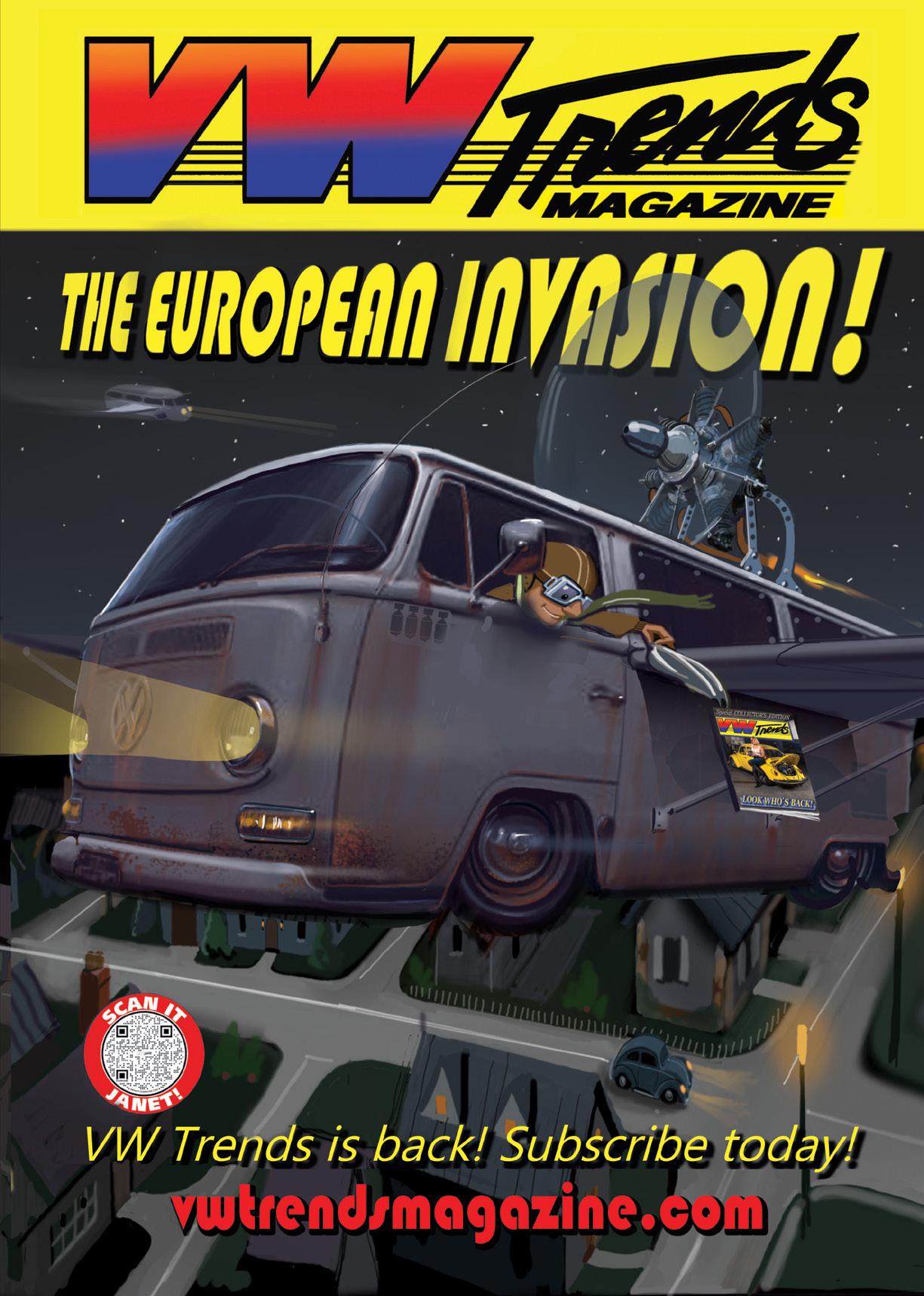
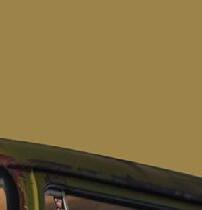













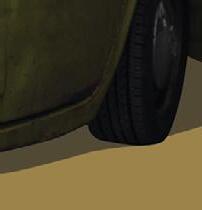





INSURANCE FOR THE INDIVIDUAL Call us today on 0800 587 5494 Cover can include: Insure your VW campervan for all of life’s adventures. Call us for a low-cost but tailored quote – customers save an average of 26% when they take out a policy with us*. Whether you’re travelling abroad or exploring the UK, we offer campervan insurance to suit your trip and budget. Personal possessions European travel Laid-up cover Breakdowns at home and abroad adrianflux.co.uk Authorised & regulated by the Financial Conduct Authority. Trustpilot rating checked on 5th July 2023 *Based on customer premium data from 2021



WANT TO ADVERTISE HERE? PLEASE GET IN TOUCH AT advertising@hayburner.co.uk THANK YOU FOR YOUR SUPPORT.
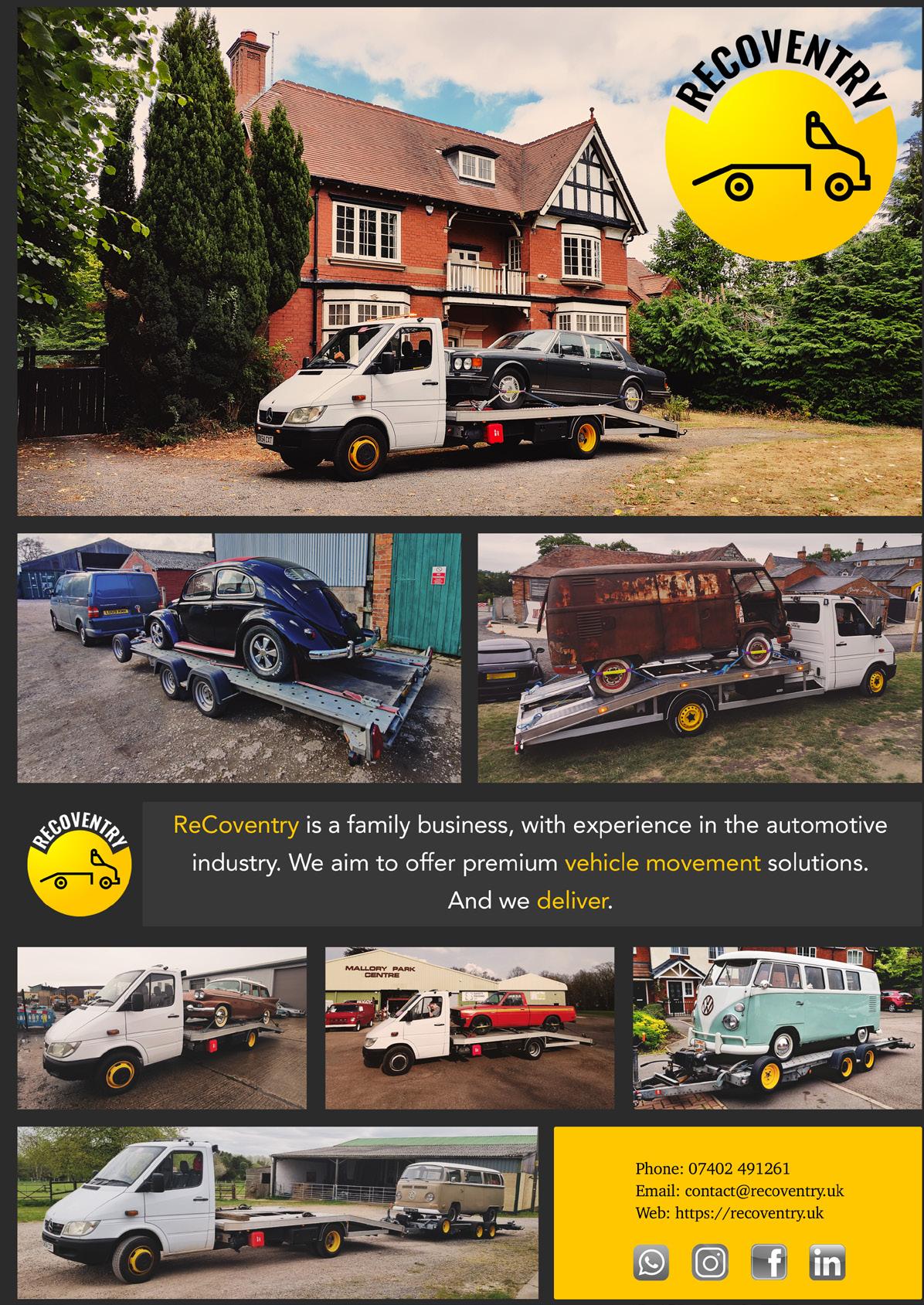
Things are really busy at Rapid Rodent Racing at the moment. The phone has been ringing and ringing, cars turn up every day, and I feel very much as if I just can’t keep up with the pace of it all. It’s good to be busy but it brings its own problems. I hate saying “no” to people, but sometimes there is no option other than to be honest and to say that my yard and workshop are full and I have no space or availability. I have never been a great businessman but I have always done my best to get along. I think someone who was a great businessman would try to expand and take on as much as possible, but I am very much aware that my stress levels are about as high as I can cope with and adding to them would not do any good at all. Sometimes I find it hard to know what to do for the best. I have
WORDS BY CHEZ WILLIAMS


never possessed a crystal ball or been able to predict the future, and over the last few years things have been so random that I don’t think anyone could have written the script for what went on.
I have been writing about the workshop in Hayburner for over a decade now, and I do from time to time like to point out how things have changed in the way we do things and what’s available and on offer to make things better. Now this is not a criticism; it’s just an observation, so bear with me. Long gone are the days where we would get three or four vans per day delivering air-cooled parts to the workshop. It was so easy then, as every day we could get jobs in and finish them the same day. This is something I really miss, but times change and we have got used to ordering online and
parcels arriving within a day or two. It’s not the end of the world when the process goes well, but it can go wrong. For example, what if, for whatever reason, the parts we have ordered are incorrect when they arrive? It’s another few days in the yard until it can be fixed. Also, looking at my usual suspects’ websites, there seems to be very little actually in stock. Most things seem to be four to six weeks, and many items are not in stock at all and no-one seems to know when they will be back.
This worry about the availability of parts is a real challenge, if I’m honest. I’m currently sat at my desk in the workshop trying to find water hoses for a T25 which we have looked after for a long time. Nobody has the hose I need in stock, and the only way I can find to solve this issue is to

have one made up out of silicone hose, which will be OK but will cost more than just buying one off the shelf and will take a load longer. Most people when they break down, especially through something like a broken hose, expect to be back on the road the next day – not waiting days for a simple part. But maybe this is just how things are going to be from now on and there is little I can do about it. Maybe everyone is in the same boat. For the past ten or so years we have had a Snap-On tool van come to the yard every week. His shelves of shiny new aspirational tools make mechanics act like a moth to a bright light, but I have not seen the Snap-On man in months. We’ve spent a lot of money with him over the years and now all we get is a message on WhatsApp informing us of his new deals, but never do we see the van that came every week. I have not spent anything on tools since he stopped turning up, so how is he surviving? Answers on a postcard.

I wanted to mention a couple of vehicles we have in at the moment. The first is owned by a guy in Northampton called Chris. It is a beautiful Black 1957 Oval Beetle which we had delivered to our yard. It truly is a stunning car with a beautiful original interior and is stock as a rock. It had been off the road and tucked


up in a garage for a few years, and Chris wants it going through and recommissioning with a few small jobs to do as well. We have it up in the air and all wheels and drums are off. The rear brake cylinders were stuck solid. We did manage to free them off, but unfortunately when we cleaned them up and put them back on the car they leaked due to water damage pitting the cylinder so we have replaced them. Also the front shoes were low so I ordered shoes and we have just finished fitting the new parts. We also found the master cylinder to be sticking and generally not nice, so have decided to replace that as well. A new 6V battery and an engine service should see this beautiful Bug back out and about, and I hope driving it puts a big smile on Chris’s face. I do have one job left to do which is to repair the wipers. Having carried out wiper repairs before, I know how much of a pain they can be, but we like a challenge.
We are also heavily in engine fitting mode at the moment. Lee Skilbeck has had two engines built by us. One is a turbo engine that we have built up and the other is naturally aspirated. Both the engines are road engines so not too crazy, but should be good fun when installed in his Turkis Green Split Bus. The bus turned up at ours a few weeks back and
I know Lee really wants to take it to Cornwall at the beginning of September, so this week we will remove the 1776 that has pulled it about until now and replace it with the one we have built. We are also changing the gearbox and fitting a set of 45mm carbs to it. The bus is already kitted out with an external oil cooler and electric fan and if I remember correctly already has an electric fuel pump and regulator, so all being well this should be a good job to get our teeth stuck into. It’s always satisfying to fit a new engine that we have built and see the vehicle trundle off on new adventures to new places. By the time it makes it to Cornwall and back I think it will be well run in and ready for its first service.
I’m very lucky to enjoy the work that we do so much and see the end-products being used and enjoyed by their owners. As much as things change, there is always the option of changing with it. New ways of doing things can always be found and I very much hope parts will always be available in some way to ensure we can continue to do what we do. I’m far too old to be trying to get a job now, and I think that after over ten years of being self-employed I’m too stuck in my ways to have a “proper job”, so let’s hope this continues until I retire.
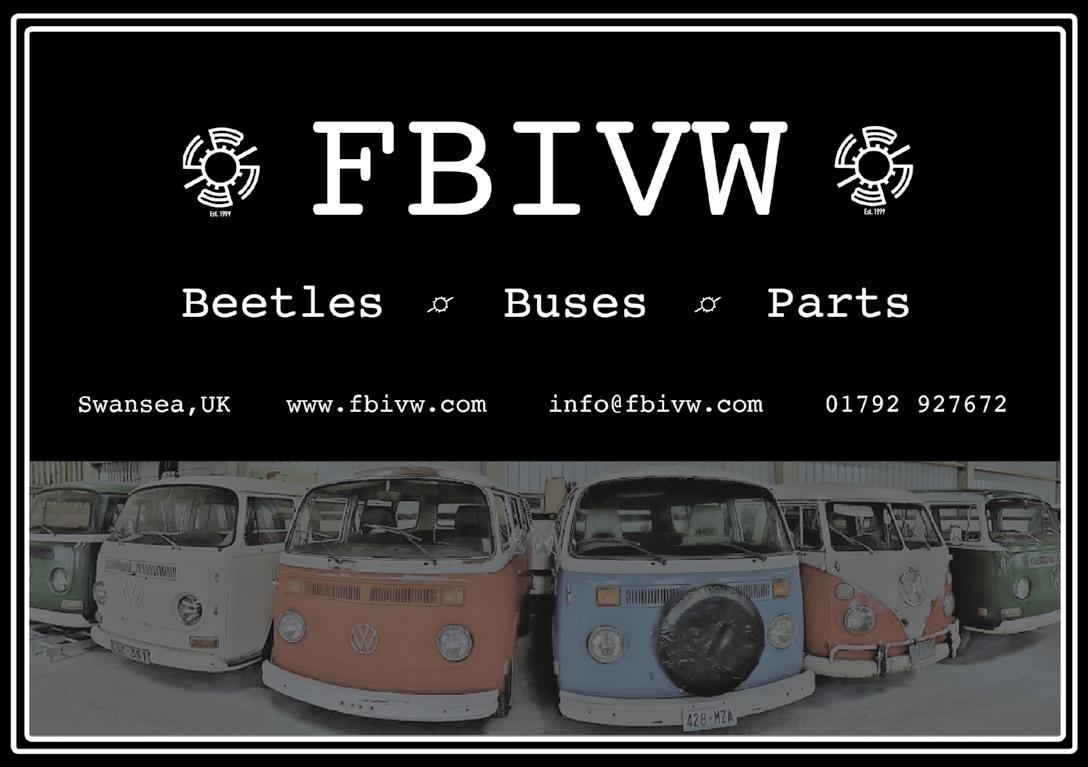
WANT TO ADVERTISE HERE? PLEASE GET IN TOUCH AT advertising@hayburner.co.uk THANK YOU FOR YOUR SUPPORT. S.G.S AIRCOOLED Aircooled & Watercooled Classic VW Specialist Unit 3 Woodmans Farm Curdridge Lane Curdridge Hampshire SO32 2BH *Servicing *Repairs *Welding *MOT *Restoration Work *Lowering *All Vehicles *Bosch Diagnosis *Vehicle Recovery www.sgsaircooled.co.uk info@sgsaircooled.co.uk 07814 687725 01489 896488 We still work on all makes of vehicles, new & old.



WANT TO ADVERTISE HERE? PLEASE GET IN TOUCH AT advertising@hayburner.co.uk THANK YOU FOR YOUR SUPPORT. http://joeblow.me blowjobs@joeblow.me Fancy a Blowjob? Supercharger kits for aircooled VWs http://joeblow.me blowjobs@joeblow.me n Superchargers n Camshafts n Ignition systems n EFI systems n Twin-spark kits n Superchargers n Camshafts n Ignition systems n EFI systems n Twin-spark kits



 WORDS BY TIM CARROL PHOTOGRAPHS BY CHRIS DE LA MARSCHE
WORDS BY TIM CARROL PHOTOGRAPHS BY CHRIS DE LA MARSCHE
We all love slammed buses. With the availability of well-engineered slamming products, it’s not like the old days. You can ride low and actually retain a bit of drivability, even if your bus really is on its arse.
However, going low does come with its own issues. Bottoming out is something you have to live with. Don’t get me wrong, that scraping feeling is one that’s


put a smile on the face of many, but still it’s not for everyone. With a majority of the VW community moving into middle age, a decade of tensing up for every bump in the road has become a bit of a chore for some, and we seem to be seeing more and more stock height or even raised vehicles.

Maybe this is why really low buses tend to change

owners with alarming regularity. They look great parked up and in pictures, but driving and camping in them is a different story. There definitely seems to be a trend. People start with a low car, then go lower, then replace it with a stock height car. They might not look as cool to many, but stockers drive great and, more importantly, you can drive them anywhere.
Each to their own, but the opinion going round in Hayburner HQ is that 29-year-old industrial electrician Pieter De Jaeger’s 1971 Early Bay Window looks seriously cool riding high on its off-road tyres.
Pieter was born and bred and still resides in Ghent, Belgium. His interest in classic vehicles began
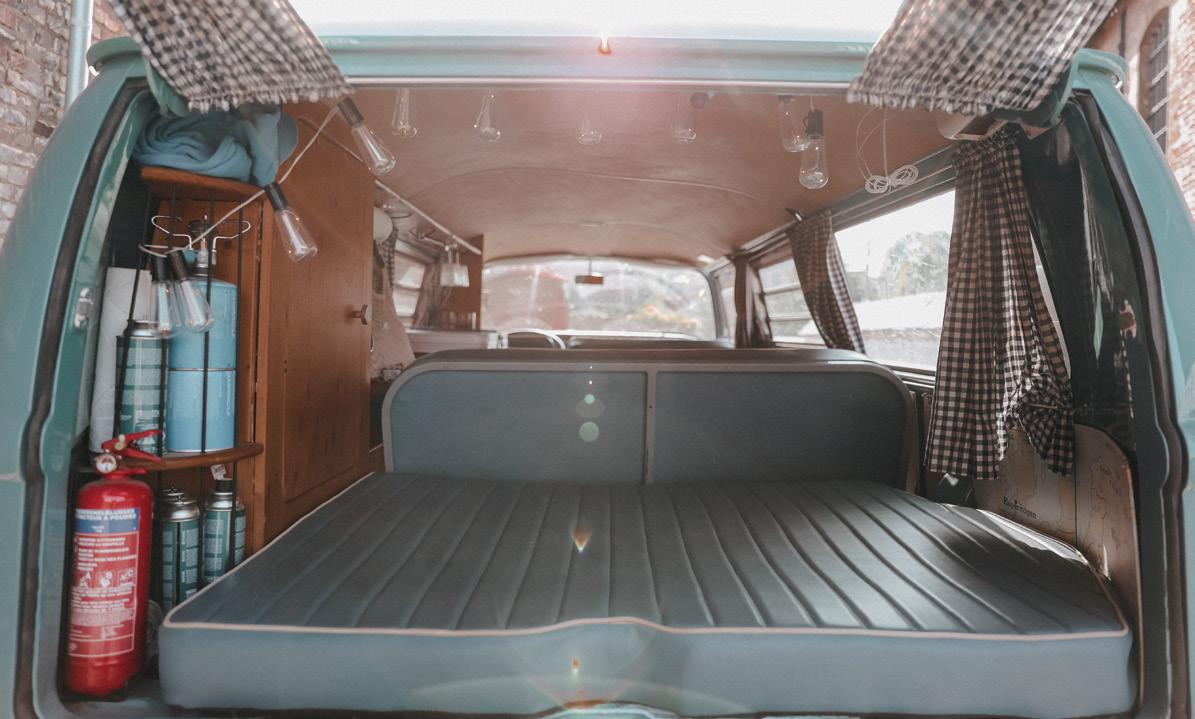
around the age of 15 when he started buying old Vespas. When he was 18 he bought a ’72 Opel Kadett which didn’t pass an MOT so he ended up moving it on. Soon after that he got a blue ’72 Beetle and started taking it to local air-cooled Volkswagen meets. He had dreamt of owning a Type2 since he was a child, and he loved driving the Beetle so much that it

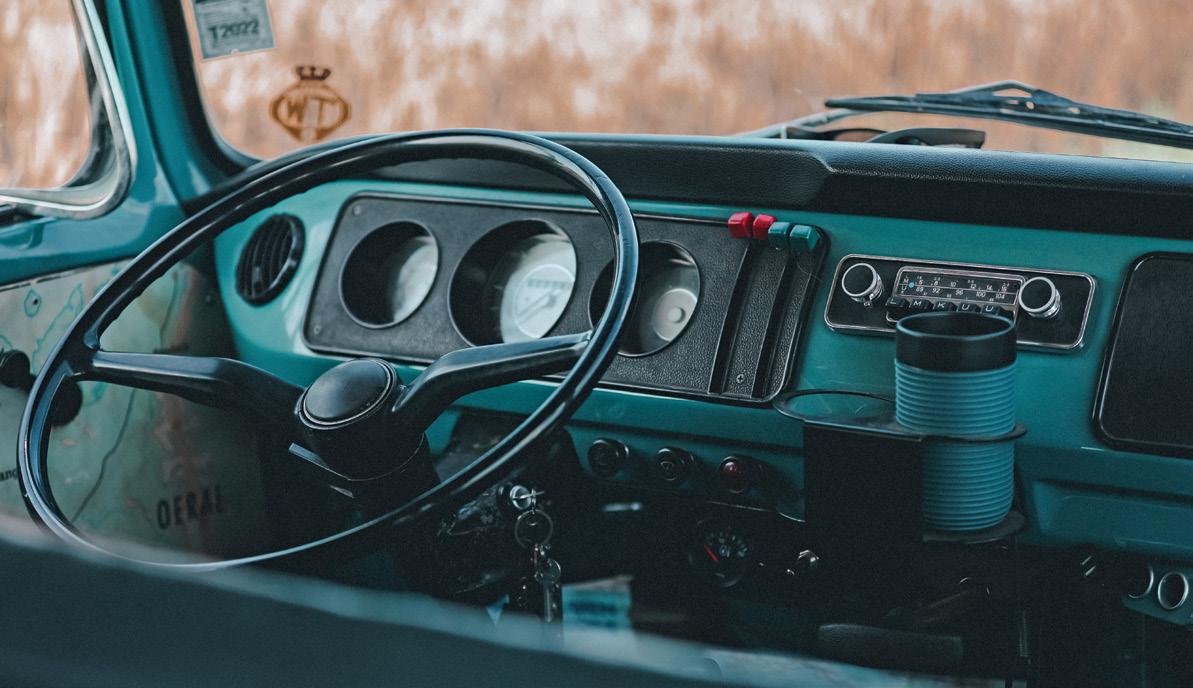
was only four months later that he acquired the ’71 Early Bay you’re looking at here.
The seller had only owned the bus for around half a year and didn’t really drive much. It seemed to be in good condition, so Pieter asked if they could take it for a Belgianstyle MOT and drive back to his house – a good excuse to find out

how it drove. The bus passed its MOT and the drive was uneventful. All was well.
After getting the bus home, Pieter was over the moon that it had turned out to be road worthy, but it did had the typical rough paint touch ups around the bottom half of the bus. After using it as it was for a few years and fixing
bits of metalwork here and there, the bottom 6” succumbed to the elements and required replacing. This work was carried out in 2017. The bus’s original colour was top to bottom L50K Neptune Blue. When all the metalwork was complete it had a complete respray in its original colour, but Pieter decided the roof was to be done in L90D Pastel White.

Pieter always kept the bus stock and original. He found it was a more straightforward way to own a classic VW. This way, every part is easy to get hold of and he can carry out most of the work himself. The hardest parts to find were the 14” General Grabber AT2 tyres. He ended up buying them from Roland at Roland’s Bus Farm after he brought them over from

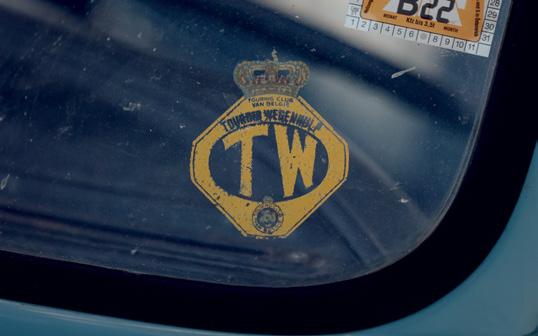



the USA.


The bus is still running its matching numbers 1600 twin port engine and gear box, which had both been fully rebuilt to the original specs by Pierre from Ottohaus back in 2014. After crossing half of Europe with this engine it needed another rebuild, which was done by Steve at
Flat4to6. On the second rebuild Pieter still kept it all original because it had always been so reliable that way.
The bus was treated to a new wiring loom in 2017 from VW Looms, so everything electrical is in full working order. The only addition is extra wiring for the diesel heater and interior lights
which all work off a leisure battery.
Pieter built the cabinets himself, following the Westfalia Berlin plans for inspiration. He owns a huge dog and adapted the layout to suit. The original kitchen cabinet wasn’t going to fit, so he got a two-pit stove from a friend and built a foldable table for it – very handy and saves a lot of space


while travelling. Also a Rusty Lee rock’n’roll bed was added and the upholstery was redone by Lemmens Interior Service.

Pieter would like to say a few thank yous: “I definitely have to thank my friend Mark for all the times he helped me taking the engine out or putting it back in. It’s been too many times! Also
Pierre at Ottohaus for the annual engine check-up before we leave for our yearly holidays and my late grandmother for supporting me to get the bus and even store it in her garage for years.”







WANT TO ADVERTISE HERE? PLEASE GET IN TOUCH AT advertising@hayburner.co.uk THANK YOU FOR YOUR SUPPORT.














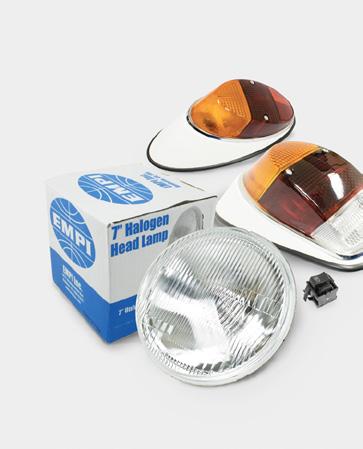







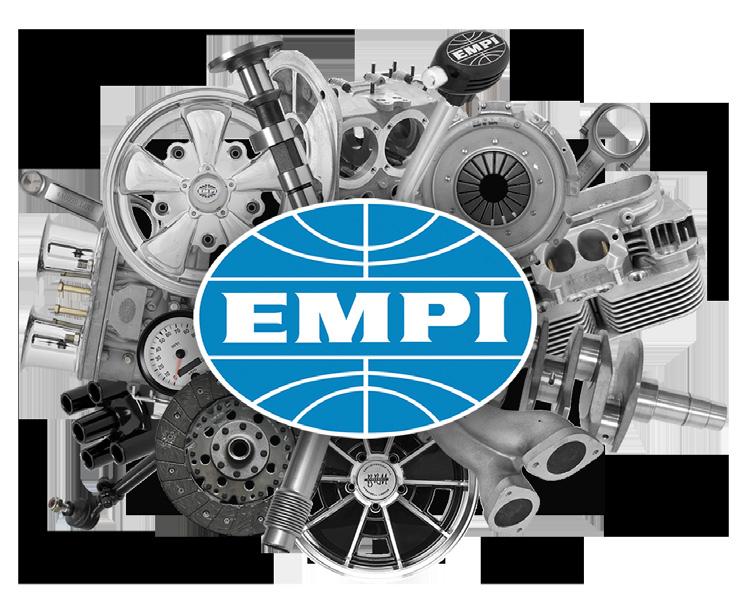

Visit your Authorized EMPI Distributor Today! empius.com Authentic EMPI parts are only available through EMPI Authorized distributors. From Restoration to High Performace and everything in between EMPI has ALL the parts YOU NEED!


TO ADVERTISE HERE? PLEASE GET IN TOUCH AT advertising@hayburner.co.uk THANK YOU FOR YOUR SUPPORT.
WANT







Like many of us, Jo Standaert got into Volkswagens with the help of some of his friends. For Jo it was at the tender age of 17, with the purchase of a 1966 Beetle that he’d had his eye on for a while. The ’66 was a completely original car in good, unfettled condition – just a nice, honest car. Jo took the plunge and bought the car. He drove it around for a little while and changed a few things, like the wheels and the ride height. A big change would come when Jo decided to go for a full respray in Milano Red; after

that he just enjoyed it. He was firmly bitten by the air-cooled bug and started to attend the various shows in and around Jo’s home country of Belgium, taking his ’66 with him and getting many miles under his belt behind the wheel. Going to shows is great, because you start to see other cars like your own. You see what other owners and enthusiasts have done with their own cars, and naturally some things stick with you. You begin to pick styles or
looks that you like and can’t shake and start to wonder if you should do that to your own car. And that’s exactly what would happen for Jo and his ’66.
One thing that nearly all of the shows have in common is a drag strip. Many of us in the UK have sat on the bank at Santa Pod, getting Pod face and watching cars burn up the track over the years – watching the times get quicker and quicker as people push the envelope
of what a flat four is capable of. Our European cousins are no exception. Shows like Das Drag Day at Bitburg in Germany and European BugIn in Chimay, Belgium have a very good showing of air-cooled drag cars running up the strip. Shows like these were also a favourite of Jo’s, and as he sat and watched the Drag Bugs he realised something. He wanted to go fast. So for the next mods on the list for the ’66 it was all about speed. Jo installed a 1641cc motor running twin Weber 40 IDFs and took his first runs up the drag strip. And he loved it. Jo kept the 1641 in for five years, using the ’66 as a street car
that he could take to shows but also run up the strip. He kept it that way for five years and enjoyed every moment of it. But the more Jo did drag runs, the more he started leaning that way, and the need for more power caught up with him. Jo decided that a new power plant was needed for the Bug in order to get his ¼-mile times down. This time, the power came in the shape of a 2054cc motor running twin 48 IDAs. With the help of this motor, Jo ran a personal best in 2007 of 12.2 seconds. In 2007 that was a very respectable time, especially for a Bug that was still a street car. The ’66 at this


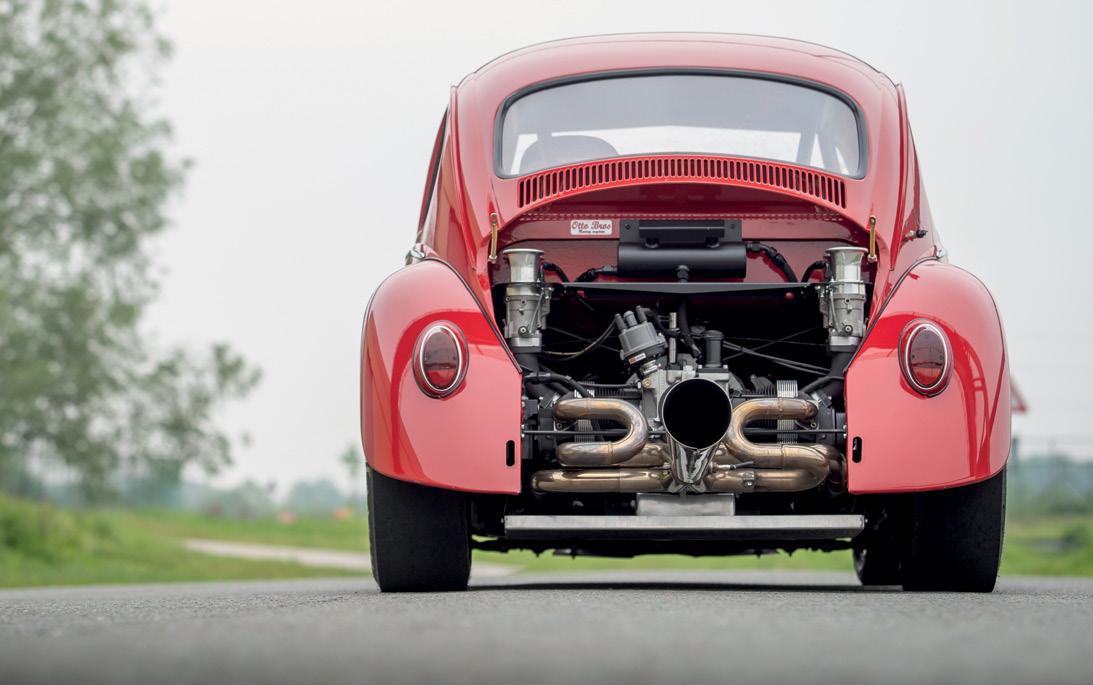
point was still largely the same car that Jo had purchased at 17, only with a big engine in it.
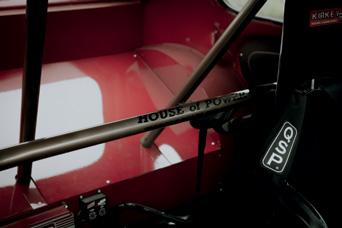



But then, at the end of the decade, life and other projects got in the way and the red ’66 went for an extended sleep in the garage – a hibernation that would end up lasting the better part of a decade. Jo didn’t lose his passion for VWs and the show scene. He had just bought himself a bus and was taking that to the shows now, enjoying the practicality of not having to pitch a tent, and sleeping on a nicer bed in his bus. But the ’66 wasn’t ever far from Jo’s mind and he started making plans for its reincarnation – serious plans.
Fast forward to 2015 and it was time to get the ’66 out of the garage and back to the shows. Jo’s favourite moments in the car had been when racing it. He’d always limited himself on the drag racing mods, always keeping in the back of his mind that he wanted the car as a street car too. He would drive from his home to the shows in the car, often hundreds of miles. But now, with the addition of his bus, he didn’t need to do that. He didn’t need to restrain himself anymore; the gloves could come off. High power and low weight = more speed. Jo had the power bit already, so the first thing on the list was to get that weight down. The interior had to go in order to make room for the more drag-inspired race interior that you see today. The windows all
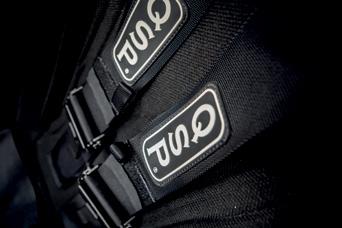

round were then replaced with Lexan windows. For safety and now with the extra room inside, Jo’s day job as a welder came in handy as he installed a full race cage.
Next came a 5cm gearbox raise, and an 80mm drop on the front. A Rhinocase gearbox with aluminium side covers, Weddle racing gears and Jay Cee spool was placed in its new higher home and would be paired to the engine with a Kennedy stage 2 clutch. A new set of staggered Erco wheels, 4x15 in the front and 6x15 at the back, wrapped in Hoosier race rubber, would be what transferred all that go to the road. The car’s weight,
even with all the new drag goodies, was down to an impressive 640kg, give or take a bit. With all the go parts sorted, Jo then looked at the braking system, opting for CSP Drag Discs at the back and an aluminium staging brake that Jo once again put his fabrication skills to use on.

The original intention for the power plant was to stick with the 2054cc that Jo had set his PB with back in 2007, but with all the time and effort that had gone into the new incarnation of the Milano Red ’66 and the standard that he’d now got it to, he decided that he had to have a new engine – a full-blown

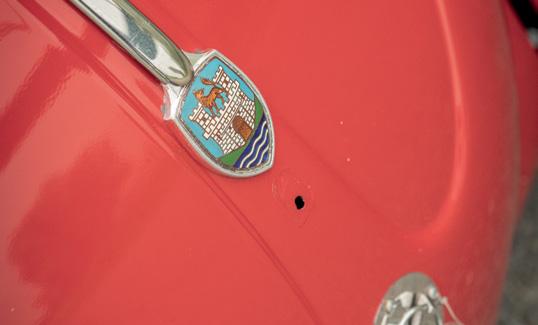
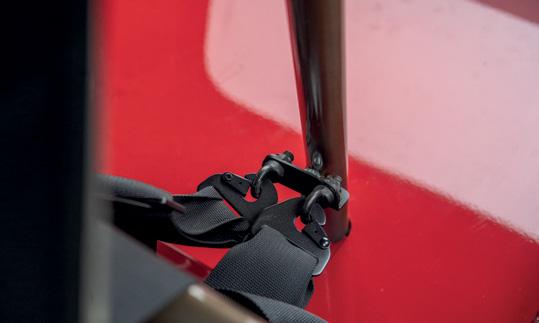
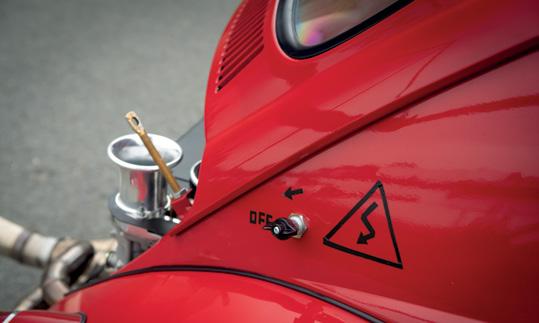


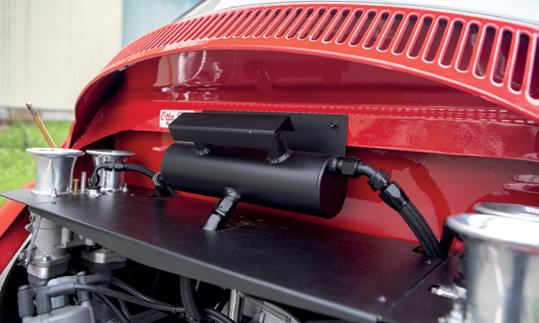

drag monster. Jo contacted Lenard Otto at the Otto Brothers and JPM to build a new engine. This engine is the one you see in it today and it was completed only last year. This engine is a 2386cc with 14/1 compression and runs on race fuel. It was completely built from the ground up with new parts, most of which are specialist racing components, with highlights like an Autolinea wet sump with an extra oil sump, an 86mm CSP flanged crank, scat rods and Wiseco pistons, JPM MS 250 heads and 54mm Gene Berg carbs, and a whole load of other JPM, Scat and CSP racing parts, as well as handmade parts from the Otto Brothers. This is one serious engine that has now
pushed the ’66 firmly into being a Drag Racer. We are excited to see what the car can do as it starts to make its maiden runs in Europe this year. Who knows? Maybe we’ll see it at Santa Pod in the future.

Now that Jo has finished his Drag Bug, he is concentrating on restoring his 1960 Cabrio Beetle that he plans to continue with this winter. Jo would like to thank Lenard Otto of the Otto Brothers for building his engine, his friends Tom, Gunter and Jan for being his crew on race days, and his wife Caroline for always supporting him in his crazy hobby.







Collect the current AirMighty Magazine #51 with awesome car articles; Puma GTE, 1960 Patina Panel, Westdale Barndoor Bus, Sweet Type34 Razor from CH, 1972 Raised Beetle and the cover car Irish Green ’53 Oval and show-coverages from the Ben Pon Show, KdF Only Meeting, Hebmüller Gathering, O.C.T.O. and more! > SINCE 2010 > Subscribe now and don’t miss a thing! Available online: www.AirMighty.com
Picture: Bob Daniels
CELEBRATING 50 ISSUES
CELEBRATING 50 ISSUES
CELEBRATING 50 ISSUES
CELEBRATING 50 ISSUES
CELEBRATING 50 ISSUES
SECOND INT. INDOOR
CELEBRATING 50 ISSUES
CELEBRATING 50 ISSUES
CELEBRATING 50 ISSUES

AIRMIGHTY MEGASCENE
SECOND INT. INDOOR
SECOND INT. INDOOR
SECOND INT. INDOOR
SECOND INT. INDOOR
SECOND INT. INDOOR
SECOND INT. INDOOR
SECOND INT. INDOOR
AIRMIGHTY MEGASCENE
AIRMIGHTY MEGASCENE
AIRCOOLED VW SHOW
AIRMIGHTY MEGASCENE
AIRMIGHTY MEGASCENE
AIRMIGHTY MEGASCENE
AIRMIGHTY MEGASCENE
AIRMIGHTY MEGASCENE





AIRCOOLED VW SHOW
AIRCOOLED VW SHOW
AIRCOOLED VW SHOW
AIRCOOLED VW SHOW
MORE INFO AND UPDATES:




MORE










AIRCOOLED VW SHOW
AIRCOOLED VW SHOW
AIRCOOLED VW SHOW


PRESENTING AIRMIGHTY MAGAZINE FEATURED CARS
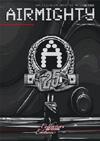


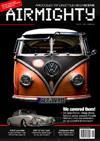








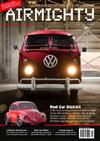


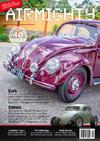









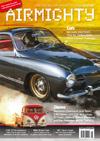

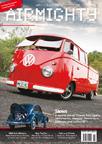



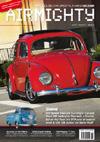























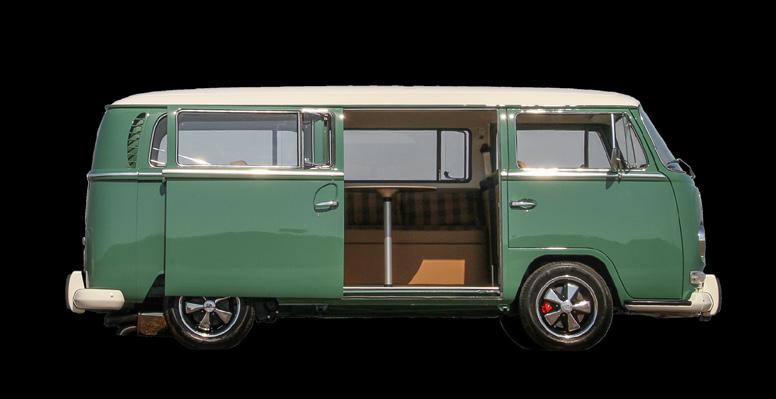






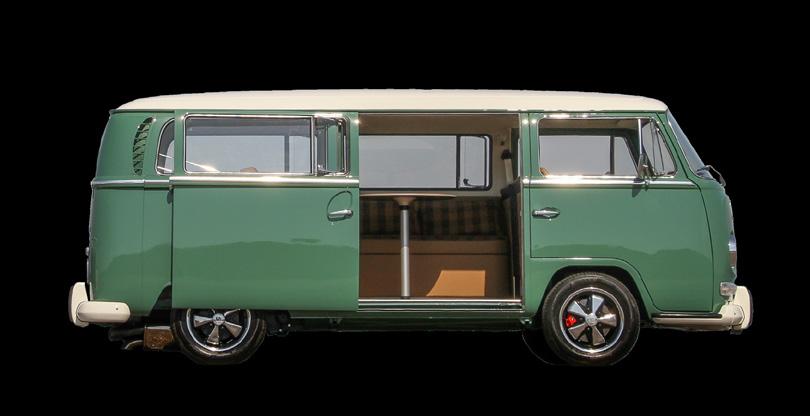














MORE INFO


MORE INFO: WWW.AIRMIGHTYSHOW.COM
INFO AND UPDATES: WWW.AIRMIGHTYSHOW.COM
SHOW CARS . SWAPMEET . AIRCOOLED VW PARKING . FOOD CORNER . CLUB DISPLAYS 1 on AIRBASE TWENTHE in ENSCHEDE, the NETHERLANDS AIRMIGHTY MEGASCENE PRESENTS:
INFO AND UPDATES: WWW.AIRMIGHTYSHOW.COM
PRESENTING AIRMIGHTY MAGAZINE FEATURED CARS MORE
SHOW CARS . SWAPMEET . AIRCOOLED VW PARKING . FOOD CORNER . CLUB DISPLAYS 1 on AIRBASE TWENTHE in ENSCHEDE, the NETHERLANDS
AIRMIGHTY MAGAZINE
PRESENTING
FEATURED CARS
WWW.AIRMIGHTYSHOW.COM
MORE INFO AND UPDATES:
SHOW CARS . SWAPMEET . AIRCOOLED VW PARKING . FOOD CORNER . CLUB DISPLAYS 1 on AIRBASE TWENTHE in ENSCHEDE, the NETHERLANDS AIRMIGHTY MEGASCENE PRESENTS: MORE INFO AND UPDATES: WWW.AIRMIGHTYSHOW.COM SHOW CARS . SWAPMEET . AIRCOOLED VW PARKING . FOOD CORNER . CLUB DISPLAYS MORE INFO: WWW.AIRMIGHTYSHOW.COM
1 on AIRBASE TWENTHE in ENSCHEDE, the NETHERLANDS MORE INFO AND UPDATES: WWW.AIRMIGHTYSHOW.COM SHOW CARS . SWAPMEET . AIRCOOLED VW PARKING . FOOD CORNER . CLUB DISPLAYS MORE INFO: WWW.AIRMIGHTYSHOW.COM

96
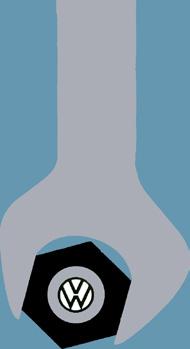





WANT TO ADVERTISE HERE? PLEASE GET IN TOUCH AT advertising@hayburner.co.uk THANK YOU FOR YOUR SUPPORT. See our Website for further details : TheGermanJunkies.Com Genuine Parts For Fixing Der Kaputt Old-Timer VW • New Old Stock and Restored 40’s 50’s and 60’s VW Beetle and Bus Parts and Accessories


WANT TO ADVERTISE HERE? PLEASE GET IN TOUCH AT advertising@hayburner.co.uk THANK YOU FOR YOUR SUPPORT. Peak Van Conversions www.peakvanconversions.weebly.com See our range of caddy conversions for South West Microcampers at www.southwestmicrocampers.co.uk peakvanconversions@hotmail.com
WORDS AND PHOTGRAPHY BY VICTORIA
FAUX


I am still pinching myself each day when I look out and see my new (to me) May 1967 Beetle. It all started in October 2022, with a very quick mention to Ned that I was thinking about starting to save up for a Beetle as a summer daily for the following year. Since selling my beloved Citi Golf earlier on in 2022 I was getting a bit bored of the Up! (I love the silly little thing still, don’t judge me!), but nothing replaces getting into a solid pokey air-cooled on a summer’s day, and after selling my Ghia a few years previously I have regretted it ever since. So when I say I mentioned this in a fleeting comment, it rapidly turned into “Project Find Vic the Best Air-cooled Out There” and Ned started sending me pretty much everything that was for sale out there that was nice and
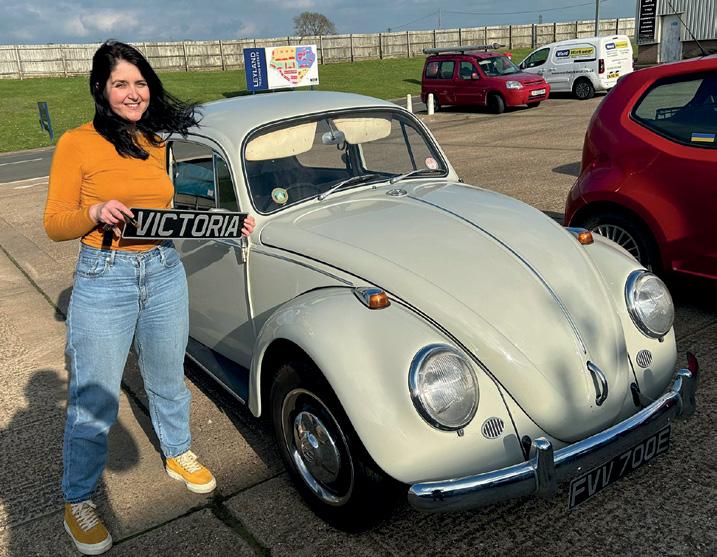

solid. Having a husband who is an expert in the VW world might make you think that my little niggle for something cheap to run throughout the summer would be easy, but don’t let that fool you. I quickly found myself looking at some really (really) nice cars which then moved on to me looking into getting a loan as I knew it was going to exceed what I could save. I had to stop a few times and think did I really need a new car?
Basically, to cut a few months short, I talked myself in and out of this ownership quite a few times. I put it to the back of my mind and had to reel Ned in too, and said we had other pressing matters in both our business and personal lives that our energy had to steer towards. Fast forward to February 2023. Ned mentioned that a good friend and fellow Beetle geek Pete Marshall would be attending the Midland Swapmeet and that I “needed” to have a chat to him about his soon-to-be-forsale 1967 Bug. Pete had briefly mentioned to me before about his beetle (Gracey) and that he had been thinking of selling it. He had
purchased the ’67 14 years ago, it being his first Beetle and even taken his wife Lucy to the hospital for the birth of his first child, so it had to go to the right home. I briefly looked at a few photos online and knew straight away it was not in my price range. There
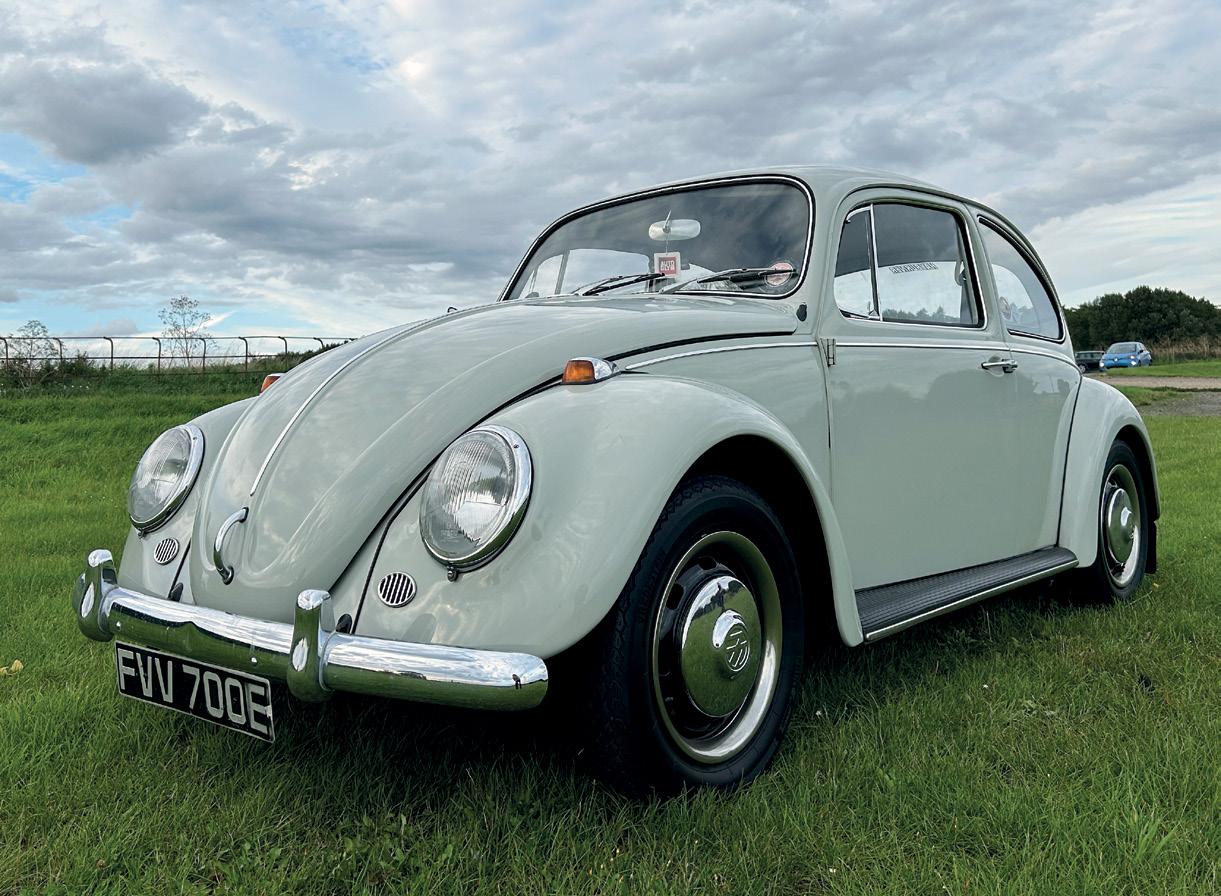
were a few times I thought (again!) about looking into getting funds I didn’t have but, just as quickly as the thought came, I talked myself out of it. You may have realised that I am quite indecisive, especially when it comes down to personal spending (there is only enough

room for one spendaholic in a marriage, right?), and I made the choice as I didn’t want to piss Pete around and I just had to accept defeat. Again. I have to say he was quite tough in not taking my no for an answer. I think he actually said, “Right, Vic, I am going to bring Gracey to you and you can just pay me back whenever”. Haha! I hadn’t even seen the car! He really did make me laugh that day. But I reluctantly declined his very kind offer. I had so much going on with work and my health and I really didn’t want to let anyone down and be that flakey person that so many people are these days.
Another fast forward now to early May 2023. It was another normal day at the office (when I say “normal”, we are always mad busy getting ready for a show or print day or something, I think it may have been Stanford Hall …) and everyone was a little chaotic getting their jobs completed on
the Friday before leaving for the weekend, although they were all being a bit odd and looking for more jobs to do than were necessarily needed. Ned was out picking up cars so I didn’t think much of it, until I saw him driving into the estate in a very nice shiny Beetle. I didn’t recognise it at first. I thought it might have been Dan’s (in hindsight it was a bit too shiny for Dan!) or someone else’s that was on display for the show, perhaps. When I asked, “Whose is that?”, Ned said, “It’s yours, of course”. … Whoaaaaa! I couldn’t believe it. I put one and one together and realised it was Pete’s very, very nice, tidy, solid and pretty Beetle. So, I still to this day do not know how he afforded it or what deal they made, but then again I had no idea on price as Pete and I didn’t get anywhere near that point at all. However, I accepted this gift with open arms and with a very big smile on my face indeed. 2023 has been quite
tough on me so far, mentally and physically (and don’t worry, I am all fixed and good now!), and I am lucky enough to have a husband who knows me quite well to pick something that has really cheered me up and reminded me of a less complicated time driving my Beetle about and tootling to work and back. It’s the simple things that count sometimes. It still cheers me up, in fact. I drive it every day (when it’s not raining), and I will carry on doing so as long as there’s no salt on the roads. It’s extremely precious to me and Pete knows I will be the good owner he was looking for.
That was quite a big intro to the ’67, and I apologise, but I wanted to fully explain why. I always knew there were one-year-only differences in 1967 Beetles, but it has taken this ownership for me to get more clued up and fully understand all the subtle changes and why they happened. After

speaking to Pete (he wouldn’t mind me saying this) and getting completely geeked out, I am so glad I have done it and I’m now letting you lovely lot know what I know too.
I might be a bit biased now, but the 1500 1967 Beetle you see here is arguably the best Beetle there has ever been. That might be a very bold statement, but I do genuinely believe it and I am going to tell you why. And I am also, as a sideline, going to say that Ned was right and I was not – something I do not say lightly. Below, I am going to go into all the transitions in a bit more detail, but I love that VW kept all the little aesthetic elements like the early 50/60s styling, but that it had the advanced extras that were soon to come. Aspects like it being the last year of the Beetle sloping headlights and long bonnet, as though it is giving a nod to its extensive history but is excited about its future. I also like the fact that it seems as though Volkswagen were using all their old parts and accessories up to make way for the new.

One other thing we need to get our heads around is that there were two different types of changes –one for the US market and then the other for the rest of Europe in 1967. There are a few reasons for this. Mainly due to all the safety law adjustments in the US throughout 1966–1968, VW had to make rapid changes to “The People’s Car” to ensure sales in America continued to rise. There were other aspects such as the introduction of the new 1500cc engine, which not only made it faster but also gave it a significant positive change in its rear suspension, expanding its track, reducing the torsion bars spring rate and incorporating a transverse spring – bearing a resemblance to Chevy’s modifications to the rear swing axle suspension set up of the 1964 Corvair. The changes from 1200 to 1500 were significant and VW’s changes throughout this period suddenly improved the car’s handling and made it a solid contender to the cars on the market throughout the States. I have compiled a comprehensive list of all changes to VW Beetles from 1 August 1966 to 31 July 1967, and have made notes on each change as to where they happened. Happy geeking out:
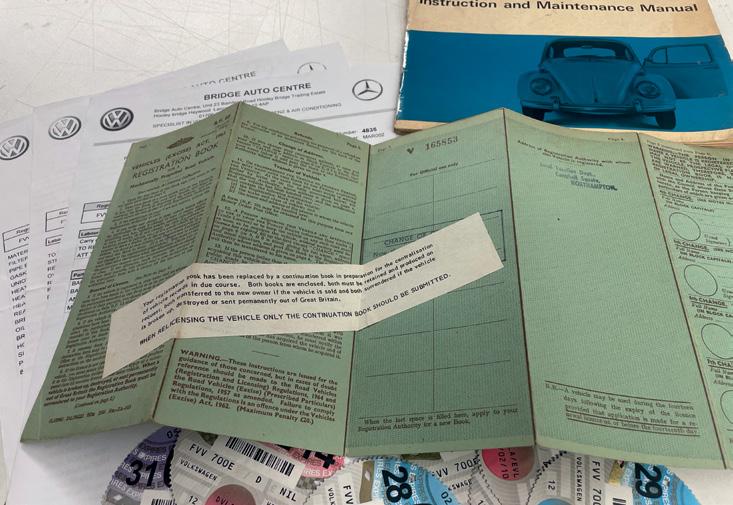
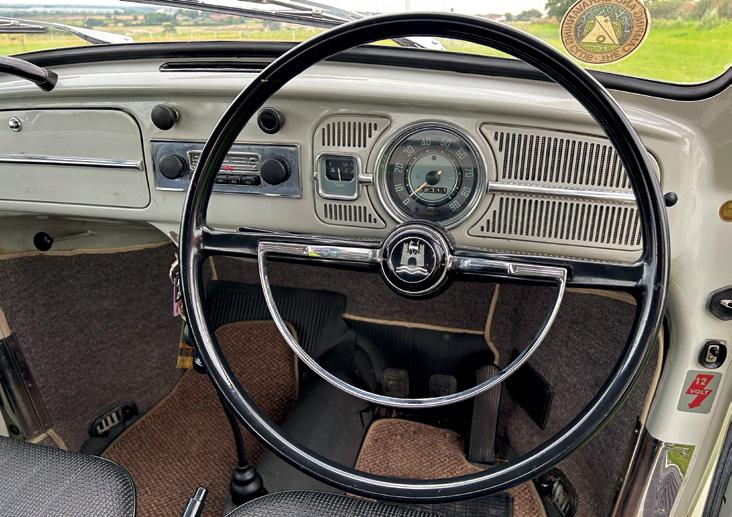
Aesthetics
“Volkswagen” badge was introduced onto the engine lid – US spec


1300/1500 badge on engine lid – Europe
6-volt electrics were replaced by 12-volt as standard – US spec
Exterior door handle has new design with a push button – Both US and Europe
Locking buttons on doors – Both US and Europe
Interior door handles were replaced with silver recessed plate and pull handle – Both US and Europe
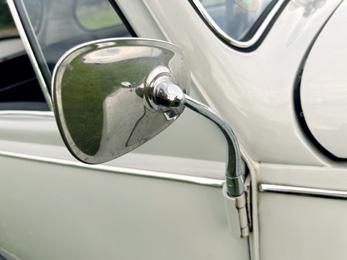

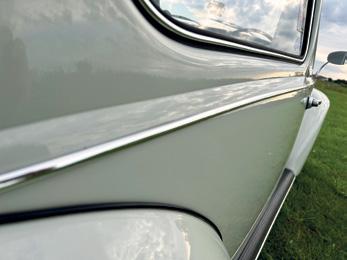
One-year-only window winders, dash and seat knobs – Both US and Europe

Driver’s arm rest was also added to door cards – Both US and Europe
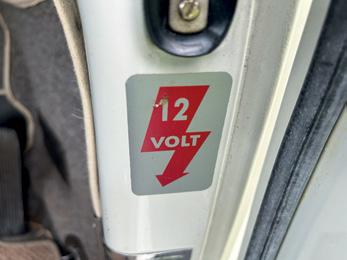
Reverse light added to bumper – US spec
Vertical headlights replace sloped glass lights – US spec
Driver’s outside mirror becomes standard –Both US and Europe
Exterior trim is thinner – Both US and Europe
1500 only hub caps - Europe only
Voltage regulator moved from generator to under rear seat – Both US and Europe

Rear track increased with wider swing axles to 1350mm – Both US and Europe
Clutch diameter increased from 180 to 200mm on 1300/1500 models – Both US and Europe
130 tooth ring gear (flywheel) replaces 109 tooth – Both US and Europe
Dual brake cylinder system (drum brakes) –Both US and Europe
Mechanical

Front discs (single circuit) on all 1500 models to some countries – but not US
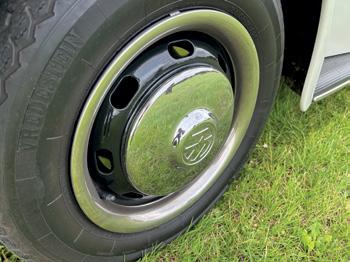
Drum brakes all round – US spec Generator increased from 180 to 360 watts – Both US and Europe
Two-speed wipers – Both US and Europe
US models get sealed beam headlights (other countries retain bulb-and-reflector)
Rear anti-sway bar added – Both US and Europe
Some people may disagree with my statement, but as you can see above, the changes were good, especially when it came to safety and drivability for the average VW owner. And I concur – when I say I love driving this thing, I really do. I have owned quite a few Beetles over the years, from Ovals to my first ever air-cooled 1972, and I have to say the difference is not really comparable. There are a few reasons, and maybe some are not what you might expect from the information given above. I think the main point in the ’67 is that it is completely stock and has hardly been touched. It is genuinely the nicest car I have ever
owned; not one thing rattles or whistles and the seals do everything they should. The windscreen wipers are great and its handling is the best I have experienced. If I had to be truly picky, I am not the biggest fan of the one-year-only front seat adjusters, but I think I will get over it.
Currently this summer, I am in a lucky situation where I can choose what I use to travel to work, for leisure and long/short distance stuff for work, from a variety of new and air-cooled cars, and you might have guessed what vehicle I would choose over all of them? Gracey, of course. I honestly think this is the most I have driven
a VW in the last 13 years of VW ownership … and it is probably the best all-rounder car. It’s fun, tootles about at a leisurely pace (I love the fact you feel like you’re not in a rush, unlike new cars where I just want to get from A to B as quickly as possible), looks the part, smells great and is very economical really. It is a shame VW didn’t carry on with the 1967 model, but I feel very lucky to own a little part of VW’s history that I enjoy so much. I want to say a massive thank you to Pete and Lucy for selling the ’67 in the first place and for all your help and knowledge. And of course to Ned – thanks for everything, especially this year.



ADVERTISE
TOUCH
advertising@hayburner.co.uk
WANT TO
HERE? PLEASE GET IN
AT
THANK YOU FOR YOUR SUPPORT.

www.hayburnerprint.co.uk 07864086172 print@hayburner.co.uk Unit 55 Leyland Trading Estate, NN8 1RS
NEED IDEAS?
SCREEN PRINT

Screen print is a versatile printing technique, allowed to be applied to a diverse range of materials. It allows for vibrant and bold colours to be printed, resulting in high-quality, eye-catching designs. Screen printed designs are highly durable and resistant to fading, washing, and wear. There is also a wide range of ink options, including standard, metallic, fluorescent, and specialty inks enabling creative and unique designs.



EMBROIDERY
Embroidery is great for durability, as it doesn't lose its quality or fade easily. The stitched designs are more resistant to wear and tear compared to printed designs, making embroidered clothing and headwear longer-lasting. It adds a polished and professional look to clothing & headwear, which is valuable for uniforms, workwear, and promotional items. It adds texture to fabrics, creating depth and dimension.
DTF PRINT


Direct to Film (DTF) printing allows for highresolution and vibrant prints with inctricate details and gradients, suitable for complex designs, photographs, and fine artwork. There are no colour limitations to DTF and no screen setup fees. DTF prints have a soft and flexible feel, similar to screen printing. There is no minimum order quantity and there is the ability to print white ink on dark fabrics.
DTG PRINT
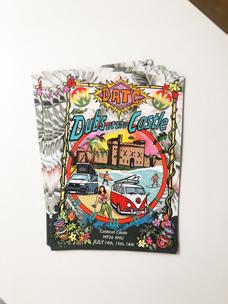

Direct to Garment (DTG) prinitng has many of the same benefits as DTF when it comes to printing, as they are similar techniques. Deciding which process is for you will be down to personal prefernce. We are able to offer one-off sample prints of both techniques for a small fee for customers who require it. The only difference between the two techniques is DTG is printing directly onto the garment instead of onto film first.
MARKETING ITEMS




We can print custom flyers, business cards, banners, flags, signs, posters, brochures, calendars and much more! We can do different finishes and techniques on all of them, perfecting every product to exactly what you're after. MOQ differ for each promotional item so get in touch with your artwork and we will get a bespoke quote made up for you. We offer quick turnaround times for these items, ready for upcoming events.

STICKERS KEYRINGS



AIR FRESHENERS
Our vinyl stickers are made from PVC material, which is sturdy and resistant to tearing, fading, and moisture. They're UV-resistant, which means they can withstand exposure to sunlight without fading easily. We can create custom shape stickers to your design and a wide range of vinyl to choose from, including clear, chrome, holographic, glow in the dark, and more.

Custom air fresheners are a creative promotional or personalised product that combines fragrance with branding, artwork, or messages. They can be used for marketing, gifting, events, and personal expression. All of our air fresheners are individually packaged in clear polybags to preserve the scent until they are ready to be used. Our MOQ for air fresheners is 500 units, but prices per unit decrease with higher quantities.
OTHER ITEMS
Our custom keyrings are excellent promotional items for businesses. They provide a costeffective way to increase brand visibility, as they are frequently used and easily seen by others when attached to keys, bags, or other items. They make memorable souvenirs for events, conferences, or special occasions. Our keyrings can be made from a wide range of materials, including metal, plastic, leather, acylic, and more.

And the list doesn't stop there! We can print onto anything your imagintion can think of, so if you have any ideas, please get in touch!
More ideas: Badges, Bags, Boxes, Packaging, Tape, Coasters, Dog tags, Foam fingers, Greaseproof paper, Lanyards, Lighters, Magazines, Medals, Mugs, Mouse mats, Notepads, Pens, Socks, Swing tags, Umbrellas, Vehicle graphics, Water bottles, Woven labels, Wrsitbands, and much more!







WANT TO ADVERTISE HERE? PLEASE GET IN TOUCH AT advertising@hayburner.co.uk THANK YOU FOR YOUR SUPPORT.



 WORDS BY JAMES PEENE PHOTOS BY DANIEL NORTON
WORDS BY JAMES PEENE PHOTOS BY DANIEL NORTON
Everyone reading this dreams of a barn find. Pulling back a creaky old door to find a slice of air-cooled treasure thickly coated in dust is the dream score. The thing is, it doesn’t happen as often as any of us wish – certainly in this country, where pickings are much slimmer when compared to places like the USA – but there are those who
already know where the treasure can be found. Sometimes it’s not even really lost, simply tucked away for a bit, and that “bit” has stretched into months, years and even decades.
This tends to happen when the vehicle was the cherished possession of a family member
who for one reason or another stopped driving it. And it’s the story behind this fantastically original UK right-hand drive ’66.
At the time of writing it belongs to Mike Francis, but it was originally his father, David Francis’s bus. David and Mike’s mother Mary married in 1964 and bought the


11-Window brand new in 1966. Mike told us: “It was always a holiday car, but we used it a lot. My mum and dad would drive my sister Joanne and I all over the place for holidays. Up to Scotland and across to Ireland and down to Eastbourne where we had relatives for bonfire night. He started taking it to VW shows and as the years went on dad recognized it was quite a unique vehicle. In the 1980s he took it to shows like VW Action at Stoneleigh. We’d all camp in it over the weekend and then he’d enter it in the concours on the Sunday. The judges would all be


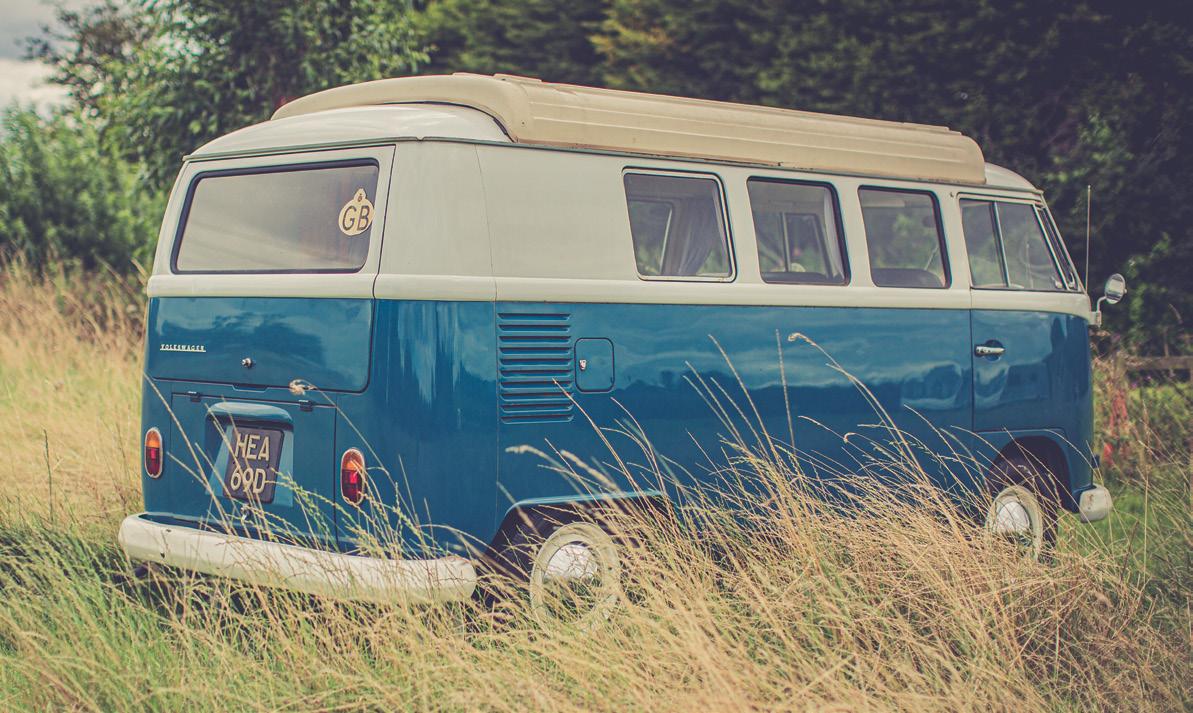
impressed by how original it was but there was a bit of surface rust here and there and it always seemed to take second place. One day dad decided it needed a bit of tidying, so he drove it into the garage, chocked the wheels and that’s where it remained for the next 40 years.


“Dad bought a Bay to use instead, which I drove to the South of France when I was 18 years old, but he always planned to tidy the Split up. Not paint it but preserve it. He was always mechanically minded and

looked after it, but you know how it goes, life got in the way.”
Sadly, Mike’s father passed away before the ’66 could see the light of day again. Mike planned to get it back on the road but things like lockdown got in the way, and he’s also realistic about the camper, saying: “The reality is I’m not very mechanically minded myself. I also don’t have a garage to keep it in and neither does
my sister. We really wanted to do something with it and after my mum passed away we didn’t have much time to clear the house and garage. They’d lived in the same house for over 50 years and the clock was ticking, so we had to do something about moving the Split ASAP. My sister spoke to a local VW guy she met, Wayne Southall, who does weddings under the name Heart to Heart Vintage Volkswagens. Wayne told us it wasn’t something he

could help with but he knew a man who could.”
This is where JAVA’s Jonny Abbot comes into the frame. Jonny told us: “Mike called me up and asked if I could help with moving the bus and getting it up and running again. I agreed and went down with a trailer to pull it out of the garage, but it turned into a real mission. We got there at 10am but by 6pm we’d practically given up. The bus was surrounded by
old TVs, microphones and pieces of electrical equipment Mike’s dad had stored in the old wooden garage, and it was down a really long, narrow path so access was difficult. It had actually sat for so long that it had sunk into the concrete floor and three of the brakes were locked up.
“Mike managed to drag it out with his 4x4 but we couldn’t get it onto our trailer. It had to be gone that day, so we ended up calling a local
company and they came out and winched it onto their trailer and delivered it to my unit. It was a real mission, though.
“Once it was back at JAVA I had a really good look around it and couldn’t believe how original it is. I hosed it down and have washed it five or six times. Each time it just got better and better.
“There’s a bit of surface rust around the windows but it’s just
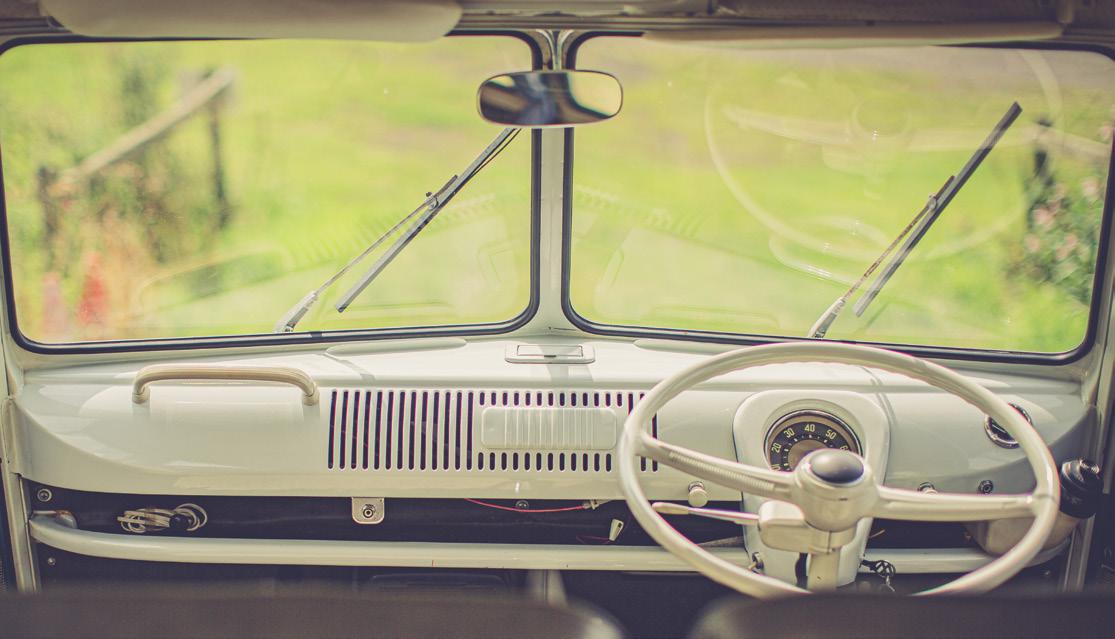


too nice to mess around with. The long panel is phenomenal. You can see all the factory spot welds and it’s never been anywhere near a welder.
“I’ve never opened cargo doors like it. Everything is just like factory. I’m going to take pictures of everything for future reference. Things like how you fit the door
rubbers properly, which some resto companies don’t. The interior is pretty much flawless. I’ve never seen original door cards or a headliner like it. There are no badges on the interior so I’m not sure what it is [Mike thinks it’s a Canterbury Pitt, -ed].
“I’ve shipped a lot of original VWs into the UK over the years but they
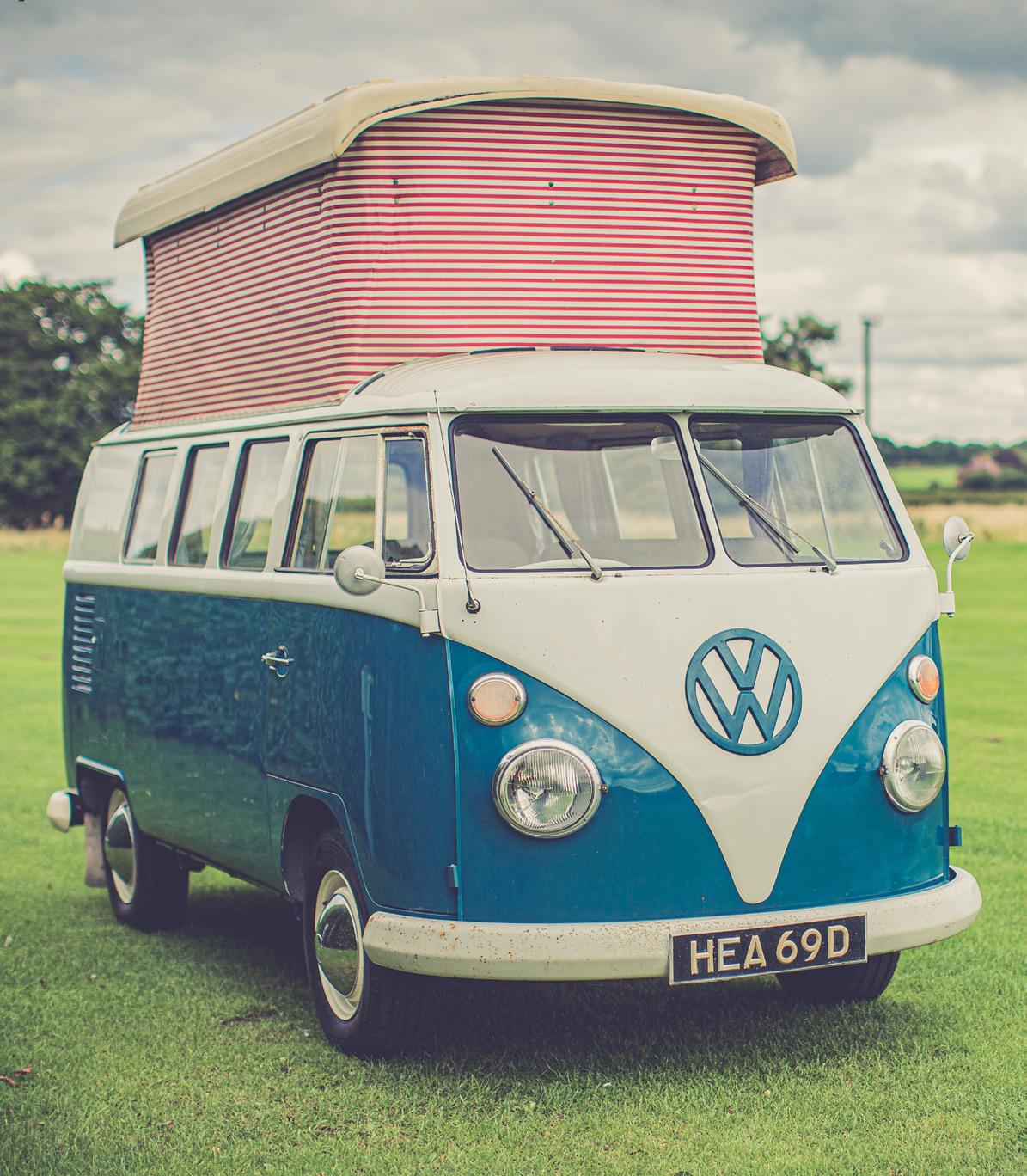
all have fried rubbers and interiors. Everything on this is like it left the factory. When I pulled the cooker open there was a newspaper from August 1981 and a My Weekly magazine from 1983. It’s a proper time capsule.
“We went through the bus from top to bottom. All of the braking system was renewed, with new shoes, cylinders, hoses and a

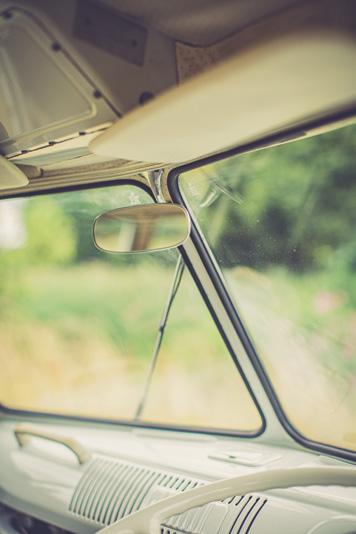

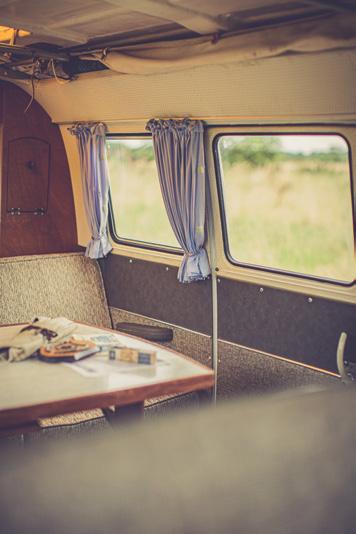






master cylinder and the wheels were repainted and fitted with new tyres.
“We also installed new front wheel bearings and renewed the fuel system as well. The original 1500cc engine was cleaned up, serviced and given a new exhaust. Once I’d fitted the new 6-volt battery it fired straight up, first time of asking. Unbelievable.


“I’ve still got a few bits to do on it and will MoT it, and then it will be good to go to its new owner. There’s a really interesting lady lined up for it and she’ll be perfect for it. Better still, she plans to keep it exactly as it is and use it for camping.”
Mike is understandably happy that the family camper will enjoy a new lease of life. He says: “It would
have been nice to keep it in the family but I think we’ve done the right thing by it and dad would be pleased. About 10–15 years ago he was talking about getting it back on the road and taking it for another long road trip. That didn’t happen, but he’d be happy to see it back on the road where it belongs.”



Because you wouldn’t want a boring shifter?
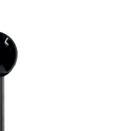

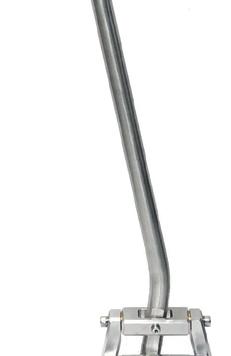

Engineered in Germany / Assemebled in the UK / Customised by you.

Big John.
One for the custom guys. When we say big, we aren’t just playing around. This guy is a full foot taller than a standard Bug-Tech Bus shifter, measuring in at an impressive 800mm (31.5 inches) from top to bottom.
They come as standard on a Bus base, because more often than not they go in buses. But fear not you Bug people, we can put them on a Raceshifter base too.


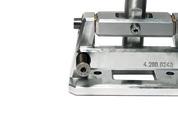
Bus Shifter.
Bus gears are renowned for being a little all over the place at the best of times. With a Bug-Tech you can say goodbye to feeling like you’re in neutral in every gear. This is one of those upgrades that is maximum gain from minimal effort.
The Bug-Tech’s easy installation can simply have this installed in two bolts.




Daily Driver.
Crafted from Aircraft grade billet aluminium, designed and engineered in Germany. Each shifter is individually handbuilt in the U.K to order.
The daily driver has a 40% throw reduction from the 60% of the Raceshifter, making it better suited for daily use. With easy installation the shifter bolts in with ease, transforming the feel of your car’s shifting in minutes.
Race Shifter.
A favourite of racers on and off the drag strip. Go to any Drag strip where there is a classic VW class and you are almost certain to see one. The shifter is easy to fit, easy to maintain and easy to use.

The throw reduction on the Raceshifter comes in at 60%, cutting down on the time between changes. Our shifter is often copied but never matched, neither is our 25 year warranty.

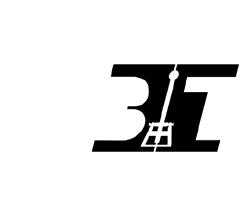
Powdercoated.



One thing that sets BugTech apart from the rest of the market is you can change them. We like the custom takes, and we fully encourage you making your shifter your own. From colours to custom bends, shorter or longer with custom lengths. We can take care of it. With powder coating we can really customise the look of your shifter from one colour sleekness to multiple colours. Where there’s a RAL number, we can probably do it.




Polished.
We know that the raw look isn’t for everyone. Some people don’t want powder coated either and want a bit more shine in their lives. We can have our shifters properly hand polished right out to a mirror shine. This isn’t a quick scrub with some metal polish, oh no. We are talking every individual component hand sanded and polished by hand, the old fashioned way prior to being assembled. No corners cut on this one.
Custom Gator.
We made the gators, but just like our shifters we had to make them customisable too. We now have the full range of westy fabrics and have even made one from denim for a jeans beetle too.

We have been reliably informed by our seamstresses that they could make them out of pretty much any fabric, maybe we could test them on that theory?



Classic Gator.






If we were going to cover up the unique aesthetics of our shifter we wanted to make sure that something looked equally as good.


These gators are hand made from high quality and upholstery grade material. We picked this material to go the extra mile not just on durability but on looks too.

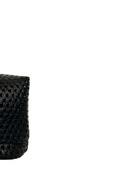
The Classic gator is available in both Black and Tan colours for all of our shifters.
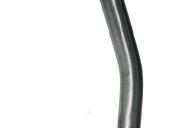


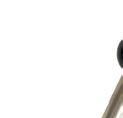



Buy authentic shifters with a 25 year warranty only at www.bug-tech.de
(always check the serial number)



ADVERTISE
TOUCH
advertising@hayburner.co.uk
WANT TO
HERE? PLEASE GET IN
AT
THANK YOU FOR YOUR SUPPORT.


Find us on search ‘Midlands Air-Cooled Swap Meet’
WORDS BY DAN MORRISSEY
Plasterer’s Porsche, Poor Man’s Porsche, Plastic Porsche and, my personal favourite, it’s a Volkswagen. You’ve probably heard more too. All said about the Porsche 924 and its offspring. All wrong. And here’s why.

Now to be fair, like all good rumours, there is an element of truth to some of these names. The first one that is relevant to this

story is that the Porsche 924 is actually a Volkswagen. Yeah, kind of true, ish.

You see Porsche, as you may already be aware, back in the day was predominantly an engineering consultancy firm. Car manufacturers would go to them with an issue or a want and Porsche would help fix it. One such design gig that I’m sure you


will have heard of was the VW Beetle. This part of Porsche’s business, for a long time, was its bread and butter, the bulk of what they did, and how they actually got started as a company. And in the 1970s that was still true. So in the early 1970s VW needed help and they did what they had been doing for decades; they went to Porsche.
VW went to Porsche with a brief:
“We want a two-seater sporty car, but it needs to be cheap.” VW wanted to make a people’s sports car. It was actually the second time that VW had asked Porsche to make a sports car. The first time around, Porsche came up with the 914, which was originally intended to be a Type 34 Razor replacement with a flat four engine and 912 replacement with a flat 6, with slightly different bodies for VW and Porsche, respectively. That whole thing became a bit of a convoluted mess, but that’s a story for another day. But still, VW came back around nearly a decade later to have another go at the range-topping sports car idea, yet whether said car would ultimately wear a VW or an Audi badge was yet to be decided.

So Porsche got to work. They started Project EA425 and hit the design table. To keep it affordable, the project would need to be a parts bin car. That is, it would need to use as many parts as it could that already existed instead of making new ones from scratch. Porsche could then save VW tons of money in design and development – money that would ultimately end up on the forecourt price. For example, the door handles, glovebox, interior door pulls, etc., all came from existing VW cars, mainly the Mk1 Golf. But more than that, the mechanicals did. It would have the front suspension set up from a 1303 and Mk1 Golf mash up, brakes from a k70, half shafts from a Trekker, and a 4-speed gearbox from an Audi 100. The latitudinal design of the gearbox allowed them to simply move it to the back of the car to make it rear wheel drive. The early ones still have the bell housing on the gearbox where it would have mounted to an engine. Also they would use an Audi engine that was used in the Audi 100 (later that same engine would be used in VW lt models, giving rise to the rumour that the 924 has a van engine, but that was later). All of this was in an effort to keep the costs down.
On paper, the car worked and would deliver everything that Volkswagen wanted. Confident in their design, Porsche handed it off to VW. The problem was the timing of the project. In 1973 the oil crisis had hit. VW were concerned about a post-Beetle sales slump and they had a new CEO at the helm, and this CEO was concerned more about riding the potential incoming storm than he was about taking a punt on a sports car. So he shelved Project EA425 to pursue a different project that was in the pipeline instead – a little car you may have heard of called the Scirocco. With the Scirocco a go, the EA425 was shelved indefinitely. Meanwhile, Porsche were also building cars; however, they needed a new model to replace the 914. They too were concerned about the impending doom of the oil crisis and were looking for a new entry-level model. They liked the little car that they had designed for VW and knew that VW weren’t going to use it, so they tried to strike a deal with VW to buy the design back. They came to a deal which meant that the car would be built at an Audi facility with Porsche oversight. Porsche would get to buy up to 100k of the 2.0 Audi engine and Porsche would reimburse 40 of the 50 million Deutschmarks that VW had shelled out paying for the design. Now all Porsche had to do was put a number on it and call it a day. They chose 924. Interesting piece of information: that number is meaningless. People have speculated that it was the next 914, so 924, but that’s not it. There’s also




the front-engined water-cooled transaxle car that Porsche were developing of their own, the 928. This car was a v8. So 928, 8 cylinder, 924, 4 cylinder? Makes sense, right? But no, not that either.
So in 1975 the 924 debuted at a press launch in the south of France. Did Porsche have much to do with its physical assembly? Not really, no; that was Audi. And it was a VW idea, but Porsche made it a reality and when it hit the market it was wearing Porsche badge.
Anyway, much to everyone’s surprise – including Porsche’s to an extent – it sold pretty well. People liked the look of it and it had an almost ideal weight distribution which made it handle really well. It was actually a decent car, except for pretty much everything else. The little 95-horse Audi 4 banger was slow, the prop shaft was noisy and the torsion bar rear end uncomfortable. The ride was rated
by one US car-testing mag as the worst riding car on the planet. But it had flashes of brilliance, so Porsche decided that they would put some effort in and fix all of these complaints. They started with the engine. They took the Audi engine to Stuttgart and did their Porschey magic on it. They completely redesigned the head, the valve timing, the inlet manifold and a whole host of other things including slapping a turbo onto it. Now it was cranking out 175 galloping Stuttgart stallions. They also gave it a 5 speed gearbox that it desperately needed and disc brakes all round. This did the trick with the performance and everyone praised it for now having the speed to match the looks, with Car and Driver Magazine hailing it “Fast, at last!” But they had another issue. Audi said that they would sell them up to 100k engines. Well, they were nearly at that and still selling cars so what to do now? For their next engine they tested out a few other companies’ engines but didn’t like anything and decided
on taking the v8 from the 928 and chopping two cylinders off to make a v6. That didn’t work either, and in the end they decided to go with chopping their 5.0 in half lengthways to stick with a four cylinder. But in true Porsche style they ended up engineering the heck out of it and the 2.5 shared no parts with the v8 that it was based on. The 924 would go through various more changes, giving rise to models like the 924 Turbo, Carrera gt and the 924s, eventually receiving a facelift and a wide body kit and getting called a 944. All told, the 924 would be sold for 12 years, selling over 150k cars. Its descendants, the 944 and the 968, would continue its span across three decades and take those numbers to the near mid-300k.
The Porsche 924 may have started out as a VW idea. But that was all it was. The car that Porsche came up with was their own idea made from some VW parts. And in fact the VW mechanics were what actually hurt




the 924 in its infancy. As soon as Porsche decided to make it more Porsche, it became an era-defining car for them, and in Porsche sales numbers it was a slam dunk. They managed to ride that pony from the mid-70s until the mid-90s. The 924 embodied the Porsche spirit of the little motor that could. Of engineering and design making a car fast, more than just all-out power. At different points in time, the 924 and 944 were both at the top speed areas of around 150 mph for the higher end models, some of the fastest top end cars of the era. Porsche took the two-seater Volkswagen with a van engine in it and made it a giant killer and one of the best handling cars on the market at the time, and to me it doesn’t get much more Porsche than that. So yeah, it’s got some Golf bits in it and it was assembled by Audi workers for its first few years. But this car kept the Porsche company in the green. It kept the lights on and allowed Porsche the wiggle room to develop the other models that you may class as more Porsche. Without the 924 we probably wouldn’t even have 911s from the late 70s onwards.

As I mentioned earlier, making and selling cars wasn’t the main gig of the Porsche company at the time: that was consulting. Without a successful time selling cars they might have even dropped their car selling side-hustle altogether to concentrate on their actual jobs as engineers. So the 924 might not only be a Porsche, it could be THE Porsche.
And for everyone that likes to say it’s a Volkswagen. Could you imagine if it actually was a Volkswagen? I think our car shows would be rammed with them. From the Karmann Ghia and Type 34 Razor days to pretty much the Audi TT, VW didn’t have a car like this. The VW Notus could have been huge! But it wasn’t. Because it was never a VW. (Also, I don’t know if it would have been called a Notus, but they liked to name things after the wind in that era so I picked a wind name!) And finally let’s address the “Plasterers Porsche” thing. In the UK a Porsche 924 Turbo would have set you back £13,029 (around 72.5k in today’s pounds). The UK average house price at the same time was £19,273, or 1.4 924s.
I’ve found an advert for plasterers offering £43 a day, and that was considered to be a well-paid gig in a swanky part of London; it seems that £25 a day is more realistic. For a car-related comparison, a 911 would have cost £16,731 and a Golf gti was £5700 and that was a good 10–20% more expensive than the competition. You could buy run-of-the-mill normal family cars for around £4000 brand new. So by all accounts the 924 was not a cheap car. It was more expensive still if you lived in the States as the value of the Deutschmark grew in comparison to the US dollar. The 944s and 968s were hideously expensive over there. It was actually one of the main factors for discontinuing the line. It was far from a poor man’s anything.
So there we have it; now you know. The 924 is not a Volkswagen, it’s not a Plasterers Porsche, it doesn’t have a van engine, and it’s a seriously cool car that often gets shunned by enthusiasts for not being “a real Porsche”. I want one.

Check out our improved website for new parts and accessories





*NEW AND IMPROVED* Bay Window fuel sender access hatch for Late Bays.
Hayburner Bay Window Fuel Sender Access Hatches
Bespoke, handmade and high quality windscreen cover comes in a range of colours, edge trims.





Quick and very easy to fit these covers will be keeping that early morning sunshine well away from those camping lie in eyes! All our covers also come with a small Hayburner label and fully complete with storage bag.
Custom orders are welcome, please email hayburnersales@hayburner.co.uk
Available front and rear for all year buses.
Custom-made Gear Knobs
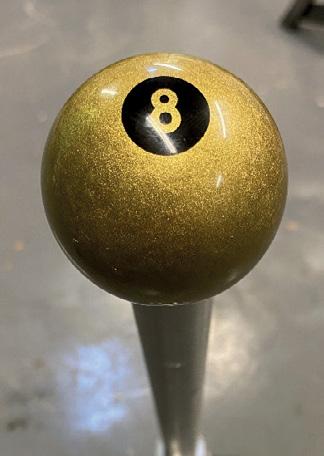
A simple solution for busses that have had (or are going to have) a hole cut in the rear parcel shelf to access the fuel sender and laser cut to the correct profile.
Easy to fit, but if you’re not experienced or confident in the procedure please seek professional advice before cutting above your fuel tank.
Watch this space for a split screen version



VW Front and Rear Screen Covers

Bug-Tech made gear knobs, but not just for Bug-Techs.
We now have a whole section on the website dedicated to gear knobs. The new gear knobs are available for all models of VWs.
They are drilled and tapped to fit the standard gear shifter from your car. We can make them for aircooled models and for Type 25’s even T4’s.

Have a look at our range or send us an email to see if we can make one for your car. Keep an eye out because we are constantly expanding the range too.

Dan@hayburner.co.uk



Carburettor Kits and Accessories










We’ve sourced one of the best suppliers in the UK for classic Volkswagen carburettor kits with some added punch!
Different sets of Weber and Dellorto’s whether for twin-port or single port, standalone or twins, Type 1, 3 or 4 engines - get your replacement carburettors for your Aircooled Volkswagen engine here on the Hayburner store.

We also have a range of linkages and air-filters for all your carby needs.


*NEW* and improved EVA Restos Skid plate - Armour for your front beam that helps skip over bumps in the road. The latest design for our super popular T1 Skid Plate kit, designed to offer unrivalled protection for your framehead bottom plate/edge on your lowered beetles and Ghias.
Fuel Filter Kits - An elegant and safe solution to fit your inline filter. Fits to the side of a stock T1 gearbox using the original fixings and sits inline to join the stock chassis solid line to the engine bay solid line. Mounts the previously vulnerable filter out of harms way, and it’s positioning makes for the most efficient filtration without being dangerously mounted within the engine bay itself.
NEW Range of Alloy Wheels




What better way to treat your car than with a new set of wheels!
Wheels, It’s one of the first things we thing about on our cars. It’s also one of those details that can make a car’s look or completely change it’s style. Maximum effect for minimum effort.



We’ve added a brand new wheel selection to our site now with PCD’s to fit the most common models.

Whether you are early or late, split or wedge, chrome or detailed we have something for you. And we are still expanding the range too.


WWW.HAYBURNER.CO.UK
Skid Plates & Fuel Filter Kits 023-07-04 at 14.05.09
EVA

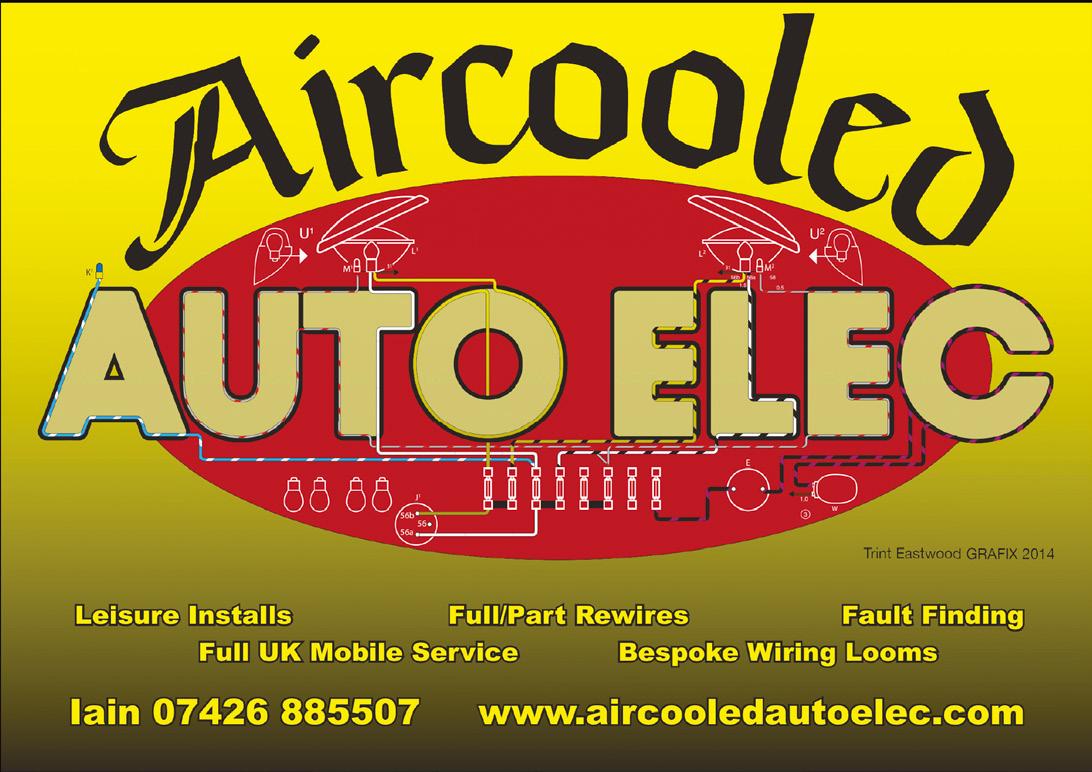
WANT TO ADVERTISE HERE? PLEASE GET IN TOUCH AT advertising@hayburner.co.uk THANK YOU FOR YOUR SUPPORT.


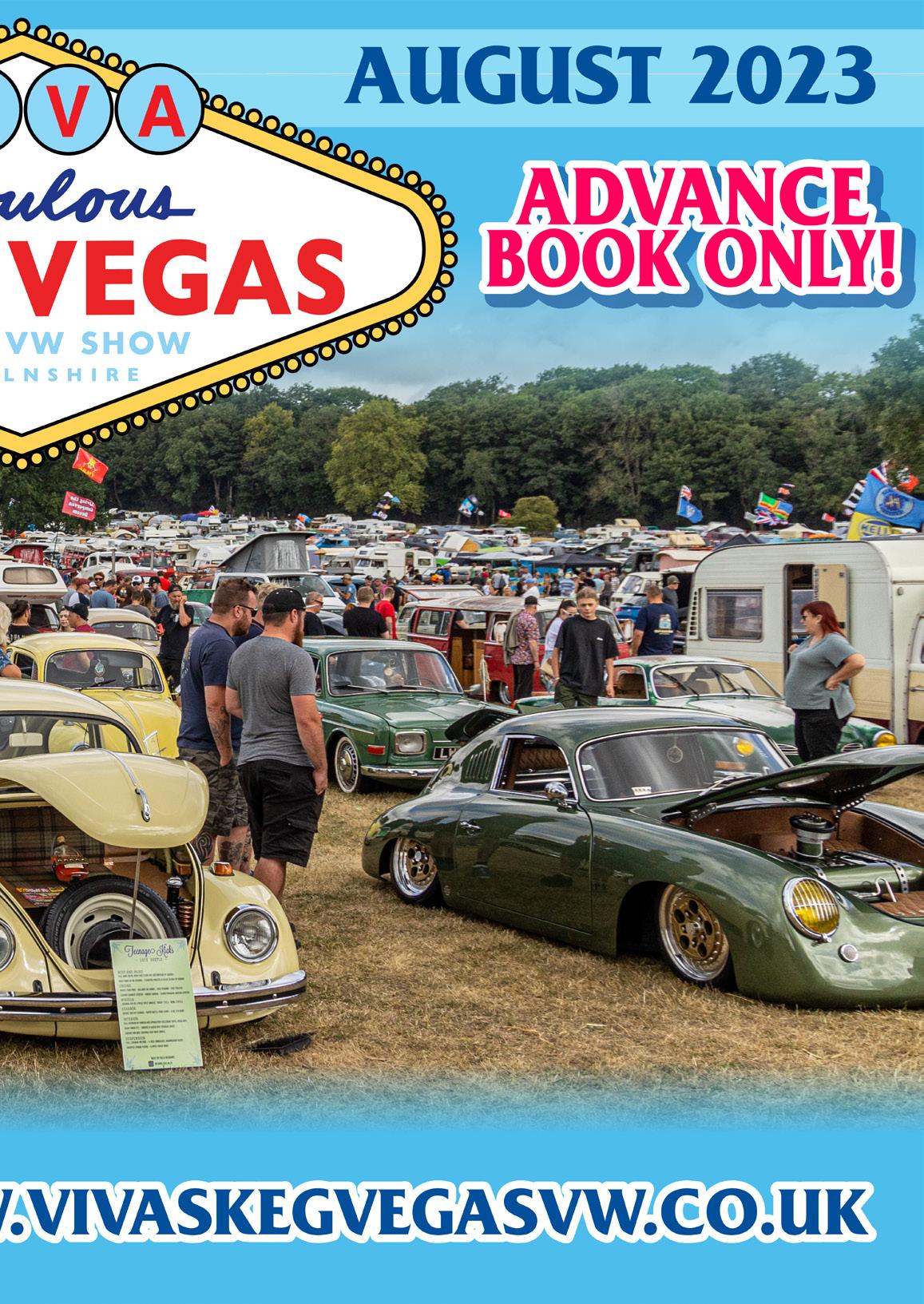 WORDS BY STEVE WALKER
WORDS BY STEVE WALKER

 PHOTOS BY DAN DU CROS
PHOTOS BY DAN DU CROS
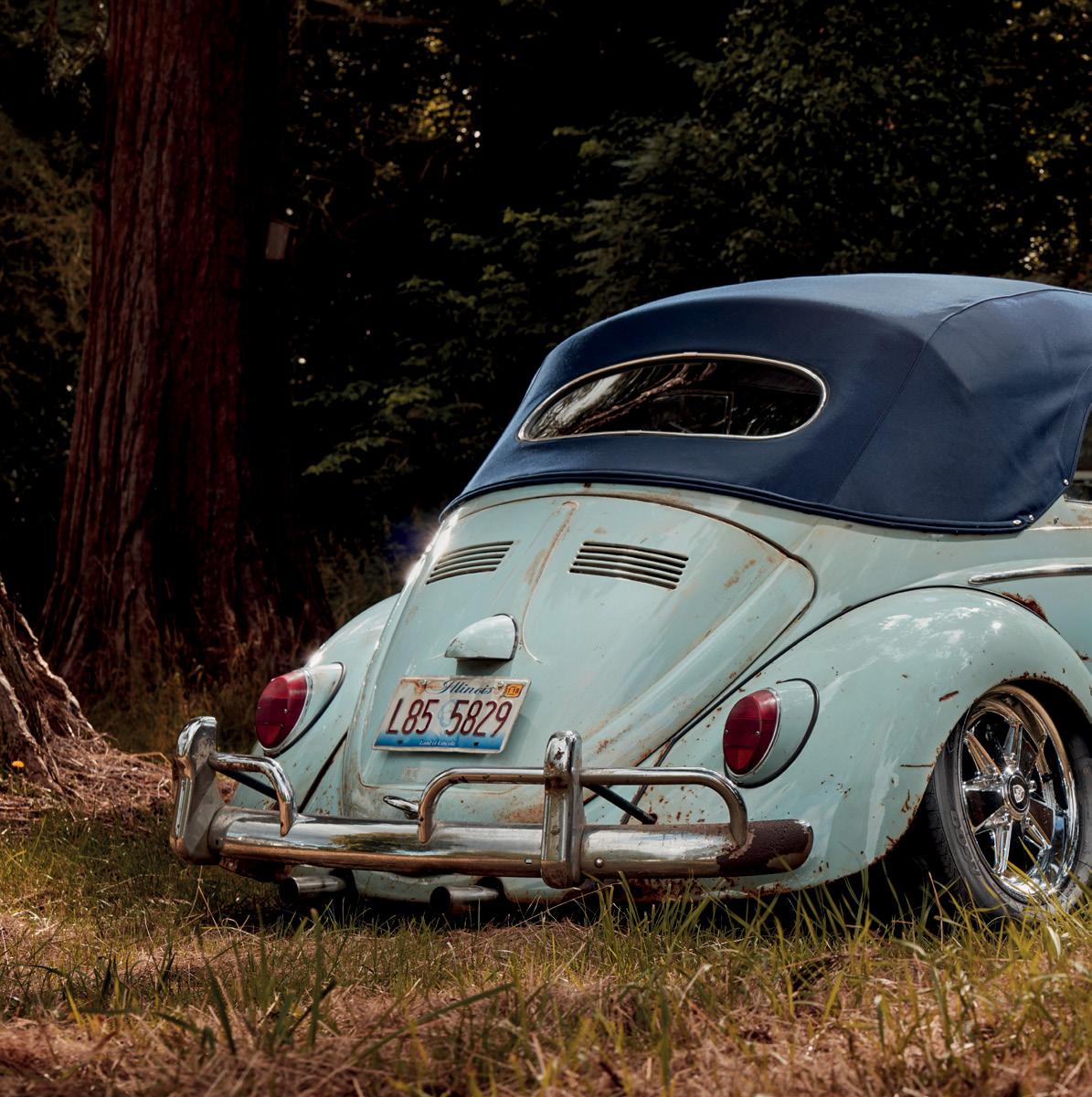
Being a chap who has seen a few birthdays, I wasn’t entirely sure which application was correct, especially in the context of this ’62 Cabrio. I mean, I had an idea (it’s the second one, right?). After all, I’m not totally out of touch with the next generations – which undoubtedly is exactly what someone totally out of touch with the next generations would say. This is nothing new, so I headed off to South London for a much-needed lesson in the modern vernacular, an afternoon of laughs, and to check out the latest VW to roll out of HR Autoworks.
Ordinarily I would kick into the car deets (see, getting the hang already), but there may well be a few of you wondering who? what? where? why? Listen up, Fam, I’ll simplify and allow everyone to be on the same page. HR Autoworks are a LDN (on a roll here!) based workshop. They sprang into life in 2019, and have
gained a reputation for saving some of the earliest and most challenged (that’s screwed to the rest of us) air-cooled VWs out there. There is a defined style: super slammed and saving as much of the original base car looks as possible, which in many cases could have easily been swept up. They have given the established VW scene a kick up the arse by either ignoring or simply not recognising the way things have morphed into a sort of accepted hierarchy. They are doing their own thing without the need to be seen in the traditional way, this being a rare foray into the printed press – it’s all Insta, socials and following stuff that is second nature to the 20-something HR Family. I am sure there is a whole load of mystery and hype surrounding HR, but it’s literally a guy and his mate building cars for themselves, friends, and predominately bespoke customer builds along the same lines. They have

developed a subculture of young professionals who don’t need a slammed Split Bug because of years in the scene, but want one because they see them as cool (I should have said Sik, but after a good start I’m struggling with the narrative now).


Anyway, you get the picture. Run by Jake Hilling and fiercely air-cooled, they have their own niche customer base, who all seem to become good friends. They travel to the Euro events en masse but don’t bother with the crap UK shows that they see as lame. Hordes of T5s, fancy fucking dress and forced fun in the name
of raking in as much dough as possible doesn’t appeal, so with a bit of help from their friends they ignored the established formats and just started their own. Kafernation UK has grown over the last three years into an unmissable event. It’s air-cooled only, it attracts some of the finest, earliest and of course lowest AC VWs from all over the UK, and it is a real team affair with partners, fiancées, parents and friends all pitching in to deliver a fantastic day, without the crappy incumbents that tradition dictates are needed at UK shows, and all for a fiver! That’s right – a fucking fiver!
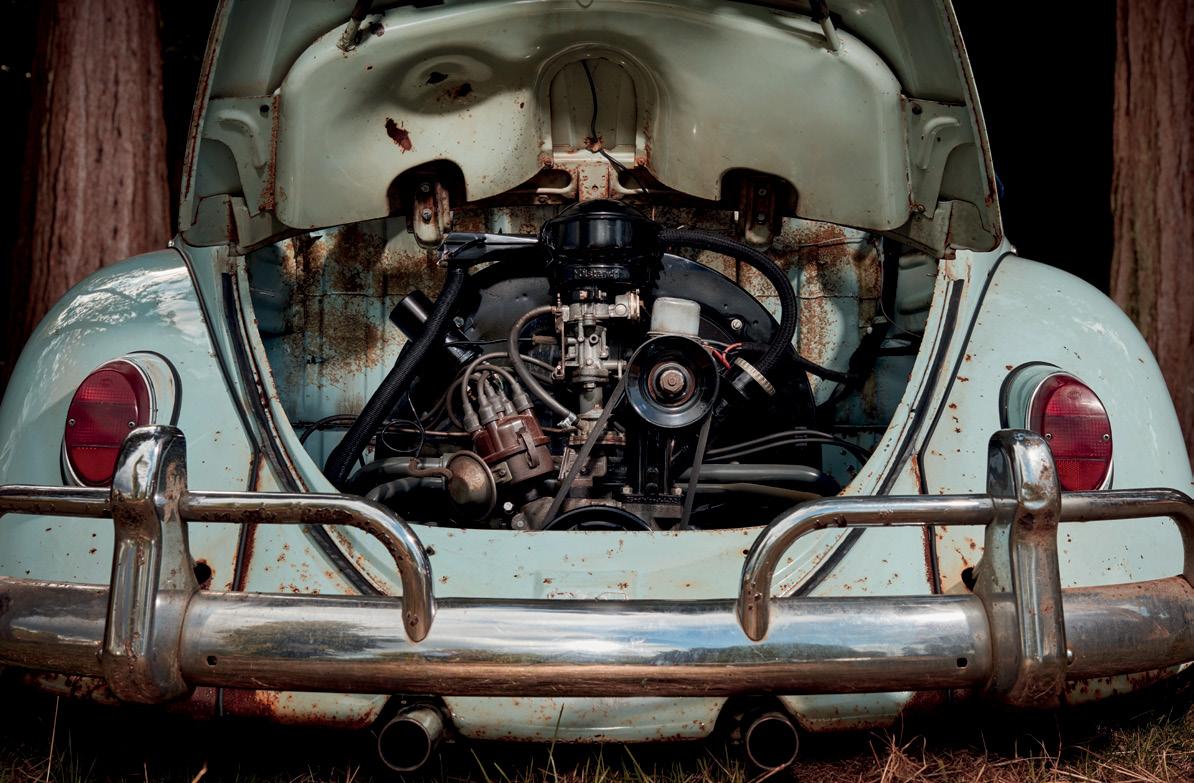
I’ll try and list a couple of Instagram things you can follow them on at the end so you can see for yourselves if socials are your thing – but first, and about time, it’s the main presentation!
If you actually read this stuff you will recall, up there a bit, I mentioned popping round to chat with the owner of this freshly finished Sixty-Two Vert, or something like that, anyway. So, armed with a trusty biro, some paper and a grossly underestimated timescale of 20 minutes, I braved the rain and spent well over two hours mostly laughing in the company of Jake and ex-motorcycle racer, adventurer and diesel destroyer extraordinaire Gary (Hilling).
Yes, Gary is Jake’s dad, but if you didn’t know, you wouldn’t, if that makes sense? You would just think they are mates into the same sort of stuff, which makes for a great afternoon, unless you spend too much time chatting nonsense, forget to take notes and can’t read your own handwriting. C’est la vie – let’s crack on and make do.
This particular L398 Pacific Blue Cabrio left the Karmann factory in July 1962. Resplendent with its blue/green top and silver beige leatherette interior, it was made on the 6th and delivered on the 11th, which must mean delivered to a port of embarkation, as it was then shipped to the USA and that doesn’t take five days, surely? Chicago, Illinois, USA to be precise, where it remained slowly dissolving from the ground up until November 2021 when Jake’s better half Kirby spotted it advertised on the interwebs. The car was in a sorry state, but apart from the missing bottom seven inches retained most of the Cabrio-specific parts that are a real pain to find these days. Gary stumped up the moderate adoption fee and then waited, waited, and waited some more. The reasons why it took nine months to finally arrive in the UK are lost due to ineligible scribble and not paying attention – but it got here in the end, and shipping wasn’t to be the only setback (if I managed to read these notes correctly).



Condition-wise, Gary summed it up in a way we can all relate to: “Proper fucked!, even for us”. Work started immediately and, as we established earlier, Jake and Will @ HR have resurrected the most baskety of basket cases, so they fired up the welder and set about replacing the necessary, and saving as much as possible, wherever possible. Convertibles have their own issues as far as rust and construction are concerned, and once that is compromised some laws of physics have to be observed if the car is ever to be a car again. Obviously Gary wasn’t looking for a Baja, so some laws of slamming were observed, and the critical but deep underside sill strengtheners were sectioned for clearance in preparation for the intended ride height revision. The list of panels used is consummate with a car sat in acid for a while, with the acid creeping up the structure. Obviously it wasn’t in acid, but you get the visual

image. Klassic Fab provided the necessary panels, and Gary was keen to point out that the car had stock pan halves fitted rather than any flat pan mods, and a stock frame head rather than a pie cut. He was also keen to point out that he spent two weekends and a Thursday afternoon working on the car, but I am inclined to take this with a massive pinch of salt, mainly as he was laughing so much. Oh, while we are at it, he also claimed to want his garage space back for his motorbikes, yet was clearly heavily into his next VW project, so I would wager those bikes won’t be returning for a long time.
The car, rot aside, was a weird one – original paint,



filthy but saveable seats, and a badly seized hood frame with nothing but a vague memory of anything more weather proof. The bonnet, decklid and doors were there, likewise the original 1200cc stale air motor, stock transmission, speedo, and crucially the glass, which again is a Cabrio-specific pain if missing, and one which isn’t equal for all Cabs either, as later models have different glass, frames, doors and so forth. With the structure back as nature intended and the repairs blended to the surviving paint in house, it was time to sort the stance out. Eva Resto supplied an 8” narrowed beam, a pair of their 2” kicked and adjustable spring plates, garnished with some dropped spindles and Eva rear shocks (“None

on the front cos we are hardcore Croydoners”, no doubt something Jake will wish I hadn’t quoted him on). Eva Resto are also likely to know what sik means and are also carving out a great reputation. In fact they probably have Insta stuff too, so I’ll throw a link or whatever it is called in at the end so you can see for yourselves.
Pushing cars around soon gets tiresome, so the original motor was fully rebuilt by Grandad Graham. Yes, Jake’s real grandad builds VW motors and a whole lot more. The gearbox received new seals, gaiters, fresh oil and a general spruce up, while various cables were also replaced along with



the stock brake components being renewed as necessary. It was definitely a resurrection build rather than a let’s throw the kitchen sink at it job, but stock works fine, and the same applies to the 6 volt electrics which do their stuff admirably most of the time.
The Cab took a swift three months to finish from skip to driveable car. However, the roof proved to be an elephant in the room on several occasions, and added a lot of time due to supply issues from the US, with quality issues meaning that most of the wooden parts had to be reworked, and a German supplier failing to mention at the point of ordering that the padding material was no longer available. Suffice to say, the
hood experience is not one Gary or Jake are keen on repeating, or Grandad Graham too, for that matter. Graham ended up re-doing a lot of the hood himself after a local specialist in more modern convertible vehicles had initially fitted the new top – it was ok, but Graham thought he could make it better, so he did.
By now you have probably worked out that any vehicle emerging from the HR workshop needs a decent set of rims, and the Cabrio rolls on a set of 4.5” and 6” staggered Flat 4 Fuchs, with 145/65/15 and 205/65/15 tyres, respectively. Gary says it drives great, and as he wasn’t laughing I am inclined to believe him, although he did suggest that difficulties with actually getting

hold of the keys may thwart his forays into Vert lyf.
The car was finally finished just in time to be displayed at this year’s Kafernation, where it caused a lot of interest – early Verts are not only thin on the ground, but they are ultra-cool (even if I say so myself).

So I think that’s about it. I

managed to salvage something from my pages of scribble, a few texts and vague recollections. But as you can see it’s a bad ass car, with a signature look that really has been saved from the scrap pile. Rebuilt with preservation high on the agenda, it’s to be enjoyed, as part of the HR car share, not locked away, which I guess makes it even siker.
Jake wanted to thank Will King, Kirby and Grandad Graham, among others. But it’s technically not his car, so Gary gets the last shout and would like to specifically mention his neighbours, all of whom seem to be profoundly deaf, or to have terrible senses of direction as far as noise is concerned. Finally, a massive heartfelt thanks to Stella’s local
sandwich shop, for keeping the lads fed and watered while they toil on Volkswagens that really should have heard the last rites.

Socials if you fancy: @hrautoworks @kafernationuk @diekafergarage @eva_resto @ geestar32



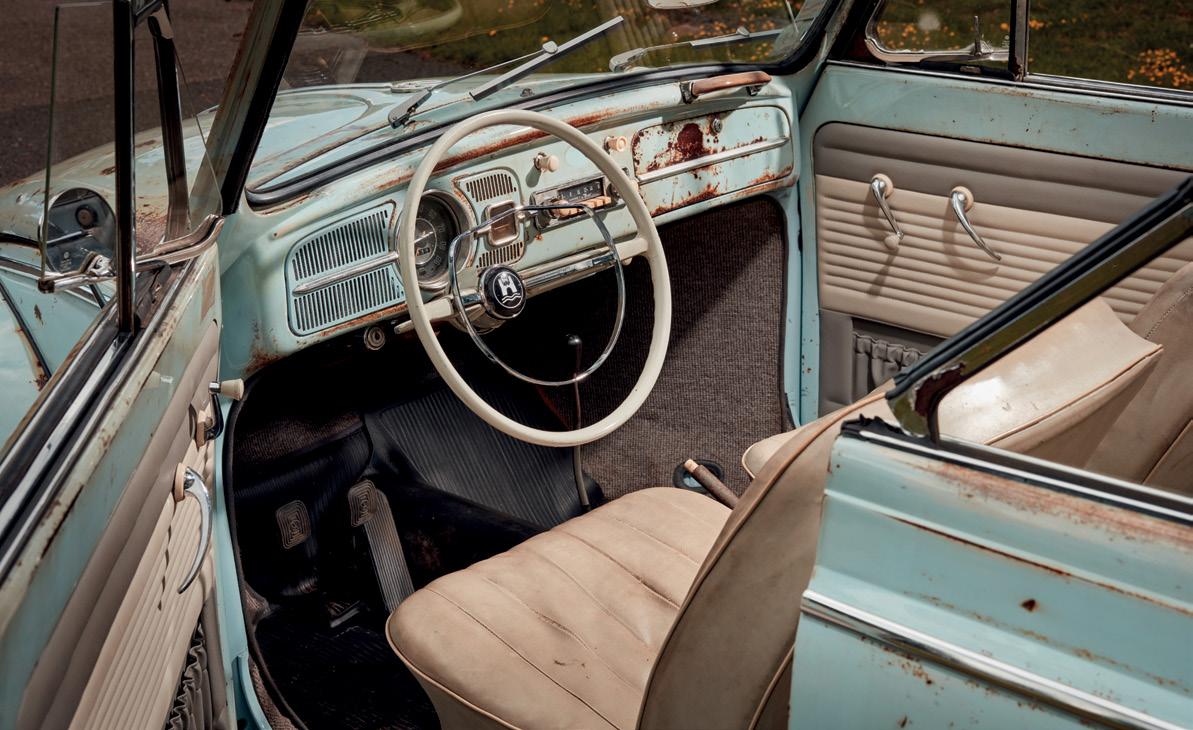

Each one of our front cover images are available in a high resolution, durable and waterproof vinyl banner. Eyelets every corner, hemmed and excellent quality. Perfect for the garage!









Custom Banners & Photographic Prints.
Do you have an image you would like as a banner or want one of our features cars as a professional quality print?
Look no further. Our sister company, Hayburner Print, can produce any high resolution image you have onto the same material as our regular banners or, for of a luxury option on lustre photographic paper.
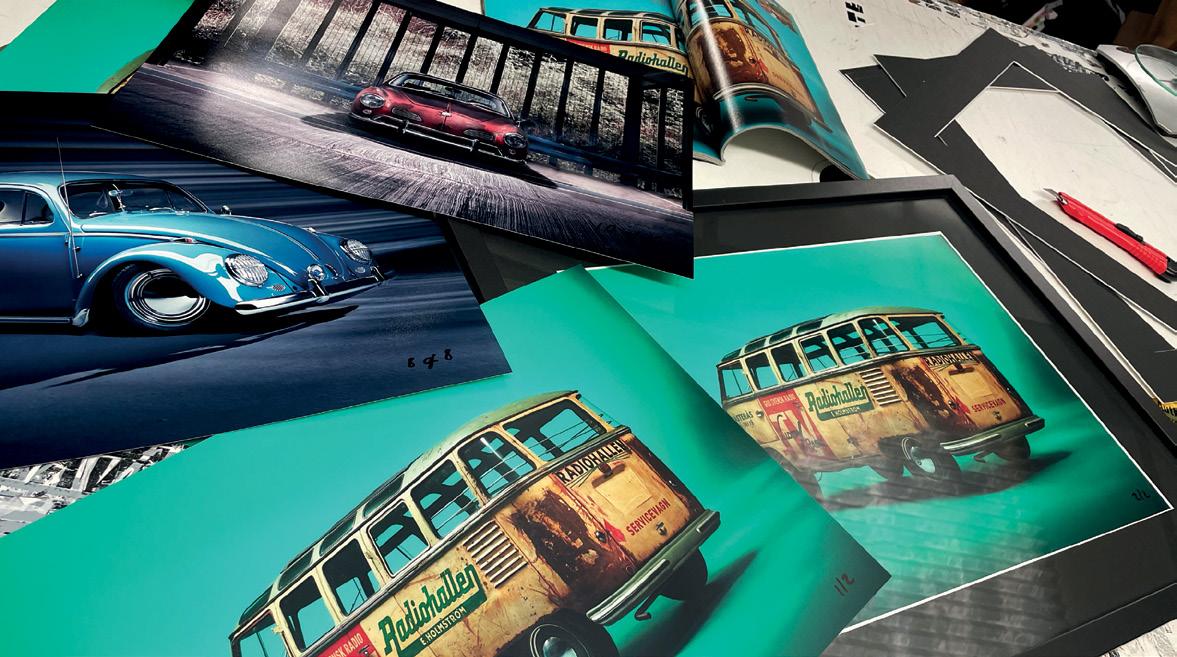


Don’t have an image but love ours? No problem! Please let us know what issue and page number feature car you would like, so we can print it for you with a Hayburner logo.


We aim to produce these banners pr photos (with or without a frame) within 6 working days...sometimes quicker!

We can produce these at any size, or go for our standard Front Cover measurements (800x1140mm) - for only £29!

Or get in touch for your own custom sizeprint@hayburner.co.uk





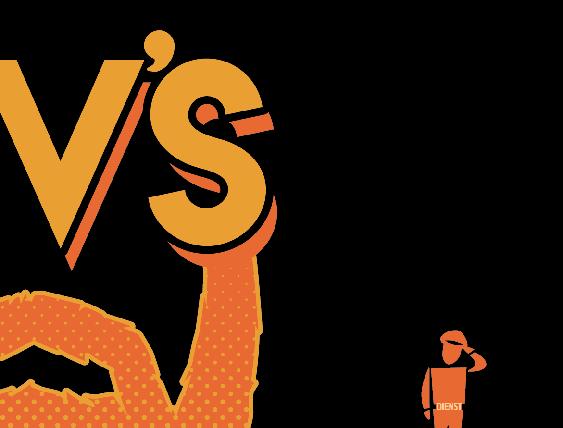












www.hayburnercompetitions.co.uk ! WIN !
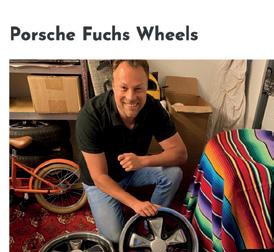






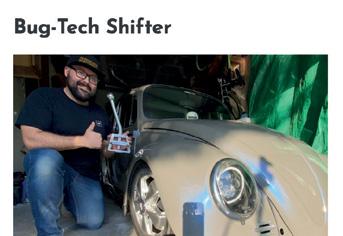


























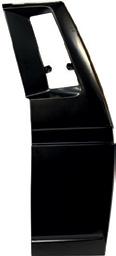








VW Transporter T3 (1.6-2.1 (incl. D)) ‘79-’92 Inner sill, left & right 955745-1 + 955745-2 Rear panel, complete 955765-0 Rear corner section, complete, left & rigtht 955771-1 + 955771-2 Rear cross member, upper 955764-0 Front panel, centre part + lower center part 955723-0 + 955723-1 Locker lid, 474 mm, left & right (T3 Doka model) 955755-1 + 55755-2 Locker lid, 1132 mm, left & right 955755-3 + 955755-4 Tailgates - in 3 variants 955770-0A + 955770-0B + 955770-0C Wheel arch, front, OE style, left & right + right for the T3 Syncro 955733-3 + 955733-4 + 955733-6 DO YOU NEED... highest quality body parts for your Classic VW ® Transporter T3? More parts available - www.jpgroupclassic.com - order at your local shop! 7.500 SPARE PARTS FOR VW® CLASSIC A-pillar, left & right 955721-1 955721-2 Trunk floor plate, rear 955763-1
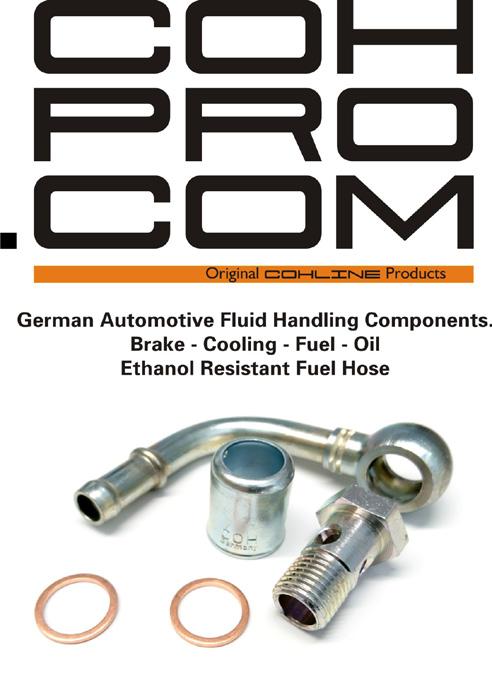



TO ADVERTISE HERE? PLEASE GET IN TOUCH AT advertising@hayburner.co.uk THANK YOU FOR YOUR SUPPORT.
WANT
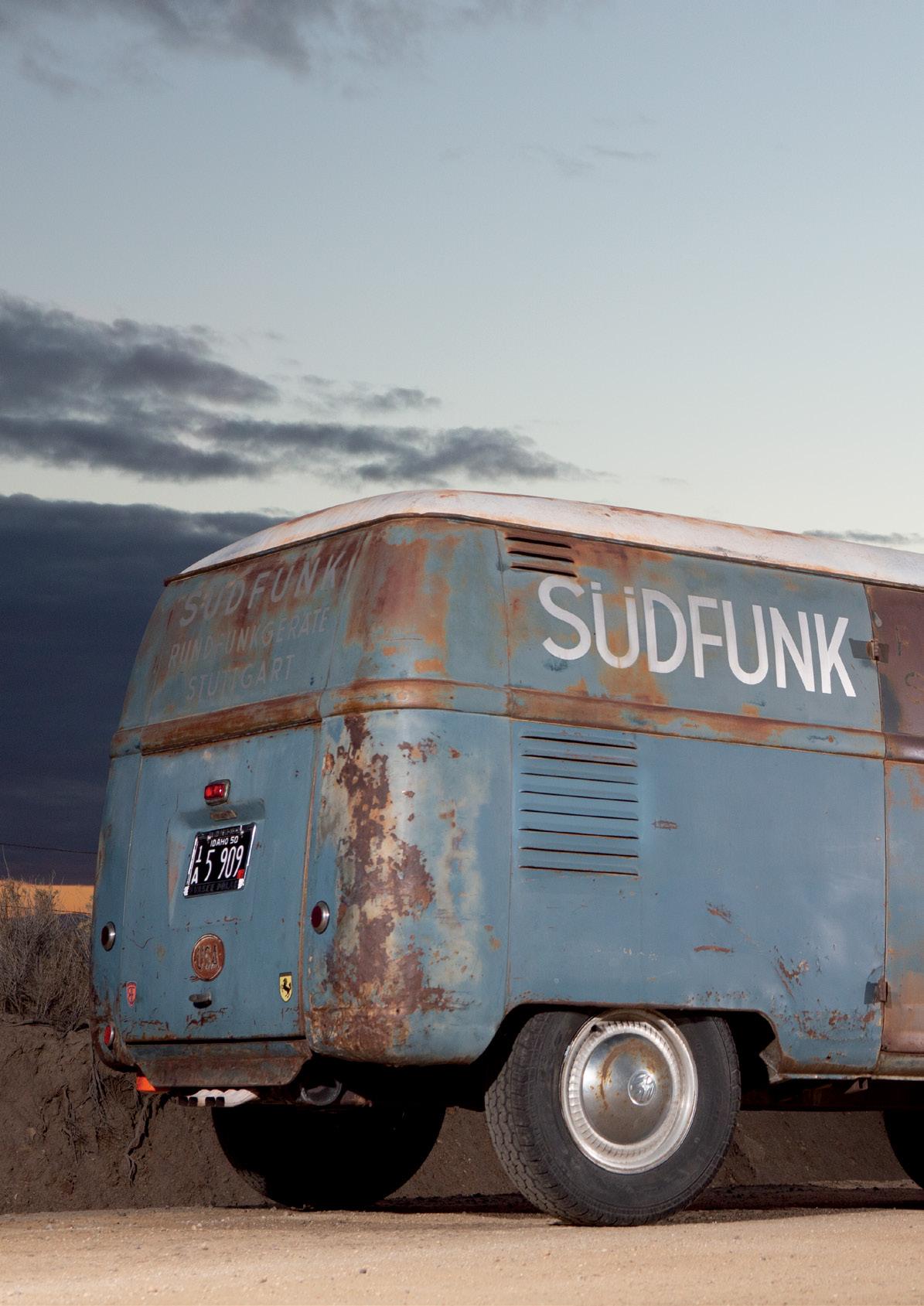

 WORDS BY LIND BJORNSEN PHOTOS BY CHADLY JOHNSON
WORDS BY LIND BJORNSEN PHOTOS BY CHADLY JOHNSON
In my earliest days of researching Volkswagen buses back in the early 1990s, there was no internet. I went to the library and found a book that showed a picture of an early bus with no rear window. It was such a simple look. Ever since then I was mesmerized by the earliest buses, those built before mid-April 1951, which was when VW started putting rear windows in buses. I always dreamed that I would own one.
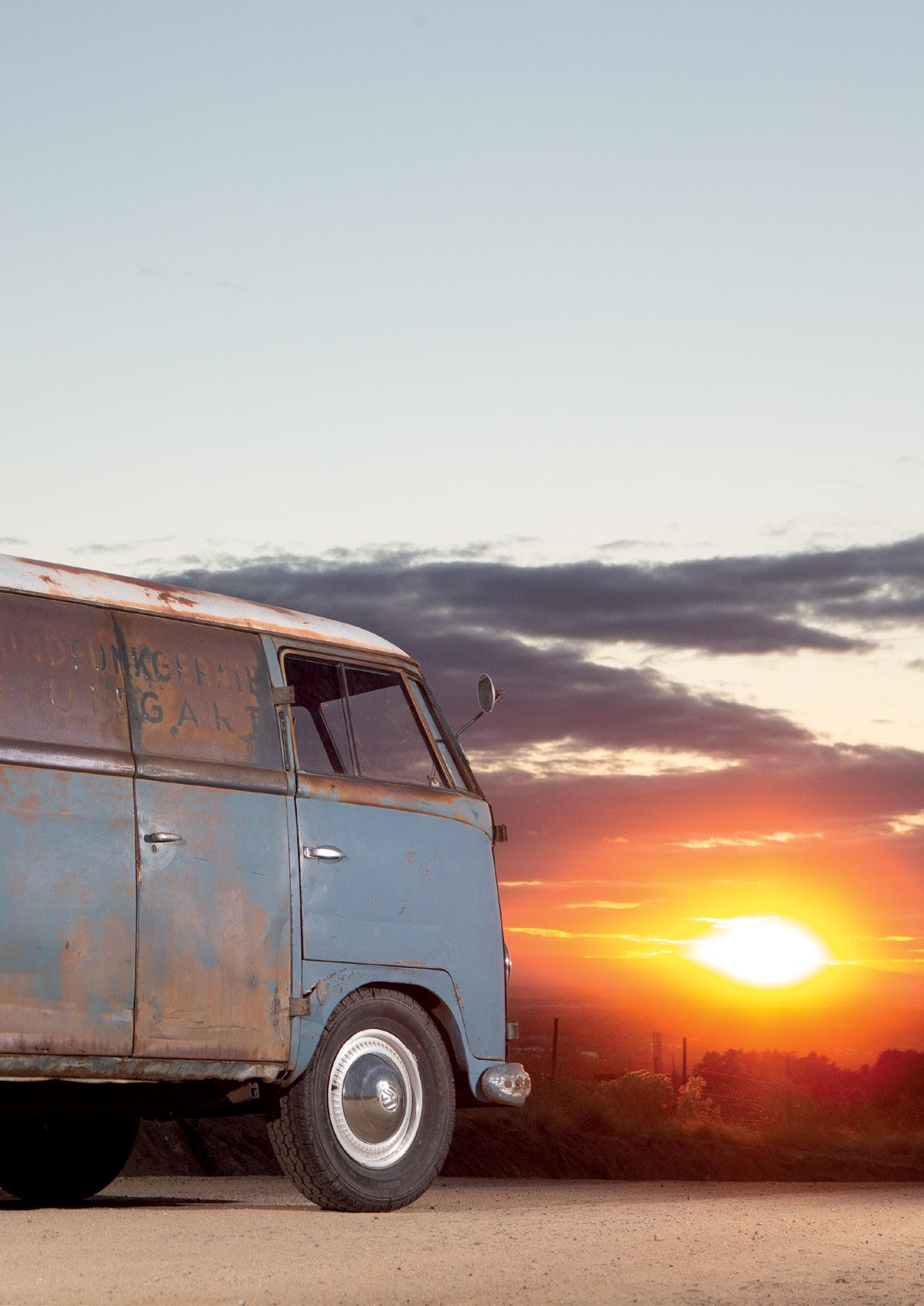
In the late ’90s, I saw some photographs of an early logo’d Panel that had German logos on it and lots of patina. I always wondered what happened to it. Then 2012 it surfaced in the hands of Dick Christensen,

the VW collector from Arizona. He had it put back on the road and took it to the Barndoor gathering at the OCTO bus meet in Long Beach, California. It had plenty more patina than those photos from the ’80s. I wanted it even more than when I first saw those photos, and it was even available for sale. Unfortunately, I was all of the money short of buying it. I watched it get sold, and heard that it was going to live in Gene Langan’s collection in Connecticut. I went on with my life, but the bus was still in the back of my mind.
Fast forward to early 2020. Humanity seemed to be
on the brink of melting down. A plague was spreading like wildfire and the stock market in America had some really bad days. We didn’t know if everything was going to fall apart. Then I saw a post on social media saying that Gene was selling some of his collection at very reasonable prices. SUDFUNK was once again

available. I immediately called Brendan at HolyGrailGarage who was brokering the cars for Gene, and told him that I would like to buy the bus. I didn’t exactly have all the money to buy it, but I could put down a deposit and get the rest paid off in short order. I quickly sold my super-nice ’62 Westfalia camper, and inside a
week SUDFUNK was mine. I didn’t know if the world was going to end for us, but if our world did end, I was going to ride off into the sunset in a ’50 Panelvan with no rear window to look back through.

SUDFUNK came with a legend that it had originally been imported

by the famed Porsche dealer/ racer/tuner Vasek Polak. More on that later, but in the meantime I decided to build it with a nod to him with a 356 theme. For several years, my friend Adam Bruno had been telling me that I needed to put a 356 engine in a bus, and this was now the one. Soon after I got SUDFUNK delivered, I towed

it over to Bruno Enterprises in Spokane, Washington, where I told Adam to put a 356 engine into it and update the rest of the suspension as well. We spent four months collecting parts while the pandemic raged on. Things started to ease up a bit and OCTO was scheduled to happen in October, which would be the first VW
show in southern California in six months. It was going to be huge, so I called up Adam and asked him if he could build the bus in time for OCTO, which was just a couple of weeks away. Adam made a hard push on the bus build and spent 12 days start to finish. He put ’55–62 bus springs in the front axle, 356A front brakes, a

1963 M216 bus transaxle with 1.26: reduction gears through a 4.12 x 0.82 transmission. For the power plant, he installed a 1961 Porsche 356 engine with an SC cam, big bore pistons and Weber 40 IDF carbs with a custom one-off muffler with four exhaust tips from a 36hp bus. All told, the package would push the bus at speeds of up to 85mph (135kph). It would comfortably cruise at 75mph (120kph). After a short test drive, Adam drove the bus to my home in Boise, Idaho, and we drove it down to Long Beach, 1400 miles south of Spokane. SUDFUNK was well received at OCTO. It was almost like nobody had seen

a “sleeper” stock height Barndoor bus that could keep up with traffic.


SUDFUNK has a distinct look. The bus is still wearing its original paint and original logos, and those logos tend to make people remember it. Once photos of its appearance at OCTO started flying around the internet, a previous owner named Ralph Jackson reached out to me and told me what he knew about it, which was plenty.
Ralph was living in Manhattan Beach, California in
1964, where he would walk to school past a Porsche dealership at 356 Sepulveda blvd. which was owned by Vasek Polak. He was looking through the fence at the Porsches when Vasek came up and asked him if he liked the cars. Vasek went on to hire him as lot boy doing various jobs around the dealership. Every year, Vasek would take his summer vacation to Stuttgart, Germany to visit his friends, the Porsches and their little car factory there. On these trips, Vasek would mix business with pleasure and buy a VW bus and stuff it full of parts and ship it home to the dealership.


The thrifty Czech that Vasek was, he would buy the cheapest running bus that he could find to use as his shipping container. In the summer of ’64, it was a 1950 Panelvan that had been previously used by the radio manufacturer SUDFUNK in Stuttgart. Back in Manhattan Beach, Ralph was tasked with unloading the cargo from the bus, which included a six-cylinder Porsche engine and four more 4-cam Carrera engines and bunch of Porsche race parts. The legend was true, and I had found the guy who was there to tell me about it.

Ralph was ahead of his time, and had damn good taste. By the time he graduated from high school he had owned four different Porsches. He saw something in the old transporter, and asked Vasek what he was going to do with the now empty Panelvan. Vasek said that he was going to scrap it out. Back in ’64, a ’50 bus was the most worthless one you could imagine. It had an anaemic 25hp engine, a full crashbox transmission and no rear window. There was no way that Vasek would even sell it on his lot as a used car because it would just be a waste of space and possibly give his dealership a bad

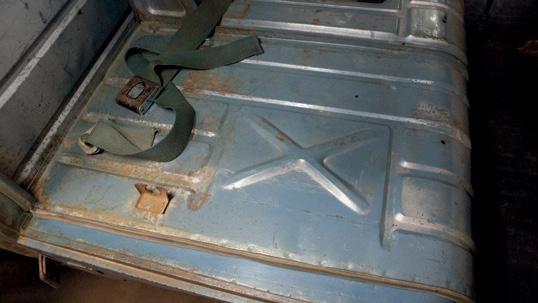






name. The new buses on the lot had 1500 engines and lots of visibility, with the biggest rear window that any Split bus ever saw. When Vasek said that he was going to scrap the bus out, Ralph asked him how much for the bus, and Vasek told him $50 and that he would take it out of his paychecks. Ralph would go on to drive it throughout high school, and it was used as the family grocery getter. He ended up selling it to an independent Porsche mechanic, Karl Schreiber, who would use it as his shop truck for a few years until he sold it to another fellow, Eberhart Fengler, who would also drive it from around 1969

until the early ’90s. Eb worked at a variety of VW and Porsche shops in the beach towns around Los Angeles, and would frequently drive SUDFUNK to the Pomona swap meet in the early ’80s. Eb would go on to sell it to Dick Christensen in 1999. Throughout the history of the bus, the distinctive logos would make people remember it. I had half a dozen people who had connections to it reach out to me and tell me stories about the bus and its colourful owners.

Throughout its life, the bus got lucky. It got bought by Vasek and shipped to the dry climate of California. Ralph saved it from the scrapper. Eb wanted to

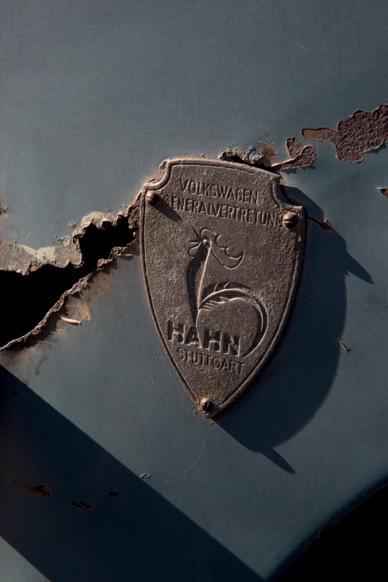
restore it, but never did. Dick just did a mechanical restoration and did not repaint it. Gene preserved it and passed it on, and that is where I got lucky enough to be able to buy a dream bus for my collection, a no rear window Panel. Luckily, nobody ever got it into a paint booth, because it would have lost all of its character and become just another restored Panelvan.
The bus has plenty of patina. It got a three-tone paint scheme when it was originally in service in Germany, but the California and Arizona sun had faded off most of the darker blue above the beltline

and brought it back to original paint. The white paint of the roof still remained largely intact. The lower parts are not particularly rusty, and the rocker panels are original, and very little rust repair has ever been performed on the bus. Being a Panelvan, it was loud and not particularly comfortable inside when I would sleep in it at various shows, so I decided to take it to

the next level and make it a camper. I had a couple of photos of the first Westfalia camper, which I took to my local master cabinet maker and bus enthusiast, John Bowers. He would recreate the camper kit in my chosen woods of black walnut and Baltic birch. Chip Knight made the bed cushions out of material that was a very close match to the


pattern on the original material in the pictures, and my mom, Jinks Hunter, sewed up some curtains in the tartan material chosen by my love, Carrie Padilla. The result was an amazing recreation of the camper kit which has been lost to time in the earliest Westfalia campers.

Out of the 8000 buses built in the first year of

production, there are less than four dozen of those 1950 buses known to exist today. By the time people realized that they were special and important, it was too late – most of them were gone. Those that remain are generally considered restorable in any condition. One by one, they get restored. But SUDFUNK remains with its original finish and fancy drivetrain and cosy camper interior. SUDFUNK gets driven regularly, having covered over 10,000 miles (16,000 km) since it got back on the road in 2020. I have driven it on a couple of trips to California, and I always visit my new friend, Ralph, in Gualala on the coast. I have learned through this life and journey that buses are fun to drive, but that the people that we meet through them are amazing and special.

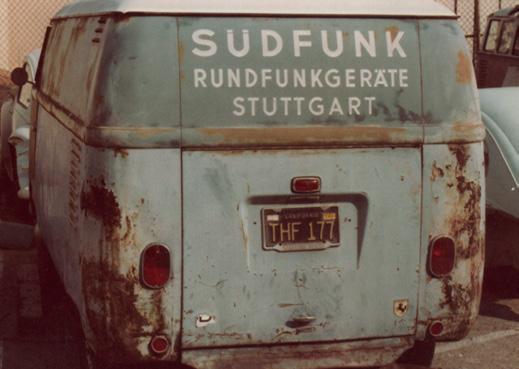 The earliest known picture of SUDFUNK shows it in an alley in Manhattan Beach, California in 1965.
SUDFUNK sitting out behind a VW shop in Manhattan Beach, California in the 1980s.
The earliest known picture of SUDFUNK shows it in an alley in Manhattan Beach, California in 1965.
SUDFUNK sitting out behind a VW shop in Manhattan Beach, California in the 1980s.


WANT TO ADVERTISE HERE? PLEASE GET IN TOUCH AT advertising@hayburner.co.uk THANK YOU FOR YOUR SUPPORT.
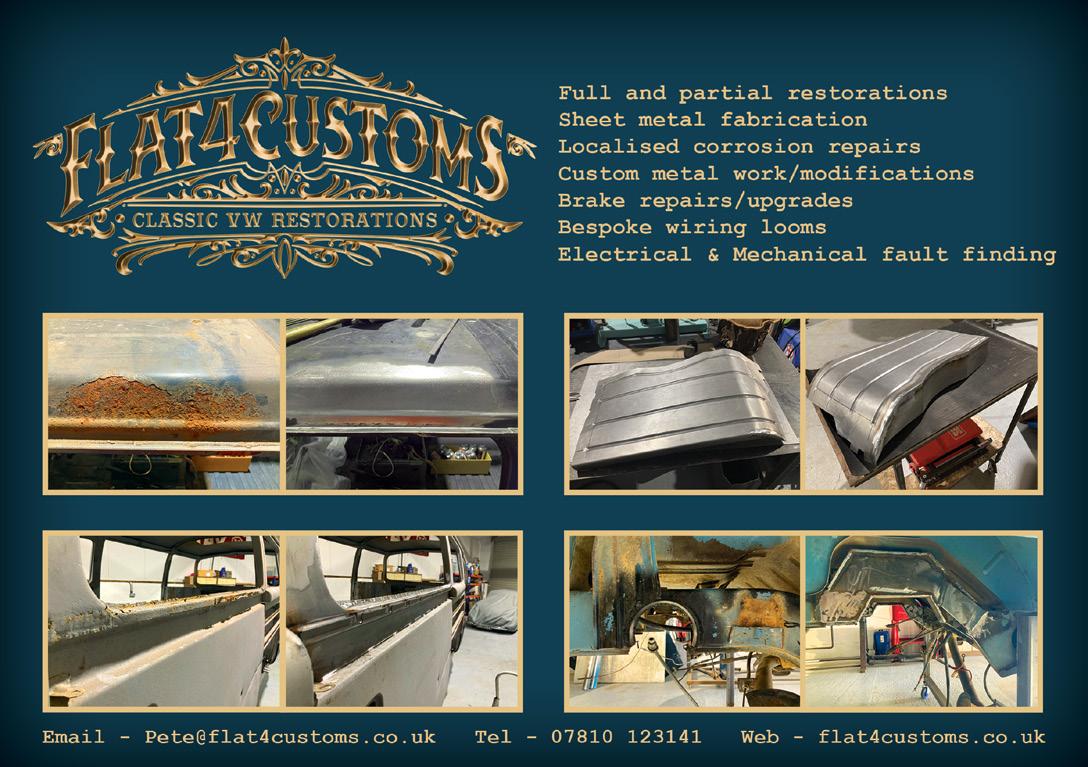



WANT TO ADVERTISE HERE? PLEASE GET IN TOUCH AT advertising@hayburner.co.uk THANK YOU FOR YOUR SUPPORT.
SUBSCRIBE - 4 ISSUES PER YEAR - WORLDWIDE




WANT TO ADVERTISE HERE? PLEASE GET IN TOUCH AT advertising@hayburner.co.uk THANK YOU FOR YOUR SUPPORT.


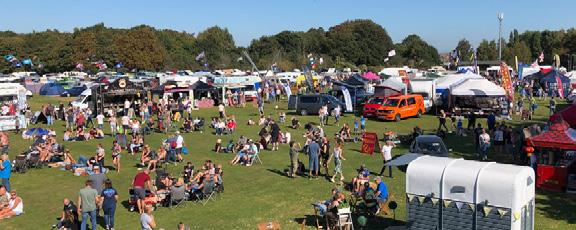

2023 15th-17th Sept 2023 Parklands, Wheatley Hall Road, Doncaster, DN2 4LT What’s On? * Live music all weekend * * Weekend camping * * Show and shine competition * * Free Autojumble * * A wide variety of traders * * Great value food and drink * CLIVE: 07580 040212 BEN: 07730 362277 Look us up on FaceBook! Show Proudly Sponsored by: www.doncastervanconversions.co.uk Livemusic weekendall Day tickets only £10! Weekend tickets from £30!











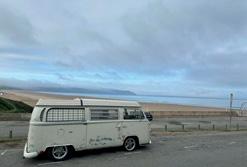
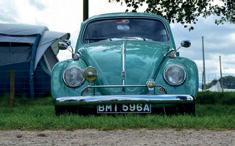


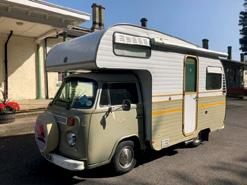


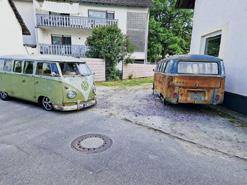
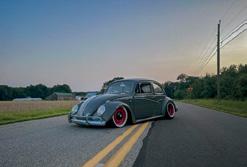


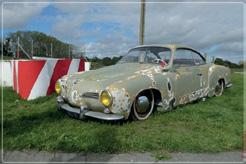




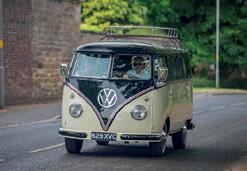















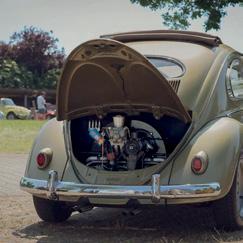

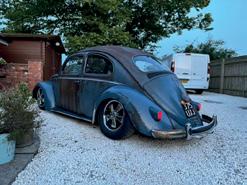














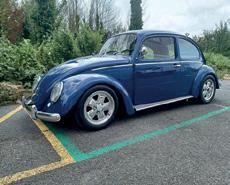

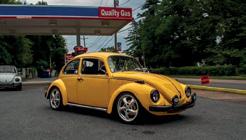




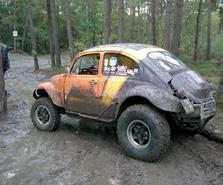



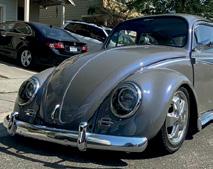

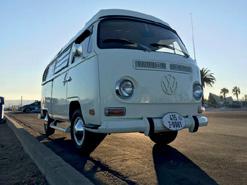
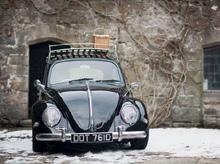
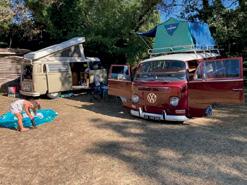





















Just now as I started to type this I noticed a couple of drops of blood on my keyboard. You see, Hayburner HQ office is above my workshop, so it’s not unusual for me to say, “Dan, could you just nip down and give me a hand with this?” (Dan also works in the office). On this particular occasion, I needed help with freeing the steering knuckle off my 74-year-old steering box. It’s a job that after soaking for a few days in penetrating oil requires just enough heat and force to free from the spline, but not so
WORDS BY NED FAUX
much that you’re going to damage it. Let’s face it, I’ve not done a proper intense rusty project since recommissioning Shuvarda (my ’56 Kombi) at the end of lockdown, and Ewan’s Panel was a different kettle of fish, being all new stuff, so my hands have slowly become middle-aged “office boy” hands and they have been taking a real bashing – hence the blood on my keyboard.
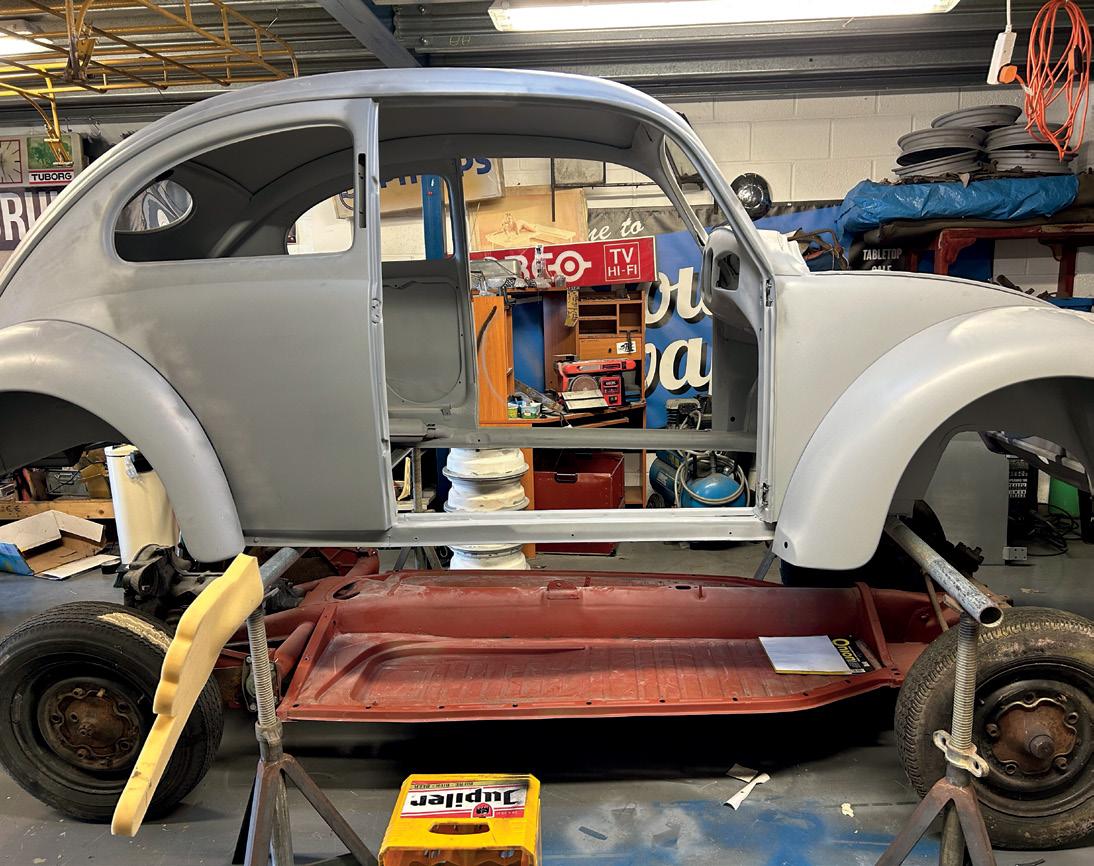
I’ll start where we left off last issue. I’d been up to Cumbria to see the project at Irv’s

Restorations and was happy with the progress. Irv set about doing as I asked and filled various holes in the body that weren’t there from factory and also began work on the roof. The roof turned out to be a bloody nightmare. It was so twisted it required rejigging door gaps to get the correct profile (it’s easy to forget just how fucked the roof was). Another spanner in the works was that, while rodding the conduits inside the chassis spine, one or two were so corroded you couldn’t get anything through. This made

Irv concerned as to what was going on corrosionwise inside the tunnel and he went to the effort of unpicking the entire bottom plate of the tunnel and putting right what needed attention. All in all, I know that even with my experience and Irv’s, the project had worked out to be a massive amount more work than either of us ever expected. With the work being paid for as part of a convoluted deal where cars and cash were changing hands between us, it’s not easy to keep things simple, but what with Irv being a man of his word, we’ve managed to stay friends and I think both of us have come away happy.



The day then came to deliver the car back to Hayburner HQ. One of the Irv clan turned up with a box trailer. He seemed particularly excited to see Nell (our print coordinator), but was then disappointed that she was on holiday. After the car was offloaded, I decided to stick the shell on some tall axle stands and scaffold bars high enough that the pan could be rolled underneath to be worked on and save me a car space. I was pleased to see that every bolt had been fitted pan-to-shell. Even though I was going to have to undo them all, it’s nice to see that they’re all





in the right place so no unwanted surprises when you go to mate the body with the pan at a later date. I’m very happy with Irv’s work. I’m actually really proud of the amount he has managed to save. I’d say the car has returned just how I wanted it. There’s still parts of the body I need to finesse, but the structure is now straight and sound.



Since the car came back I’ve not been able to leave it alone. Every time I walk past it I see a job that needs doing, and the old parts that came with the car all need work. I’ve decided to start with the pan and running gear. Irv sent the main shell, spine and pan halves back in primer. Everything else I have for the car is as it was when it was dragged from the woods. I started with the easy part. I got the pan from underneath the car, took all the rusted old running gear off, and treated it to a coat of fresh satin black. I then fitted heater, choke and the clutch cable. It might seem a bit premature to start fitting cables, but if I’m honest I was getting sick of tripping over them in my office. I also set up the gear shifter, freed the rusted shift rod and extracted the broken bolt in the knackered rear coupling. It’s a good example of the type of thing that eats up your time on a project like this. One sheered bolt can turn a five-minute job into a 10-hour ordeal, and when you’re attempting to recondition every single component on a 75-year-old car that’s spent over half its life sitting in the woods, there are a lot of sheered and stripped bolts to deal with. Please understand, these August pre-’49 vehicles have the equivalent differences to a Barndoor and a 60s Split Bus. Yeah, they look the same, but pretty much every component and panel are incompatible. So when I find out I’m missing this or I’ve broken that, it’s not like I can ring a parts dealer and have it here for the morning. I have to phone around friends in Germany or ask around Facebook. This is why I’m going to such lengths to save what I can from the original car.
I then started work on the front beam. I removed it and started to strip it down – what ball-ache! Believe it or not, the axle was so seized and bodged it took three men the best part of a day to strip



it down completely. The beam needs rust repair, dismantling the drums and backing plates was a chore, a cable brake part’s missing, shoes require relining and one drum is scrap. I considered trying to source another beam, but I could only find one and it was 5,500 Euros which is around half of what I paid for the project in the first place. I think the high price tag comes with the beam being shared with KDF cars and Kubelwagens. These cars are in a completely different league, a league I don’t think I’m ready to play in. With this in mind, I’m definitely going to repair what I have. The axle has been hit with the wire wheel and is awaiting welding. I managed to salvage the arms. Even though all the grub screws had been welded to them, there were no broken leaves, the tie rods straightened nicely and the spindles seem serviceable.
I have also been working through the cable braking system. This is my first car with mechanical brakes, and although I understand the concept it’s actually fascinating to learn how they work. It’s such a simple and effective system. I’m waiting on a couple of washers and a spring from WW2VW in Germany and the cables from BBT in Belgium – oh, and a drum from Sweden. When I get it all here I will lay out the components and explain exactly how it works. I might even do a little YouTube video (check out HBTV).










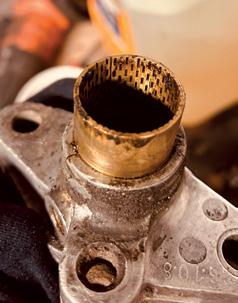
Drummer Matt popped over and got through a little welding list I had, including the front seat mounts. I’ve also got my fuel tank repaired and my wiper motor fully rebuilt, and Lew was kind enough to extract the rear torsion bars from my spring plates – apparently taking a sledge hammer and 12 tonnes in a press! I rebuilt the steering box and I’ve got both window winder regulators working as they should. I’ve carried on buying little parts in an attempt to pay for it bit by bit when things come up for sale. I’m trying to do a little bit every day after work.
Reading through all this, I’m actually quite proud of the progress. Don’t get me wrong, it looks a lot more finished than it is. There’s a mountain to climb yet –gearbox build, engine build, paint,




electrics, upholstery, etc. I foresee it taking a good couple of years to complete. Talking of paint, I got a visit from my friend Steveo from Double H restorations. He spent a good amount of time looking at the shell in primer and I explained how I wanted it to be. It’s difficult to explain to a painter (especially one as talented as Steveo) that you kind of want a shitty paint job. I really don’t want to fill every defect. The car is what it is and it wouldn’t have even been that nice when it left the factory. It has areas that are pitted and little dents. I want it left alone. If one day I feel the need to give it a full restoration, then I can. I think
Steveo gets it. It’s really the main reason I asked him to come and look in the first place. Anyway we’ve booked a rough date and I’m going to muck in at his shop for a week so we can get it done together. I’m looking forward to it.

I think this brings me pretty much up to date. On a personal note, I’d forgotten how good it is to have an in-depth project downstairs that I’m doing for myself. Those couple of hours to myself here and there are something I’d really missed. Working on the car, although sometimes frustrating, is good for my fitness when I’m sitting in front of a computer all
day, and more importantly for my mental wellbeing. I’m ashamed to say that even though I have a wonderful life I’m still prone to bouts of depression and anxiety. This project has really given me some focus. Actually resurrecting a car is something I think I’d lost sight of over the past three years and it feels great to have that feeling back. I guess what I’m trying to say is, life is tough for everyone, especially with the UK changing as fast as it currently is. There’s never been a better time to call a friend or take a bit of time to yourself, get in the garage and get dirty. You never know –it might be just what the doctor

ordered.



As always, I want to say a huge thank you to everyone who has ever subscribed, advertised, supported, contributed, put a sticker on their car
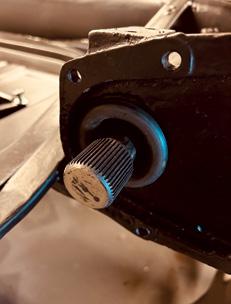
or represented us with a T-shirt. We are lucky to have you. As long as you enjoy reading, we will keep writing it. Thank you all for being a part of it.
Ned







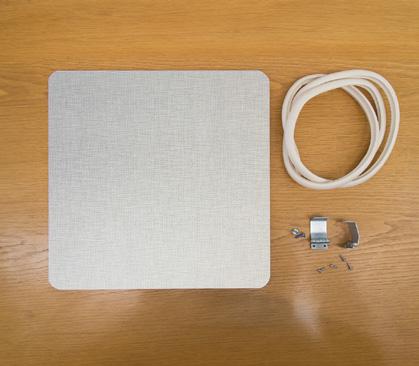
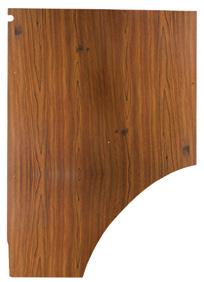









Enjoy 15% off our interior wood range at www.nlavw.com Offer valid until 31.10.2023. Includes laminates, laminated interior panels, range of tables and storage box seats. New Old Interior Specialist manufacturers of obsolete Volkswagen parts NLA VW Parts www.nlavw.com | enquiries@nlavw.com | 0044 (0)1789 774567 N OLONGERAVAILABLEVWPART S Westfalia laminated interior panel sets for Berlin and Helsinki New panels now have a layer of laminate on the inside as well to improve the durability
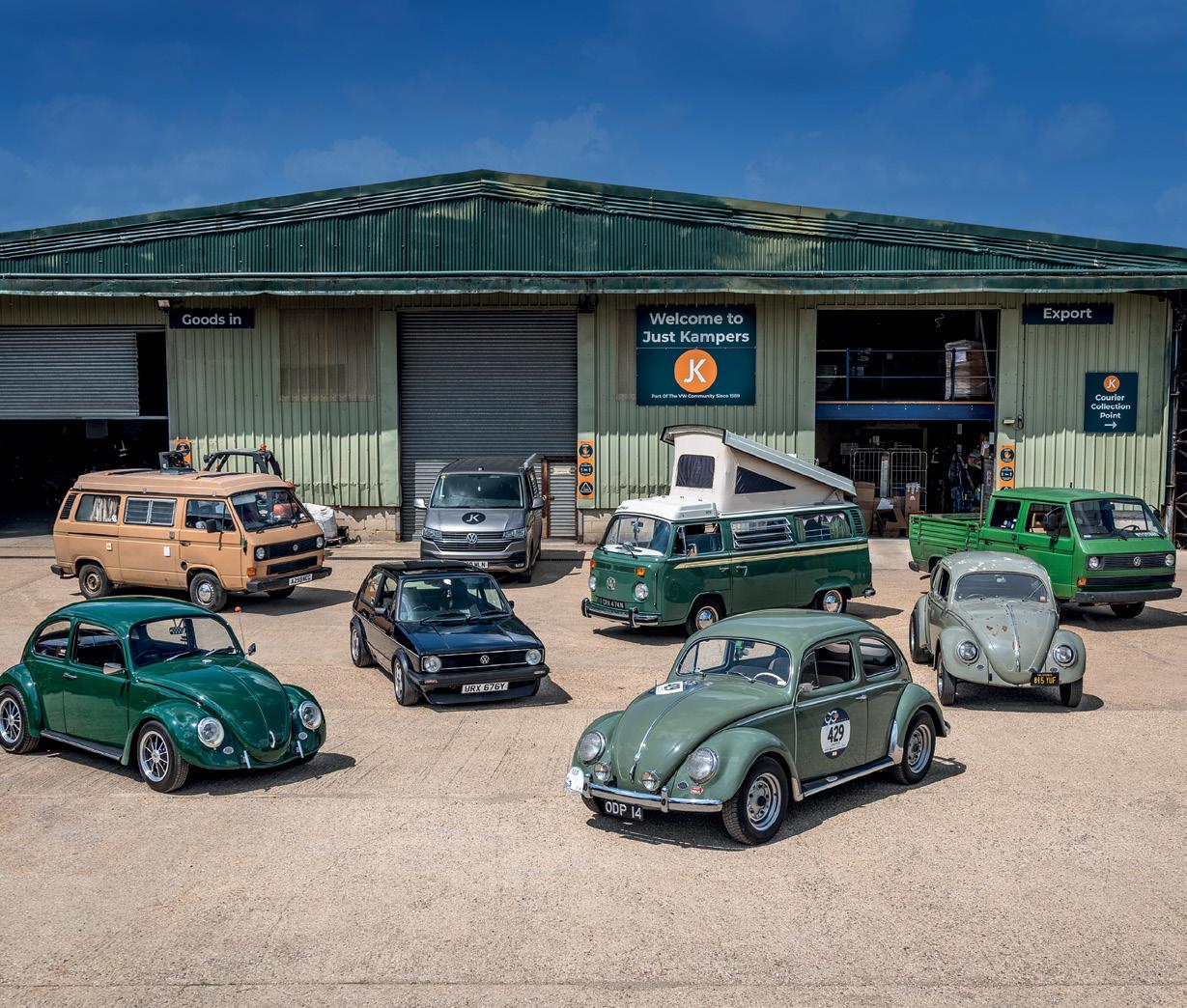









*Find out how we can help More than just another online VW Shop justkampers.com 10% …and save at the JK Shop* visit us at justkampers.com, or speak to the team on 01256 86 22 88 justkampersinsurance.com • £50 Price Promise* • Agreed Value* • Quote and buy online* • £2,000 Contents Cover* Specialist VW Insurance from £99… JK Staff Rides: We parked up some of our VWs in the yard outside JK HQ for Drive Your VW to Work Day this summer. Air-Cooled Cars Camping Conversions T2 Split T2 Bay T25 T4 T5 & T5.1 T6 & T6.1









































































































































































































 WORDS BY ZILCO LIGHTENING
PHOTOS BY JAMES RUDLANDR
WORDS BY ZILCO LIGHTENING
PHOTOS BY JAMES RUDLANDR








































































































 WORDS BY BENJAMIN MICHEL PHOTOS BY HOWYGRAPHX
WORDS BY BENJAMIN MICHEL PHOTOS BY HOWYGRAPHX




















































 WORDS BY TIM CARROL PHOTOGRAPHS BY CHRIS DE LA MARSCHE
WORDS BY TIM CARROL PHOTOGRAPHS BY CHRIS DE LA MARSCHE

































































































































































































 WORDS BY JAMES PEENE PHOTOS BY DANIEL NORTON
WORDS BY JAMES PEENE PHOTOS BY DANIEL NORTON






















































































































 WORDS BY STEVE WALKER
WORDS BY STEVE WALKER































































































































 The earliest known picture of SUDFUNK shows it in an alley in Manhattan Beach, California in 1965.
SUDFUNK sitting out behind a VW shop in Manhattan Beach, California in the 1980s.
The earliest known picture of SUDFUNK shows it in an alley in Manhattan Beach, California in 1965.
SUDFUNK sitting out behind a VW shop in Manhattan Beach, California in the 1980s.










































































































































































